Really Big Bike Ride
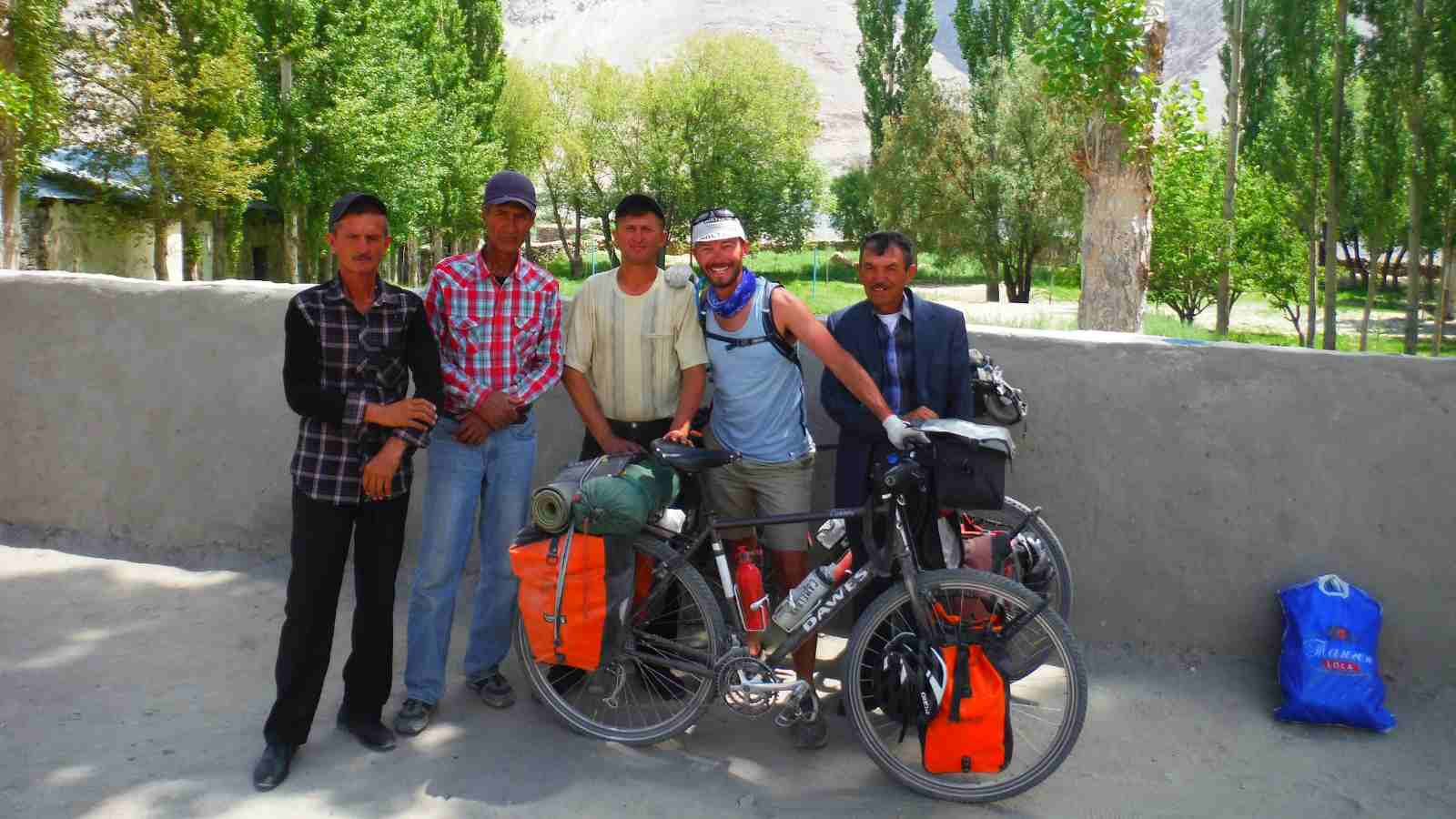

Bicycle Touring Tips, Bike Life And Travel Advice From A Decade On The Road
The distilled wisdom of ten years of bike touring life, cycle touring tips and travel advice from hard-earned miles around the globe.
This article documents my bike touring tips from extensive bicycle travels around the world.
Whether you’re a veteran long-distance cyclist or a bicycle touring beginner , this blog post is here to provide you with invaluable bicycle touring tips, bike travel advice, and bicycle touring inspiration from a decade of bicycle trips.
From getting started as a cycle tourer to choosing the right gear. Overcoming fears and avoiding common mistakes, we’ve got you covered.
In particular, the bicycle touring tips we’ll cover include:
- Beginners Guide To Bicycle Touring
- Bike Set Up for Cycle Touring
- Unsolicited Bike Touring Advice
- Reasons To Go On A Bike Tour
- Who Goes Bicycle Touring
- Is Cycle Touring For You?
Bike Trips We’ve Tried and Loved
- Common Mistakes and Bikepacking Fails
What To Pack On A Bike Tour
- How To Travel With A Bicycle
- How To Budget For A Bike Trip
- Overcoming Fears (Just GO!)
- Inspirational Bicycle Touring Tips (Final Checklist)
But first things first – let’s dive into how to get started as a beginner in cycle touring.

Bicycle Touring Tips And Bike Touring Advice
Getting into cycle touring as a beginner.
Getting into cycle touring as a beginner can be both exhilarating and overwhelming. But fear not, because, with the right mindset and a few key tips, you’ll be well on your way to becoming a seasoned cycle tourer in no time!
Start by choosing the right bike for your adventure. Look for a sturdy, reliable bicycle that is comfortable to ride for long distances. Consider factors such as frame material, tire size, and gear options based on the terrain you plan to conquer.
I chose the Dawes Galaxy because we got a great deal from Spa Cycles . I chose steel because it’s tough yet flexible and easy to repair anywhere in the world with a basic fabricator. Also for our charity bike ride around Europe, we knew it would be the best type of touring bike.
Get fit on the bike
Next, it’s important to gradually build up your fitness level before tackling longer tours. Start with shorter rides close to home and gradually increase the distance over time.
This will not only help prepare your body but also allow you to test out different equipment and make any necessary adjustments along the way.
I commuted for years before I got near a heavy touring bike . I tested kit and found stuff I liked and got used to long hours in the saddle.
Remember, cycle touring is all about embracing the journey rather than reaching a specific destination. So take it slow, enjoy the scenery around you, and most importantly – have fun!
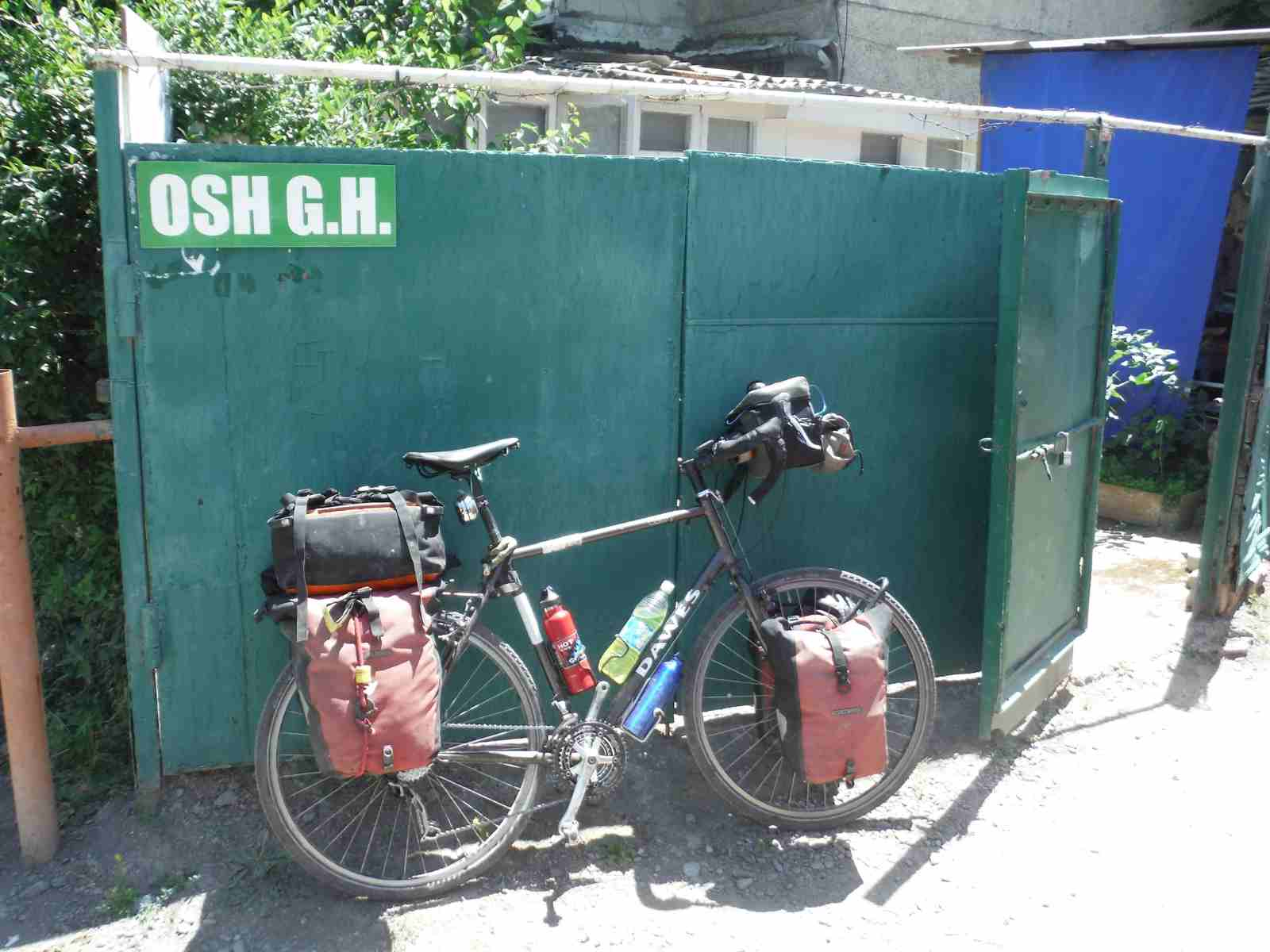
Our Bicycle Touring Tips For Bike Set Up
When it comes to bike touring, having the right set-up is essential for a smooth and enjoyable journey. Over our decade on the road, we’ve fine-tuned our bike set-up to meet our specific needs.
Our bikes are equipped with sturdy Tubus racks that allow us to carry all of our gear without compromising stability. We also use Ortlieb pannier bags that attach securely to these racks.
Front and rear panniers provide ample storage space for clothing, camping equipment, and other essentials.
Additionally, we have invested in comfortable bicycle touring saddles and double-wrapped bar tape to ensure long hours on the saddle don’t leave us sore or fatigued.
A well-thought-out bike set-up can make all the difference in your cycling adventure. So take the time to find what works best for you and your needs before hitting the open road!
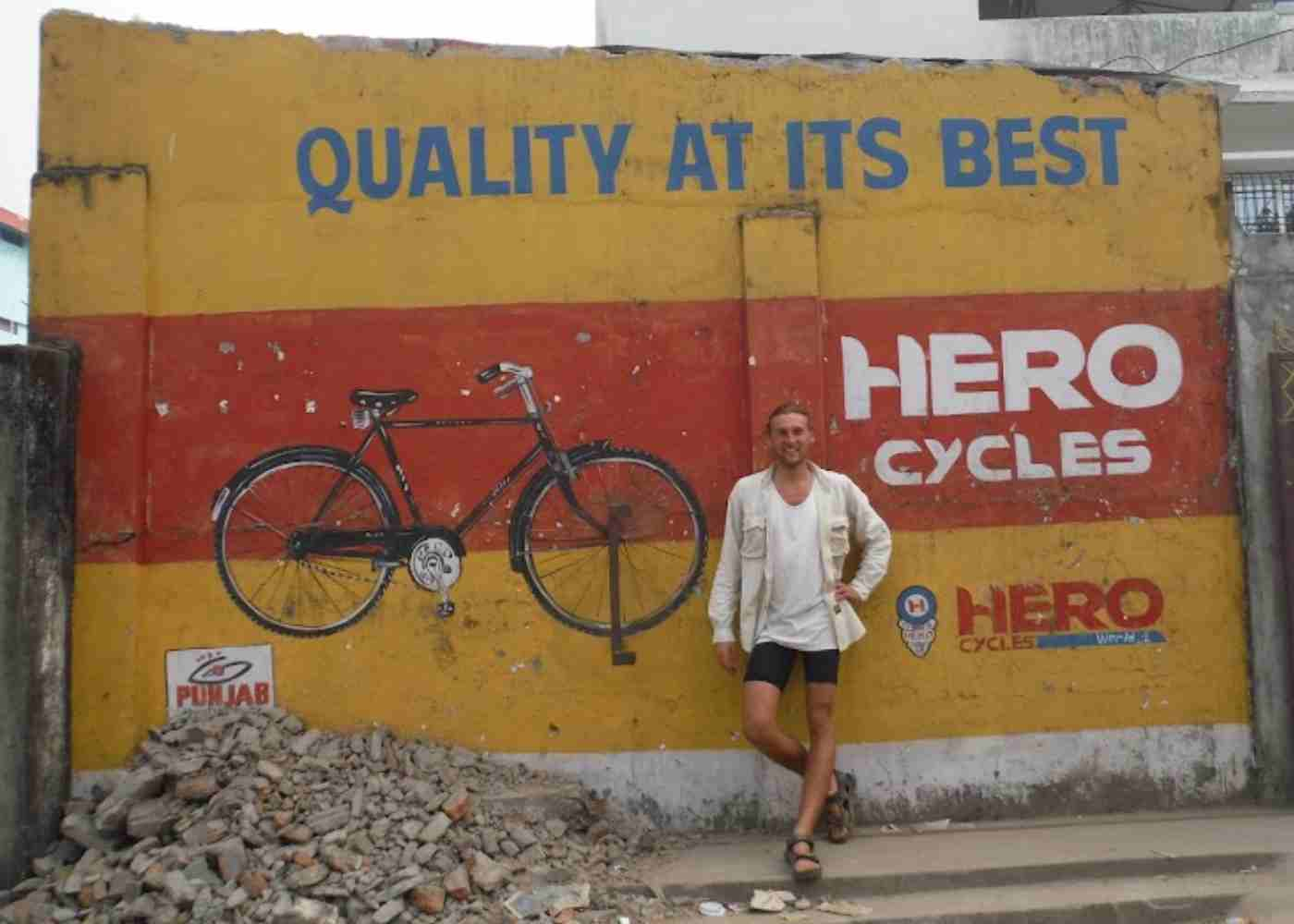
About Cycle Tourers And Unsolicited Bike Touring Advice
Cycle tourers come in all shapes and sizes, from solo adventurers seeking solitude to couples sharing the journey. Some are experienced riders with years of bicycle touring under their belt. While others are newbies looking for a thrilling escape.
What unites them is their love for the open road and the freedom that comes with pedalling through picturesque landscapes.
You’ll meet bicycle tourists from all over the world. Each one with a unique story and reason for embarking on a two-wheeled adventure.
They share a common passion for exploration and a desire to experience life at a slower pace.
Bicycle Touring Tips From Around The World
Whether you’re cycling across continents or exploring your own backyard, being part of this vibrant community will open your eyes to new cultures, forge lifelong friendships, and create memories that will last a lifetime.
Every bicycle touring tip you get is from a personal experience. In that context, my unsolicited bicycle touring advice is to make up your own mind.
Treat bike travel tips and cycle touring advice as a kind of recipe. Enjoy the useful, disregard the rest.
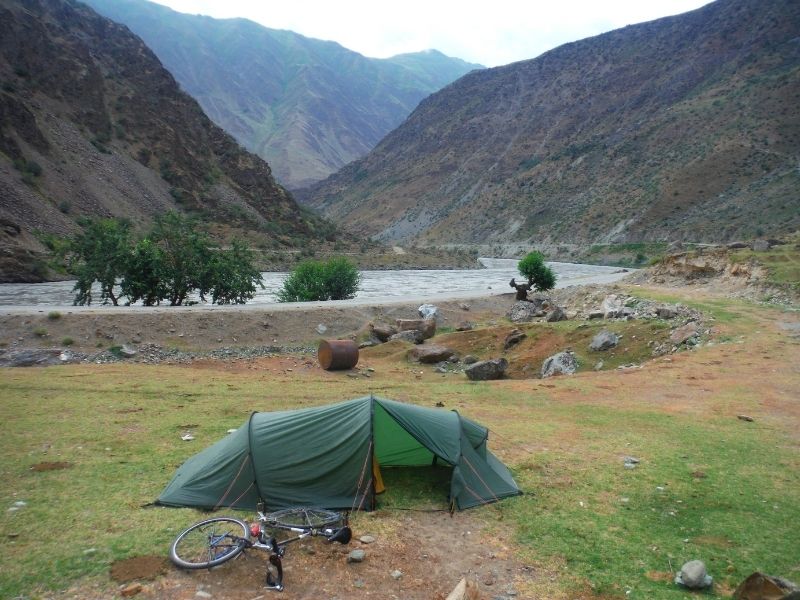
Reasons To Go On A Bike Tour?
Cycle touring offers a unique and exhilarating way to explore the world. Bicycle travel enables you to immerse yourself in nature, connect with local cultures, and experience a sense of freedom that is hard to find elsewhere.
One of the reasons why people choose to go on bike tours is for the feeling of adventure.
There’s something incredibly thrilling about embarking on a journey across vast landscapes, relying solely on your physical strength and determination. Plus, being able to cover long distances at your own pace allows you to truly appreciate the beauty of your surroundings.
Long-distance Bicycle Touring Is Fun
Another reason why bike touring is so appealing is its simplicity. With just your bicycle and some basic gear, you have everything you need for self-sufficient travel.
The minimalist ideals of bikepacking and bicycle touring make it easy to plan and organize your trip. Enabling you to focus on what really matters – enjoying the ride and connecting with both nature and yourself.
So if you’re looking for an unforgettable adventure then consider going on a bike tour. It’s an experience like no other!
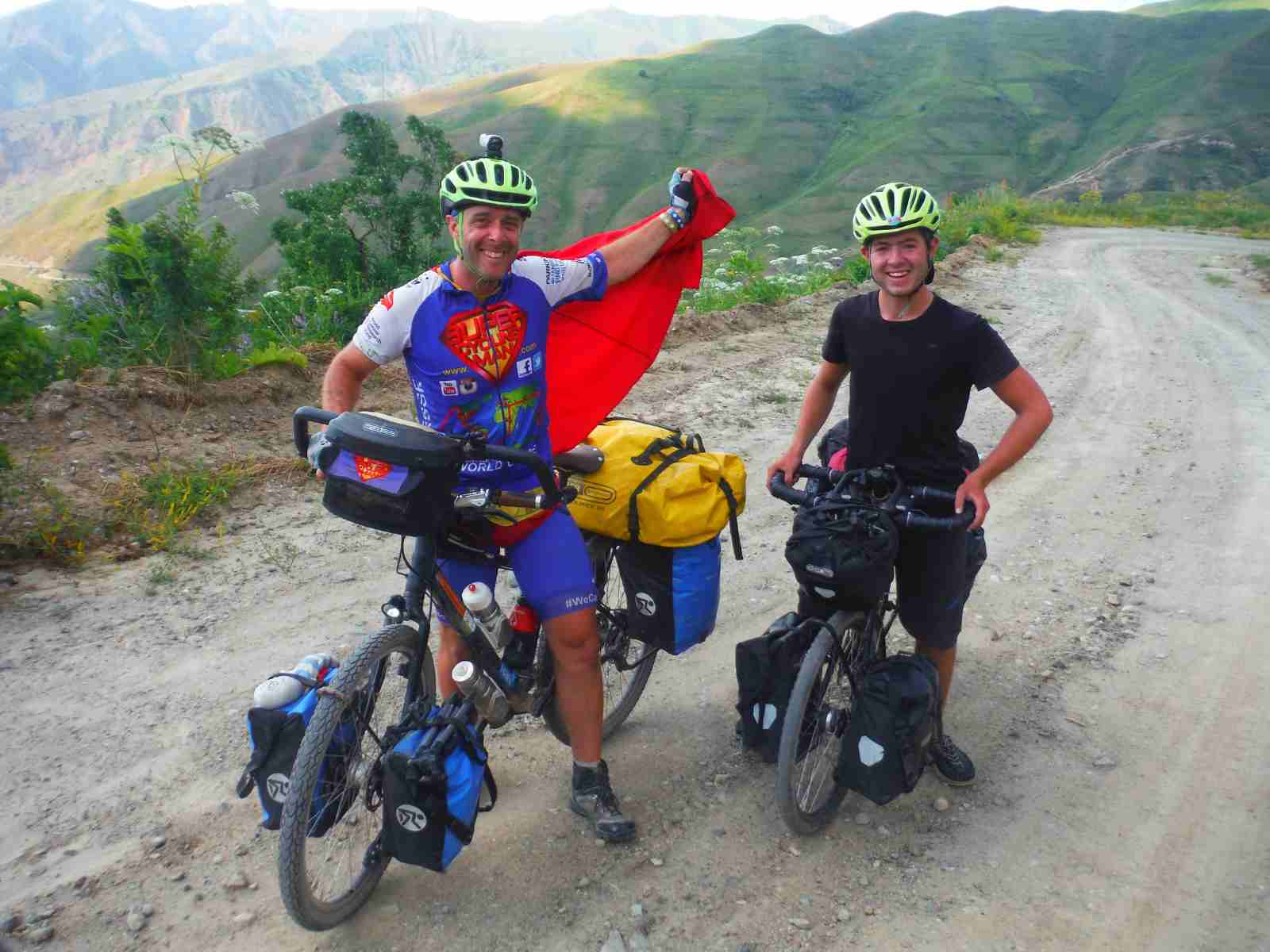
Who Goes Cycle Touring?
Cycle touring is not limited to a specific group of people. It attracts adventurers of all ages and backgrounds, from solo travellers seeking self-discovery to couples looking for a unique bonding experience.
Young backpackers, retirees in search of new horizons, and even families with children are among those who embark on bike tours.
The beauty of cycle touring lies in its versatility. It appeals to both experienced cyclists and beginners who want to try something new.
With the right mindset and preparation, anyone can enjoy the freedom that comes with exploring the world on two wheels.
So whether you’re an adrenaline junkie or simply someone yearning for a slower pace of life, cycle touring welcomes you with open arms.

Is Cycle Touring for You?
Cycle touring is not for everyone, but it can be an incredible adventure for those who are up for the challenge. It requires a certain level of physical fitness and mental resilience. You’ll be spending long hours on the bike, pushing yourself to new limits.
If you enjoy being outdoors, exploring new places at your own pace, and immersing yourself in different cultures, then cycle touring might just be your thing.
Bikepacking and cycle touring offer a unique perspective of the world that you simply can’t get from any other mode of travel.
However, it’s important to consider factors like weather conditions, terrain difficulty, and personal comfort levels before embarking on a bike tour.
So if you’re willing to embrace uncertainty and step out of your comfort zone, then cycle touring could very well be the adventure of a lifetime!

Over the years, we have embarked on countless bike trips that have taken us to breathtaking destinations around the world.
From cycling through the rugged landscapes of the Pamir Mountains to pedalling along picturesque coastal roads in Morocco , each journey has left an indelible mark on our souls.
One particular trip that stands out is our adventure through the stunning countryside of Vietnam . The vibrant colours, bustling markets, and friendly locals made this a truly unforgettable experience.
Another favourite was our tour through Wainwright’s Coast to Coast , where we were captivated by rolling hills, ancient valleys, and mist-covered moors.
Why We Travel By Bike
These bike trips not only enabled us to explore new places but also provided a unique perspective on each destination. They allowed us to immerse ourselves in local culture and interact with people from all walks of life.
There’s nothing quite like feeling the wind against your face as you pedal along remote mountain trails or cycle past iconic landmarks
In short, these bike trips have brought us immense joy and fulfilment. They have taught us valuable lessons about resilience, adaptability, and embracing new experiences. It’s why we travel by bike !
If there’s one thing we can say for certain it’s this: if you’re looking for a thrilling way to discover the world while staying active and connected with nature – bicycle touring is worth considering!

Common Mistakes Bike Travelers Make
One common mistake that many bike travellers make is overpacking. It’s easy to get carried away and want to bring everything you think you might need. A heavy load can quickly become a burden on long rides.
I had to give away a laptop, a heavy-duty bike lock and 15 pairs of socks on my solo Hippe Trail by Bike trip. Instead, focus on packing the essentials and being prepared for different weather conditions.
Another mistake is not doing enough research about the route and terrain ahead of time. It’s important to have an idea of what kind of roads or trails you’ll be riding on.
A general understanding of any political unrest, armed conflicts, or national uprisings can inform your route planning. This will help you plan accordingly and avoid any unnecessary surprises during your journey.
By avoiding these common bikepacking mistakes , bike travellers can ensure a smooth and enjoyable experience on their tours.
So remember to pack light and do your homework before hitting the road!
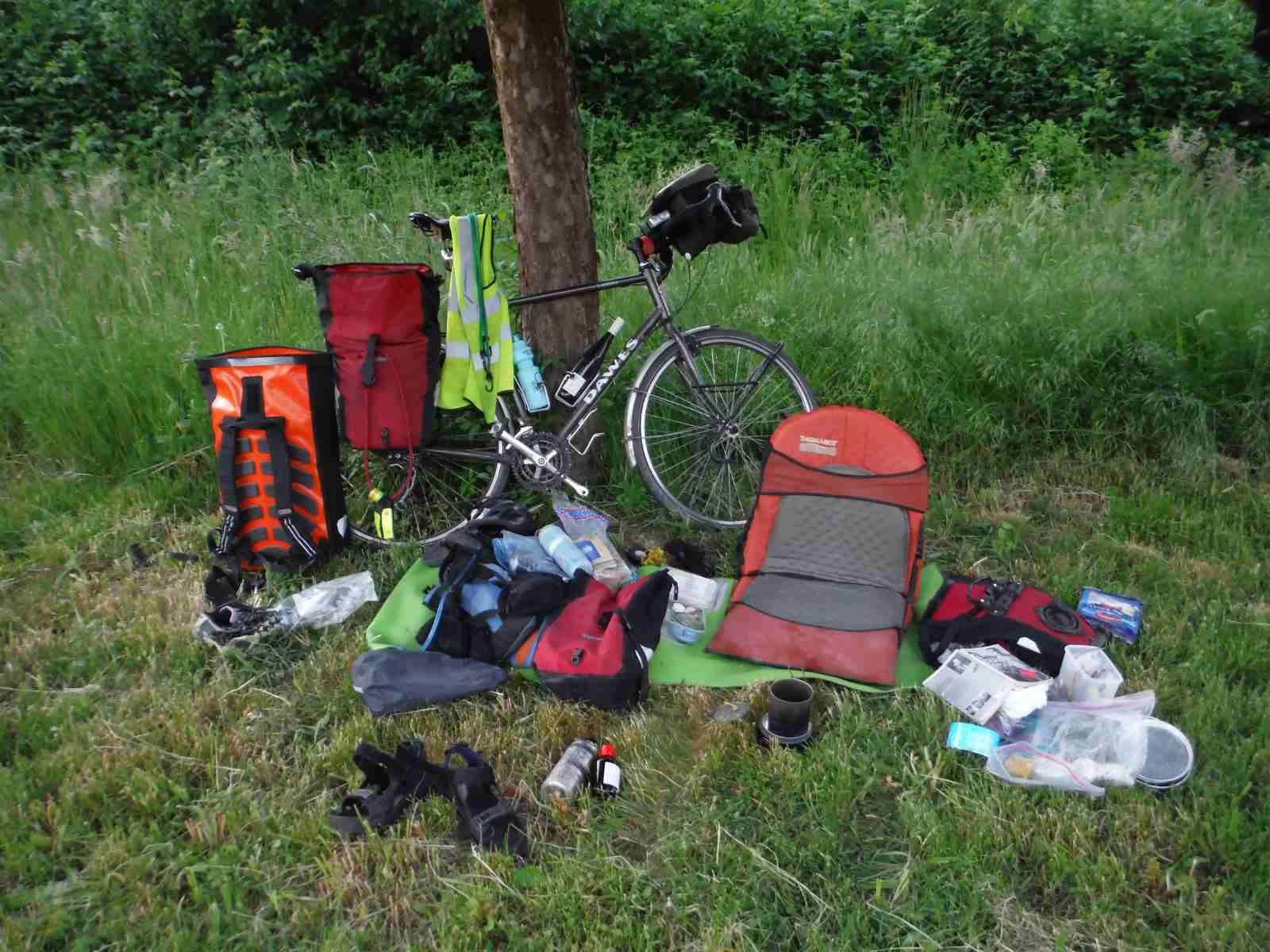
What to pack on a bike tour can be a daunting task. This cycle touring and bikepacking kit list can ensure that you have everything you need without carrying unnecessary weight.
First and foremost, it’s important to have the essentials: spare inner tubes, a pump or CO2 inflator, tire levers, and basic tools for any potential repairs along the way.
Additionally, packing lightweight camping gear such as the best tent in the world or bivvy bag, a super lightweight sleeping bag , and cooking equipment is crucial for overnight stays.
Don’t forget to bring weather-appropriate clothing including rain gear and layers for varying temperatures.
Remember to prioritize items based on necessity rather than convenience to keep your load light and manageable throughout your journey.

What To Wear On A Bike Tour?
Cycle touring clothing.
When it comes to what to wear on a bike tour, comfort and functionality are key. Opt for moisture-wicking clothing that will keep you dry during long rides. Lightweight and breathable materials like merino wool or synthetic fabrics are ideal for regulating body temperature.
Layering is important, as weather conditions can change throughout the day. Start with a base layer that wicks away sweat, add a mid-layer for insulation, and top it off with a windproof and waterproof outer shell. Don’t forget to protect your extremities – invest in padded cycling shorts, gloves for grip and protection, sunglasses for eye protection from debris or UV rays, and sturdy cycling shoes with cleats for efficient pedalling.
Remember: pack light and practical!

Camping & Cooking Kit List
When embarking on a bike tour, having the right camping and cooking gear is essential. We’ve learned this through years of experience on the road.
Do you really need a stove and cookset?
While for ultra-long bicycle expeditions, a stove and camping cookset make for a useful companion, it may not be essential.
I barely used a stove on my solo multi-month bike trip. In Southeast Asia and India, it’s easy and preferable to eat at the side of the road. Dry foods, salami, nuts, seeds, fruits and jelly sweets are handy to carry as snacks.
However, in Central Asia, I used the stove at least daily to prepare an evening meal. Ingredients were hard to find but given the expansive distances from settlements, it was a bonus to have a hotel meal on the fly.
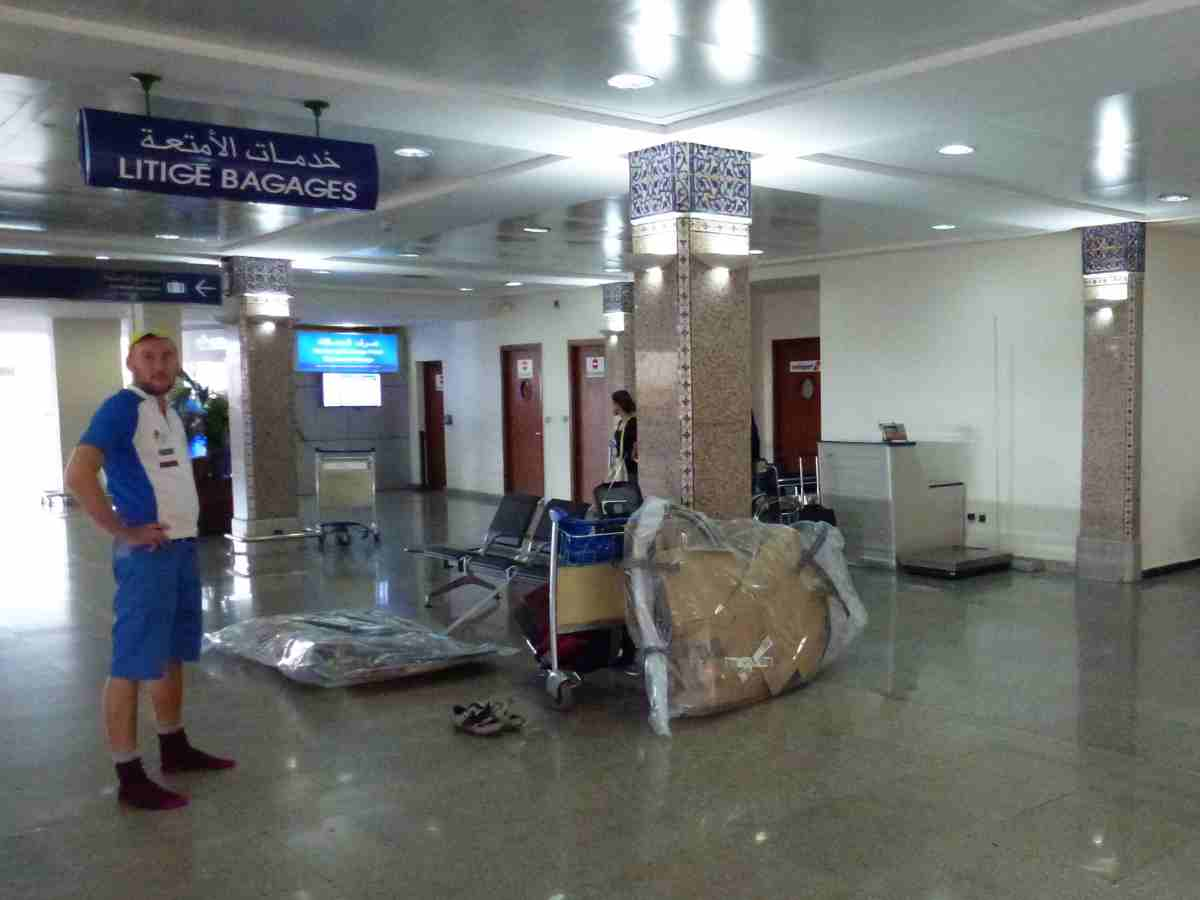
How To Fly With A Bicycle If You Have To
Ideally, you’ll leave from our front door fully loaded and ready to go. Cycle to a ferry port and you’ll access the next available landmass.
Alternatively, there are various options available. If you have to fly, a bike bag or box for air travel is handy. A cardboard box is best to protect your bike in transit. The see-through bags are liable to damage the bike in my experience. A new box can be found on the return leg.
Make sure all loose parts are removed or tightly secured. Remove the pedals, tuck the drop bars under the frame and remove the front wheel. Store the wheel next to the frame with a cable tie. Leave the bike in the lowest cog on the cassette. This leaves the derailleur compact for travel.
Don’t forget to pack essential tools and spare parts for any potential repairs that may arise during your journey.
Once abroad, it’s possible to put your bike on all kinds of transport. Huge trains in India, speedboats in Europe, and big trucks in Tajikistan.

How To Budget For A Bicycle Tour
When it comes to planning a bicycle tour, budgeting is an essential aspect that can greatly impact your experience. So how do you go about budgeting for a bike tour? Here are a couple of veteran bicycle touring tips to help you get started.
Consider your daily expenses such as accommodation, food, and transportation. Research the average costs in the countries or regions you’ll be visiting and factor them into your budget. Don’t forget to account for any visa fees or travel insurance costs as well.
In Asia, I travelled on $10 a day which at the time was about £6. Most of that was spent on food.
Think about one-time expenses like purchasing or renting gear and equipment. Determine what items are necessary for your trip and research their prices beforehand. It’s also worth considering any potential repairs or maintenance that may come up during the tour.
By carefully planning and estimating your expenses ahead of time, you can ensure that you have enough funds to fully enjoy your bicycle tour without breaking the bank.
Remember, every cyclist has different priorities when it comes to spending money on their journey – so find what works best for you!
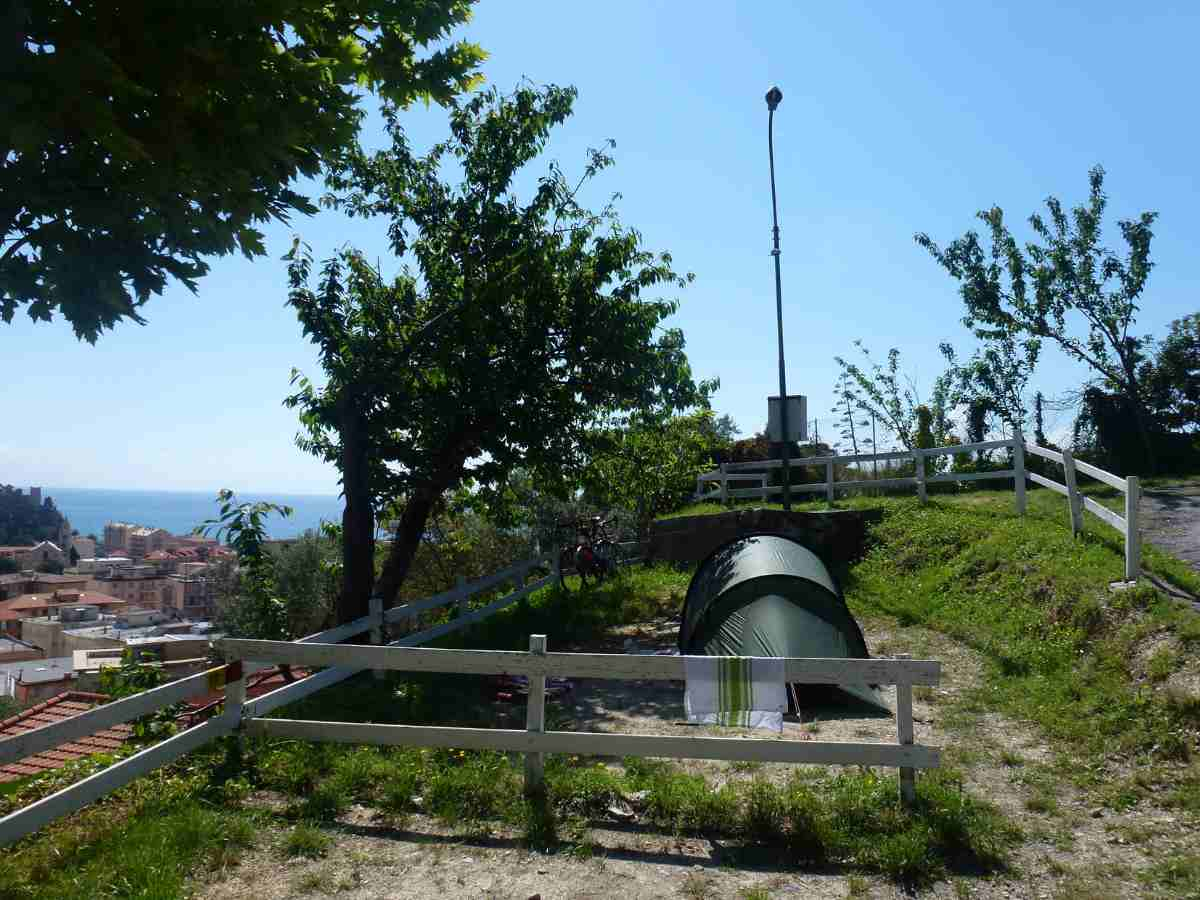
Overcoming Fears: The Ultimate Bike Touring Advice
When embarking on a bicycle tour, it’s natural to have fears and doubts. Will I be able to handle the physical demands? What if something goes wrong?
But here’s the thing – fear is just an illusion that can hold you back from incredible experiences. Pushing through those fears is where growth happens.
Fear is just an illusion
One of our last thoughts before setting off on each tour is always gratitude for the opportunity to explore new places by bike.
It’s a reminder to savour every moment, even when faced with challenges or setbacks along the way. Embrace the unknown, push past your comfort zone, and trust in your abilities – you’ll come out stronger on the other side!

Inspirational Bicycle Touring Tips Before You Go
Bicycle touring is not just a hobby or a vacation; for some, it’s a way of life. It opens up new possibilities, pushes boundaries, and connects you with the world in ways that other forms of travel simply cannot match.
As we come to the end of this article, I hope that my experiences and bicycle touring tips have sparked your curiosity and ignited your wanderlust.
Here are some final words of bike travel advice to inspire and guide you on your cycle-touring adventures.
Bicycle Touring Tips Checklist
- Embrace the journey: The true beauty of bicycle touring lies in the unexpected moments, chance encounters, and serendipitous detours along the way. Be open to new experiences and embrace them wholeheartedly.
- Take it slow: Remember that cycle touring is not a race against time. It’s an opportunity to savour each moment at your own pace. Enjoy leisurely rides through picturesque landscapes, stop for coffee breaks in quaint villages, and take time to immerse yourself in local cultures.
- Connect with fellow cyclists: The cycling community is vast and supportive around the world. Whether online through cycle touring resources or on the road, reach out to other cyclists. Bike travel advice, camaraderie, or even potential travel companionship is possible.
- Stay flexible: Inevitably things won’t always go according to plan – weather conditions may change abruptly or unforeseen circumstances may arise – but adaptability is key when bicycle touring. Embrace these challenges as part of the adventure!
- Keep learning: There will always be more skills to acquire and knowledge to gain when it comes to bike travel – from basic maintenance skills like fixing a flat tire to navigating unfamiliar territories using maps or GPS devices .
- Take care of yourself: Remember self-care during long days in the saddle – stay hydrated, eat well-balanced meals, and give your body enough rest to prevent burnout and injury. Listen to your body and know when it’s time to take a break.
- Leave no trace: As responsible travellers, it’s important to leave the places we visit as we find them, if not better. Dispose of waste properly and respect local customs and cultures.
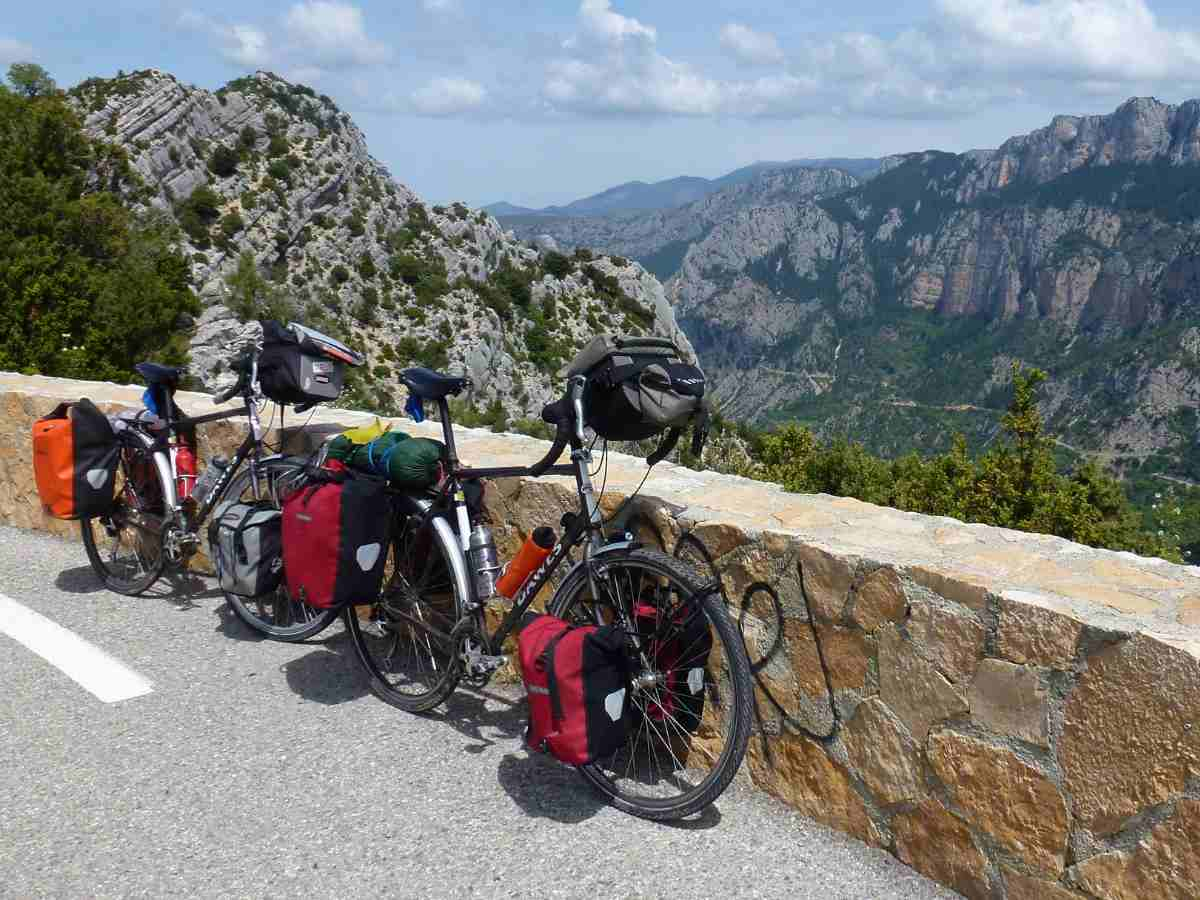
If there’s one thing I’ve learned from our decade on the road, it’s that bicycle touring is as much about mindset as it is about physical stamina.
Cycle with a smile and the world will feed you noodles, get you drunk on xeo and offer you a bed for the night.
Magick happens on the road. Embrace it with an open heart and you’ll be grand.

Bicycle Touring Guide for Beginners: Everything You Need To Know

The idea of planning and preparing for your first-ever bike tour might seem a little intimidating at first. I completely understand — I was very intimidated when I left for my first-ever tour ( from London to Istanbul ), but I quickly discovered that I needn’t have been worried!
In this bicycle touring guide, I’ll cover everything you need to know in order to plan and prepare for your first cycle tour, including how to choose a bike for touring, what gear you’ll need, how to budget, ideas on where to go, tips for life on the road and more.
I’ll also be responding to worries that novice cycle tourists often have, such as whether you need to be really fit and whether you need to know a lot about bikes in order to tour.
Let’s dive in!
What is bicycle touring?
Simply put, bicycle touring is travelling by bicycle.
It’s a type of adventure travel that combines cycling with backpacking. You’ll cycle for days, weeks, months or even years, with your luggage attached to your bike. In doing so, you are self-sufficient and your journey is self-powered.
Cycle touring vs bikepacking
The phrases “cycle touring” and “bikepacking” are often used interchangeably. Both refer to travelling by bike, but it’s the terrain and type of bike used that sets them apart.
Cycle touring is typically done on-road or along bike paths, using a touring, hybrid, or even a road bike.
Bikepacking refers to off-road adventures along dirt roads and/or in the mountains, on a bike with fatter tyres, such as a mountain or fat bike.
For the purpose of this guide, we will focus on cycle touring , but a lot of the information here will also be useful to those who are interested in bikepacking.
Why should you go on a bicycle tour?
There are few better ways to explore the world than by bicycle.
Most tourists will travel from hotspot to hotspot, but on a bike, you’ll get to uncover things that most people miss. You’ll really connect with your surroundings and notice the fine details of the region you’re travelling through.
In a car, you see so much yet experience so little. There’s no real connection to what’s just outside of your window; you’ll see but a timelapse of the world around you. On foot, you soak up each individual step, but with this comes confinement and small distances covered each day.
That’s where bicycle touring, for me, wins every time. On a bicycle, you’ll cover substantial distances, yet you’ll still be slow enough to really see and experience everything around you. If it’s raining, you’re soaked. If it’s hot, you’re sweating. There’s no AC to turn on, no roof over your head. Dirt, dust and insects will stick to your sweat-clad skin. You must grind up the hills, but then you’ll have the joy of coasting down them.
Not only this but bicycle touring is a cheap way and eco-friendly way to travel!
READ MORE: 10 Reasons Why You Should Try Bicycle Touring

How to choose a bike for touring
Touring bikes are specifically designed for long-distance, weight-bearing cycling. They have a longer wheelbase than regular bikes, providing more stability and comfort while carrying a load, and have several attachment points for racks and bags.
When choosing a touring bike , think about the demands of your ride:
Duration : For short tours — perhaps a week or two — just about any bike will do. If you’re planning a longer trip, there’s a stronger case for using a higher quality bike that won’t fail under strain.
Location : If you are touring in a remote location, where access to bike repair is infrequent, it’s a good idea to invest in a quality bike that is unlikely to break down and leave you stranded in the middle of nowhere.
Terrain : If you’ll be sticking mostly to roads, you can really use any bike, although skinnier tyres will enable you to go faster. If you’re planning on going off-road and riding over dirt paths and mountainous terrain, you’ll want a bike with wide tyres and good suspension.
That being said, you don’t need a touring bike. A nice bike is just that: nice but not essential. People have toured great distances on bikes that didn’t look up to the job. I cycled across Europe using a second-hand bike from a charity shop, and Thomas Stevens cycled the world on a penny-farthing in the 1800s!
Your budget needn’t hold you back . You really don’t need to splurge on an expensive new bike, unless you want to. As long as your bike has fitment points so you can attach a rack and panniers, decent gears and tyres and a comfortable saddle, there’s no reason why you can’t tour on it. Just keep in mind that long rides over challenging terrain may be a strain on your cheaper, older bike.
If you’re planning on a long tour over challenging terrain and want to invest in something designed for such an expedition, take a look at the following touring bikes:
- Fuji Touring
- Cube Touring Bike
- Trek 520 Disc
- Kona Sutra Adventure Road Bike
- Ridgeback Panorama

What gear and equipment do you need for a bicycle tour?
At its heart, bike touring is all about minimalism and simplicity. The mantra of “it’s better to have it and not need it” is not the way to go. You need to be selective with what you bring as you’re the one who must grind the weight of your luggage up those hills!
Here is what I recommend you bring with you on your bicycle tour:
- Panniers — I love these ones
- Inner tubes
- Tail lights
- 2 cycling shorts
- Non-cycling pants
- Long sleeve layer
- Jumper/fleece
- Waterproof jacket
- 5 pairs of underwear
- 5 pairs of socks
Camping gear
- Sleeping bag
- Sleeping mat — I love this Forclaz mat
- Travel pillow
- Gas cylinder
- Portable stove
- Plates/cutlery
- Matches/lighter
Miscellaneous
- Wallet and money
- Refillable water bottle
- Soap & shampoo
- Toothbrush & paste
- Hairbrush & hair ties
- Travel towel
- Battery packs
(A side note: you don’t need all of this stuff. You can pick and choose what would provide comfort and value to you during your tour.)
READ MORE: A Complete Bike Touring Gear Guide and Kit List

How do I carry all my gear?
Panniers are a type of bag that sit on your bike and store all your stuff. They’ll mount over your wheels, either at the front, back, or both. You’ll need to fit racks onto your bike, and then clip the panniers onto these racks.
Pannier racks
Choosing a pannier rack for your bicycle is about as exciting as watching paint dry, but strong racks are essential when preparing for a long-distance bicycle tour. You’ll be clipping your panniers and bike bags onto them so they need to be hard-wearing and capable of carrying your luggage.
Every bike is different and there are many variables to consider when choosing your racks:
- Does your bike have disc brakes or rim brakes? Your rack might need extra clearance if you have disc brakes.
- Does your bike have mounts to attach the back rack to, or will you need to use clips?
- Does the rack give you plenty of heel clearance? Essential if you actually want to be able to pedal when the panniers are attached!
You’ll also want to consider the material your racks are made from:
- Aluminium: very lightweight but less durable.
- Chromoly: heavier than aluminium but durable and strong.
- Steel: heavier than chromoly but very durable and can be welded if they break.
- Titanium: lightweight but expensive.
Make sure to check your wheel size and dimensions to get the one best suited to your bike. If you don’t know much about bikes, I’d advise getting racks fitted at your local bicycle shop.
Panniers and bike bags
Panniers/bike bags are where you’re going to store all your gear, and they’ll clip onto your pannier racks.
Ortlieb is one of the most popular panniers and bike bag brands as their bags are known for being waterproof and durable. That being said, Ortlieb isn’t the cheapest at £100+. You certainly don’t need to fork out for Ortliebs, unless you want a really great pair that’ll last you a long time, but it’s worth getting good quality, waterproof panniers that will last.
If you’ll be camping on your tour, you’ll likely need front panniers as well as back panniers, as camping and cooking gear can take up a lot of space. If you’ll be staying in hotels or similar on your tour, you may well be able to get away with back panniers only. It all depends on how much gear you’ll be carrying!
I use these back panniers from BTWIN and they serve me very well. They’re waterproof, durable and have plenty of space.
I had some cheap front panniers which, quite frankly, sucked, and they broke quickly. This is why I advise investing in some good quality panniers.
Some great options for panniers include:
- Ortlieb 20L Back Roller Classic
- Arkel 22.5L Panniers
- Thule Shield 25L Pannier Pair
READ MORE: The 8 Best Panniers For Touring in 2022

How to pick a destination for your first bike trip
It seems that many people think that travelling by bike needs to be adventurous. Sure, there are particularly intrepid individuals out there who are enthused about navigating the steppes of Central Asia or sweating their way across the Sahara desert, but these are far and few between.
Bicycle touring can be thought of as a “cycling holiday” — you’re doing this to enjoy yourself, after all!
When deciding where to go for a bicycle tour, you’ll want to consider the following:
Time: Most of us can only take a short while out of work at a time, or have commitments that can’t be abandoned for too long. If you don’t have much time, why not start local? Just get out of your house and start cycling — a weekend tour can still be a great adventure! If you have two weeks or longer, you have a lot more choice on where to go.
Season: The weather can have a massive impact on how much you enjoy your tour. Choosing to cycle across Asia during the monsoon season or northern Canada during winter could be miserable.
Style: Does your chosen destination fit your cycling and travel style? Think about what you want to get out of your cycle tour, what sights you want to see and how comfortable you are cycling in remote places.
Experience: When planning a bike tour, you should use your previous riding experience to figure out how much distance and how much incline you’re capable of covering. For example, if you’re not in the best shape, touring the steep inclines of the Pyrenees might not be such a fun experience for you.
Ideas on where to go bicycle touring
Here are some great destination ideas for first-time bike tourers:
Western Europe
Many first-time bike tourers select Europe as their first adventure. It’s a great continent to cycle in: bike paths are decent, amenities are great and distances between cities and towns are much smaller than in other parts of the world. Not only this, but Europe is diverse with beautiful scenery and fascinating cultures, and is home to a great community of cycle tourists.
There’s a huge network of dedicated bicycle routes that span across Europe, known as the EuroVelo routes. These are perfect for first-time cycle tourists, as they make planning easy. Just pick a route and follow it!
I would say that Western Europe is more beginner-friendly than Eastern Europe, as (typically) bike paths are better maintained, infrastructure is more set up for cyclists and campsites are everywhere.
I personally cycled EuroVelo 6 one summer and had a fantastic time pedalling along rivers and visiting capital cities. If you’d like to cycle along the Mediterranean coast, taking in Spanish beaches, the canals of Venice, beautiful Croatia and more, have a look into EuroVelo 8.
If you’ve got a week for your cycle tour, Passau to Vienna is a great choice.
If you have 2-3 weeks, I would recommend following the Loire River in France (the Loire a Velo ), or the EuroVelo 15 , which follows the Rhine River through Switzerland, Germany and the Netherlands.

South Korea
The South Korean government has invested massively in cycling, meaning the country now has thousands of kilometres of dedicated bicycle paths. The most famous of their bike routes is the 4 Rivers Path , a 633 km-long path connecting the major Korean cities of Seoul and Busan. It’s an ideal option for a beginner’s bicycle tour.
If you want to see more of the country, you could even make up your own route, as South Korea has an excellent road network with many secondary roads that usually see little traffic.
Camping culture in South Korea is huge and there are lots of free campsites scattered everywhere, usually in scenic areas, such as by the beach or a lake. South Korea is also one of the safest countries in Asia, making it ideal for solo cyclists who might worry about cycling alone.
Japan is a dream destination for many, but many people are put off from visiting due to the high costs. However, there is a budget way to explore Japan, and this is — you guessed it — by bicycle touring.
Wild camping is legal in Japan, meaning you can pitch your tent for free as your travel around the country. Public baths are everywhere and cheap, meaning you can wash easily on the road, too.
Roads in Japan are generally well-maintained, aside from the occasional pothole. Long cycling paths are not as common as in South Korea, but it’s possible to cycle on minor roads, which are usually very beautiful and not too heavily trafficked.
Like South Korea, Japan is also incredibly safe, making it a great option for solo cyclists.
Southeast Asia
Southeast Asia is a very popular destination for cycle tourists; it has a warm climate, there’s so much to see and do, and it’s very budget-friendly . It’s feasible for you to eat out every day and stay in guesthouses, rather than camp and cook your own meals. With this in mind, you could think of Southeast Asia as a luxury destination for touring!
The landscapes are spectacular in this part of the world. You could cycle down the coast of Vietnam, tour through peaceful Laos or pedal along the mighty Mekong River.

How to budget for a bicycle tour
One of the perks of cycle touring is that it’s typically cheaper than your average getaway. Your cooking and camping gear have you covered for food and accommodation, and your bicycle is your transport.
That being said, your daily bicycle touring costs will vary massively depending on your touring style and which part of the world you’re in.
Cycle touring is doable on any budget, but if you’re cycling on a shoestring, it may require a strong sense of adventure and the will to adapt to some discomfort.
If you choose to wild camp, cook your own meals and skip paid attractions, you could potentially tour on a mere $5-10 per day.
On the other hand, you could easily burn through over $100 a day if you choose to eat out and stay in hotels while touring expensive places like West Europe, North America and Australia.
Most tourers’ daily budget falls somewhere in the middle. For example, I prefer to tour by staying at campsites and cooking my own meals. This way, I always have a place to pitch my tent with access to toilet and shower facilities. I also allow myself some luxuries, such as the occasional meal out, fancy coffee from cafes, and some paid attractions. Touring this way, I spent roughly €30 per day while cycling across Europe.
If you’re someone who doesn’t want to camp but is worried about the costs of staying in hotels, consider touring somewhere like Southeast Asia, where accommodation and eating out are super cheap. You could expect to pay roughly $20-30 per day in Southeast Asia by eating delicious street food and staying in budget guesthouses.
As well as your daily touring costs of food, accommodation etc, you’ll want to factor in potential bike repairs and kit replacements. Leave yourself a buffer, in case a hole rips into your tent or your bike needs professional repair.
Finding bike-friendly accommodation
Unless you’re planning a short trip, it’s not practical to plan accommodation in advance. Weather, equipment, your energy levels and other factors can all influence the distance you cover each day. You might also find an unexpectedly nice town and want to spend some time there. With this in mind, it’s best to remain as flexible as possible when it comes to where you lay your head at night.
Campgrounds
Campgrounds offer a safe place to pitch your tent, along with a toilet and shower, and usually WiFi and electrical outlets, too. They’ll even sometimes have laundry facilities, cooking stations and more. Campgrounds can be a great place to stay at a really reasonable price.
In Europe, Australia and New Zealand, you’ll find that campgrounds are everywhere and usually good value for money. In Japan and South Korea, there are many free campgrounds where you can stay.
Watch out for privately-run campsites in the US, as they can charge a lot of money for a small patch of grass. They usually prioritise RVs and may even turn cyclists away!
You won’t really find campgrounds in developing countries, such as in the Middle East or South Asia.

Sometimes you just need a break from camping! Hostels are generally the cheapest way to get a bed for the night, if you don’t mind sharing a room with other people. They’re most commonly found in cities or larger tourist towns — it’s unlikely you’ll find hostels in super rural areas.
In expensive places, such as West Europe or Australia, hostels can be as low as $10, although they’re usually closer to $20. In cheaper places, like Southeast Asia, they can be as low as $4 per night (yes, really)!
If you’re touring in places like Western Europe, the USA or Australia, then nothing will blow your budget faster than staying in hotels. However, if you’re sick or have been riding in bad weather for a few days, a hotel room with an actual bed and a private bathroom can be a real morale booster.
If you do stay in hotels, make sure there is somewhere secure to lock your bike up. Cycle tourists are not usually well catered for at hotels — I had to lock my bike to the fence in a hotel garden in Austria as there was nowhere else to put it.
In continental Europe, you might spot a type of hotel called a pension . Pensions are usually much more budget-friendly than a full-scale hotel and are more like a guesthouse or bed and breakfast. Pensions near bike paths in Germany and Austria often have signs outside to let cyclists know their bikes are welcome: “Radfahrer Wilkommen.”
In less expensive places, such as India or Southeast Asia, it’s affordable to stay in budget hotels every night.
Wild camping
Wild camping is a great way to save money and enjoy nature. It also offers complete flexibility, as you can pitch your tent just about anywhere — a real lifesaver in areas where tourism isn’t common.
You’ll want to find a secluded spot if you choose to wild camp, away from roads and out of sight of people.
Bear in mind that wild camping is prohibited in many countries, although many cyclists do it anyway and don’t get caught. Most people have a relatively relaxed attitude to wild campers, and so may or may not ask you to move on if you’re caught. Just make sure to be discrete: find a secluded spot, wait until dusk to set up camp and be gone by early morning.
If you’re new to wild camping, it’s normal to have some worries at first. I used to be afraid that an unpleasant stranger would come by or the police would show up to ask me to move on. However, as long as you remain hidden and are discrete, it’s unlikely you’ll encounter any problems.
WarmShowers
If you’re not familiar, Warm Showers is a free worldwide hospitality exchange for touring cyclists. It’s a fantastic community — cyclists offer to host other cyclists for a night. You’ll be given a place to sleep and a shower, but it’s likely you’ll also be given food and a beer. Warm Showers states that they have hosts in over 160 countries!
Unconventional options
Churches, police stations, gas stations, farmer’s fields and more are often viable options when looking for somewhere to spend the night. It depends on the country and the laws they have on camping, but in many places, people will be happy to help cyclists and provide somewhere for them to pitch their tent.
People across the world are hospitable and kind — particularly when they see a weary-looking cyclist with lots of gear strapped to their bike!
As an example, myself and two other cyclists pitched our tents next to a gas station in Turkey one night. The security guard gave us coffee and snacks, and a passing farmer even gifted us some watermelon and tomatoes.

Overcoming worries and doubts
If you’ve never been on a cycle tour, you may feel overwhelmed and have doubts about whether you’re capable or not.
Let me tell you: if I can do it, then so can you. With no touring experience, little knowledge of bike mechanics and a not-so-great level of fitness, I cycled from London to Istanbul over the course of 3 months.
I am not particularly brave or strong-willed. I just took it one day at a time.
What if I know NOTHING about bike mechanics?
Don’t worry! I didn’t know much about bike mechanics before committing to my first 3-month cycle tour.
That being said, it would be extremely helpful to know a few basics in case of a breakdown. At a minimum, you should know how to pump your tyres and how to repair a flat tyre.
If you really do know nothing about bike repair, it would be wise to choose a destination where you’re not going to become stuck if your bike breaks down. A popular route like the western part of EuroVelo 6 is dotted with bike repair shops, as well as other bike tourists who would probably be happy to help if you’re in a tough spot.
How do I train for a bicycle tour? Do I need to be really fit?
As the saying goes, “train for the tour or let the tour train you.”
You do not need to be really fit. Training can be done on the road, as long as you’re willing to take things slowly at first. You don’t need to cover massive distances each day if you don’t want to, and no one will judge you if you need to get off your bike and push sometimes.
Ignore the self-important types who think you’re not a proper cyclist just because you only cycled 30km and pushed your bike up that hill.
That being said, having good fitness will make your bike tour much more enjoyable.
Try to cycle 3 or 4 times a week, including one whole day of cycling over varied terrain. This will help to improve your fitness, as well as prepare your body for long days in the saddle.
I’m still not sure if bicycle touring is for me…
If you’re nervous about committing to a big tour, why not have a practice run? You could head out somewhere local one morning, camp that night and then head home the next day. This will give you a feel of what bicycle touring is like.
Alternatively, there are companies such as Spice Roads , Grasshopper Adventures and Bike Adventures that offer fully supported, guided cycle tours. All the logistics will be taken care of for you, so you can enjoy cycling without worrying about getting lost or finding places to stay. This is also a great option if you simply don’t feel comfortable touring on your own due to safety concerns.
What’s the best travel insurance for a bicycle tour?
It’s harder than you would expect to find a decent travel insurance policy that covers bicycle touring. And, unfortunately, most policies that do cover bicycle touring do not cover damage to or theft of your bike.
If you’re a UK resident, Adventures Insurance is probably the best option.
As the name would suggest, they specialise in insurance for more adventurous pursuits — including cycle touring. They cover personal liability and medical expenses while cycle touring, and even allow equipment up to £1,000 to be covered, with a single item limit of £600. However, the maximum duration of your cycle tour must be 3 months.
If you’re not a UK resident or will be touring for longer than 3 months on one continent , I would recommend World Nomads , whom I personally use for most backpacking and general long-term trips.
You can read World Nomads’ policy on cycling-related travel h e re , but here are the basics:
- Cycle touring is covered but the tour must be on one continent only — no cover is available for intercontinental cycle touring.
- You’ll need to tick ‘cycling / biking – independent cycle touring’ when buying your policy. This is an optional extra, so be sure to select it.

READ MORE: 5 Best Cycle Touring Insurance Providers
Tips for life on the road
1) Take every opportunity to refill your water bottles.
2) Drink before you are thirsty and eat before you are hungry.
3) Carrying your own toilet roll is essential. Trust me.
4) Double-check your camping spot before you head off for the day. Cycling back for something you’ve forgotten is the worst!
5) Especially for longer tours, build in a luxury day every so often. A nice hotel room and a warm bath are so welcome after weeks of camping.
6) Be sure to take rest days and make time for sightseeing.
7) Be conservative with the mileage at first; no amount of training can adequately train you for hours in the saddle day after day.
8) Find the little roads. They’re usually much nicer to cycle on than the more direct but busier roads.
9) Stock cubes can add flavour to almost anything and are great to mix into a perhaps otherwise flavourless camp meal.
10) Be prepared to get dirty! Sweat + sunscreen + cycling is an unpleasant combination. Tiny insects and layers of dust/dirt will stick to your skin.
11) Learn the mistakes drivers make, and assume everyone is going to make them every time.
12) Numbness in any part of your body should be treated as a warning sign that something needs to change in your bike fit or cycling posture. Numbness can lead to serious problems and should be treated seriously.
13) It’s not a race. Who cares if you only cycle 10km a day? As long as you’re enjoying yourself, that’s all that matters. As Jimmy Buffett said, “go fast enough to get there but slow enough to see.”
14) A lot of the challenges are mental. The going can get tough at times, but the pros of touring have always outweighed the cons for me.
15) The most important bike touring tip of all: have fun!
READ MORE: 40 Random Yet Helpful Bike Touring Tips

I hope this bicycle touring guide for beginners has been useful and has provided a good foundation of knowledge to help you plan and prepare for your first cycle tour.
Please feel free to post any questions you may have in the comments section below; I’ll be more than happy to answer!
Happy cycling, Lauren

About The Author
Lauren Pears is a freelance travel writer and blogger based in London. She writes about active adventure travel, aiming to encourage and inspire travellers to make the most of the great outdoors.
Thank you for reading! If you found this post useful, I’d be grateful if you would consider using the affiliate links below when planning your travels. I’ll make a small commission at no extra cost to you. This will help me to keep this blog running. Thanks for your support – Lauren. Hotels – Booking.com Hostels – Hostelworld Cheap flights – Skyscanner Travel insurance – World Nomads Outdoor gear – Decathlon / GO Outdoors Cycling gear – Chain Reaction Cycles Alternatively, you could buy me a coffee to say thanks!

Similar Posts

Cycle Touring Insurance: What You Need To Know and the 6 Best Insurance Providers

How to Prevent Numb Hands on Long-Distance Bike Tours
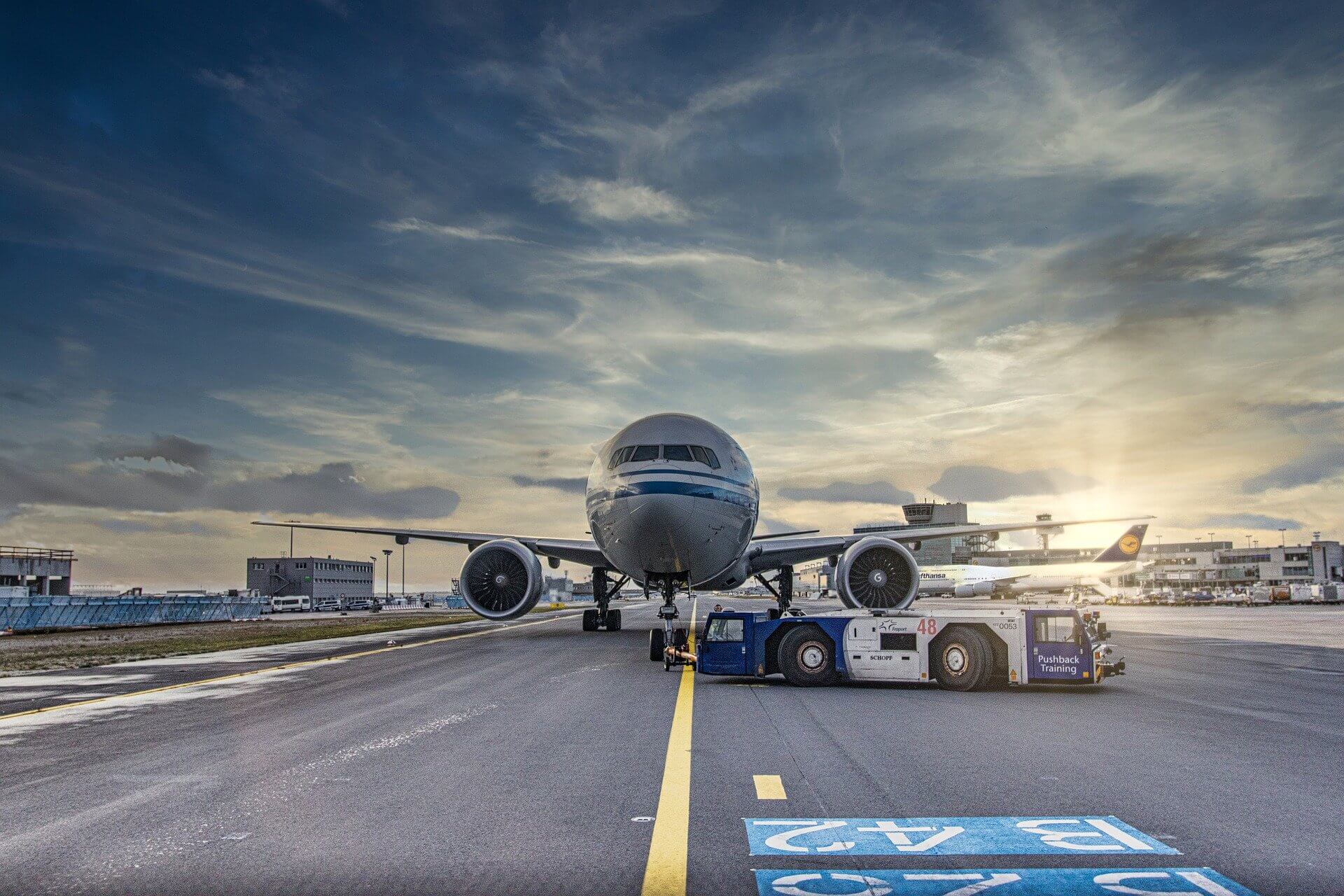
Flying With A Bike: How To Take Your Bicycle on a Plane

7 Useful Bike Tools to Carry on Your Next Bikepacking Trip

40 Random Yet Helpful Bike Touring Tips

A Complete Bike Touring Gear Guide and Kit List
Really great info here, thank you!
You’re welcome!
Leave a Reply Cancel reply
Your email address will not be published. Required fields are marked *

Item added to your cart
Gear guides.
- Ultralight Backpacking Gear
- Best Ultralight Backpacks
- Best Ultralight Sleeping Bags
- Best Ultralight Tents
- Best Camp Shoes
- Best Down Jackets
- Best Rain Jackets
- Best Minimalist Sandals
Tips and How-To's
- Ultralight Backpacking Tips
- Animal Tracks ID Guide
- Contour Lines and Topo Maps
- How to Read Trail Signs
Food and Water
- Backpacking Food Ideas
- Backpacking Meal Recipes
- Best Meal Replacement Powders
- How Many Calories Do I Burn Backpacking?
- The Triple Crown of Hiking
- Appalachian Trail Map
- Gifts for Hikers
- What is Naked Hiking?
Bicycle Touring 101 | How to Start
A beginner's guide to bicycle touring: what it is and how to get started..

Credit: @heybrotrip
Mention "bike touring" and most people think Easy Rider. We ain't talking about motorcycles here though. We are going to go over an epic mode of travel - manual bicycle touring.
What is Bicycle Touring?
Bicycle touring is a type of adventure travel that combines cycling with backpacking.
Unlike regular cycling, where you pedal for miles and return home later that day, bicycle touring allows you to travel from point to point and set up camp for the night. After some shut-eye, you pack up your tent, hop on your bike and head out for the next leg.
You can plan your own trip or join a guided tour which often offer food and lodging. A bicycle tour can last for as long as you want. Some people like to take off for a weekend cycling, while others enjoy a month-long break from life to cycle across the country. If you really want an adventure, there are year-long tours like the perfect weather tour , a continental US tour that is designed so you are always biking in 70-degree weather.
Your daily mileage depends on your fitness level, your trip goals, and the terrain. As long as there are not too many hills and you are reasonably fit, then 50 miles a day is a good benchmark for most cyclists. Moderate mileage is the beauty of bike touring - it is not as slow as hiking and not as fast as road tripping.
Cycle Touring vs Bikepacking
"Cycle touring" and " bikepacking " are often used interchangeably. Both are long-distance forms of travel on a two-wheeled manually powered bicycle. Note these terms sometimes reference different modes of transportation though. It is the type of bicycle and the type of road the bicycle is travelling that sets them apart. There is obviously a lot of overlap and the differences are negligible. Just want to clarify the terminology nonetheless..
Cycle touring is generally more on-the-road with road bikes that have thinner tires. The emphasis is more on distance as you cycle from one town or landscape to the next, possibly for months at a time.
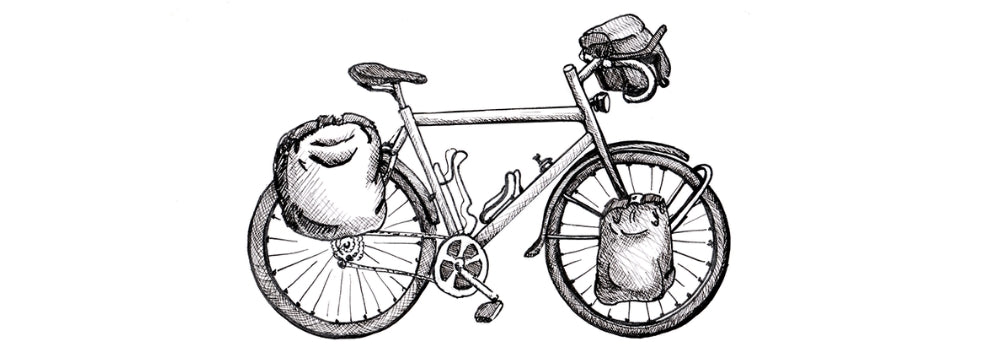
Bikepacking is generally more off-road on a fatter-tired bike, often a mountain bike with shocks. You'll climb mountains and follow dirt trails deep through the woods, possibly for a few days.

About Kelly Hodgkins
About greenbelly.
After thru-hiking the Appalachian Trail, Chris Cage created Greenbelly to provide fast, filling and balanced meals to backpackers. Chris also wrote How to Hike the Appalachian Trail .

- Choosing a selection results in a full page refresh.
Bike A Ton is reader-supported. When you buy via the links on our site, we may earn an affiliate commission at no cost to you. Feel free to click away.

How to Travel by Bicycle (Bike Touring Guide)
There are so many beautiful reasons to go bicycle touring. It’s simply for everybody- no matter your weight, physical condition, experience or budget, you can travel by bike!
If you’re planning to do your first bike tour but have ZERO experience, stick around cause we’ve listed all the tips you need to get you started with your ride.
Bike Touring vs. Regular Cycling

At its core, bike touring is about embarking on long-distance journeys on a bicycle. It’s not just about the destination, but the journey itself. Unlike regular cycling, where the primary goal might be exercise, commuting, or a short recreational ride, bike touring is about exploration, adventure, and self-sufficiency.
Imagine this: Instead of cycling around your neighborhood or through a local park and returning home, you’re pedaling through scenic countryside, exploring new towns, and at the end of the day, you’re setting up camp under the stars or checking into a cozy inn. That’s bike touring.
- Adventure : Every day brings new scenery, challenges, and experiences.
- Flexibility : You decide the pace, the route, and where to stop.
- Connection : Engage deeply with the environment and the communities you pass through.
- Physical Demand : Requires stamina, especially on multi-day tours.
- Preparation : Planning routes, packing gear, and ensuring safety can be intensive.
- Unpredictability : Weather, road conditions, and other factors can affect your journey.
The Joy of Bike Touring
There’s a unique sense of freedom in bike touring. The open road, the wind in your hair, and the thrill of what lies around the next bend. Every pedal stroke brings a new perspective, every mile a new story. And at the end of the day, there’s the satisfaction of setting up camp, reflecting on the day’s journey, and anticipating the adventures tomorrow will bring.
Planning Your First Bike Tour
Before starting a biking tour, there are things you have to plan. Are you going on-road, off-road, or both? What bike should you use on the tour? What should you bring? How far can you ride? Where do you stay at night? Every ride is different. The more details you put into your plan, the more successful your ride will be.
Bikepacking
Generally, bike-packing is more off-road using wide-tired mountain bikes with shocks. It’s a tour on dirt roads in secluded places. It’s also a great option if you want to go back-country hiking while enjoying the thrills of riding your mountain bike.
Touring in mountainous areas can be demanding so backpackers carry light loads during their rides. Although, carrying less means there is less stuff you need to worry about.

Cycle Touring
If you’re in love with the idea of “living life on the road, then cycle touring is for you. It can range from single to multi-day trips while traveling across towns, cities, or even countries. Cycle tours will require bringing all the gear you would need to travel around sufficiently. Backpacking, on the flip side, demands only the most essential stuff to make cycling less physically demanding.
Getting the Right Bike
On-road ride.
Touring bikes are great for on-road rides. Most touring bikes are pretty heavy because they have steel frames that absorb the cushion of the road.
You can also go on a road bike, although most road bikes aren’t built for long-distance bike touring. A hybrid combo like gravel bikes also does well on the road. These bikes are lightweight and designed to handle a wide range of different terrain and surfaces.
Off-road Ride
Mountain bikes are still best for off-road riding because you’re gonna be able to do hills and trails that you wanna hit without damaging your bike and hurting yourself.
When choosing a bike for off-road tours, you should optimize your bike setup by considering your load’s weight, riding surfaces, and terrain steepness.
The Importance of an Upright Riding Position
An upright riding position is crucial for long hours on the saddle. It reduces strain on the back, neck, and shoulders, allowing for a more comfortable and sustainable ride. This position also offers a better vantage point to enjoy the surroundings.
Expert Tip : Look for handlebars that allow multiple hand positions. This can help reduce fatigue and numbness on longer rides.
Geometry and Stability
The geometry of a touring bike is tailored for stability, especially when loaded with gear. A longer wheelbase, lower bottom bracket, and relaxed head tube angle all contribute to a bike that handles well, even when weighed down with panniers.
Example : Consider two cyclists – one on a nimble road bike and the other on a loaded touring bike. While the road bike might excel in a city sprint, the touring bike will shine on a multi-day journey through varied terrains, providing a stable and comfortable ride.
Features of a Typical Touring Bike
- Durable Frame : Often made of steel, which is resilient and can be repaired in remote areas.
- Wider Tires : Provides better traction and comfort on different surfaces.
- Mounts for Panniers and Racks : Essential for carrying camping gear, food, and other essentials.
- Reliable Braking System : Disc brakes are common for their reliability in varied weather conditions.
- Gearing : A wide range of gears to handle steep climbs and fast descents.
Expert Tip : When choosing a touring bike, consider the type of terrain you’ll be covering. For rougher trails, a touring bike with wider tires and a more robust frame might be ideal. For paved roads, a lighter touring bike with a more streamlined design could be the best choice.
Packing Essentials
Preparing your bike tour list is crucial. What you should pack will depend on the length of your ride and where you’ll be. Below, we discussed how you can efficiently pack when traveling on-road or off-road.
Panniers or Backpacking Bag?
When planning to do a bike tour, you should bring panniers for storing your stuff. These bags are spacious and built to be attached to the sides of your bike’s front and rear sacks. It can also be detached once you reach your destination. We suggest you get a waterproof pannier to protect your stuff from getting wet during rainy trips.
Panniers are best for long cycling tours where you can store all of your food, clothing, gears, and other essentials. When packing for an off-road trip, opt for a bike packing bag (or the best bike messenger bag ) because it would demand lighter load set-ups than a four-pannier cycling tour set-up.
Choosing your Direction
In choosing your destination, consider the weather and the landscape. The weather will also tell you what you need to pack, how far you can ride, and when you should start pedaling.
Are you craving mountainous terrain, city view, or both? When choosing a scenic spot, remember to consider going on lean seasons if you don’t want to get stuck in traffic. Or you can look for routes with a few motorists to avoid undesirable traffic jams.

How Much Will Bike Touring Cost?
If you’re touring America and you already have all the necessary gears you need before you hit the road, you’ll pretty much need $35 to $50 per day to cover your food, camping fees, and repairs and gear replacements. But if you’re planning to tour overseas, here’s a quick breakdown by travellingtwo.com of the possible expenses per day:
- Europe: $39.64
- Morocco: $40.00
- Syria: $23.89
- Iran: $17.16
- Turkey: $53.97
- Turkmenistan: $15.21
- Uzbekistan: $19.09
- Kazakhstan: $18.07
- Kyrgyzstan: $26.58
- Thailand: $32.33
- Cambodia: $34.11
- Laos: $22.00
- Malaysia: $28.59
- Singapore: $20.70
- Australia: $33.01
- New Zealand: $34.67
- Canada: $30.06
Basics of Bicycle Touring
1. Understand the Different Types of Bike Touring :
- Day Touring : Short trips that last a day. Ideal for beginners to get a feel of bike touring.
- Credit Card Touring : Multi-day trips where you stay in hotels or B&Bs and dine in restaurants. Lighter load since you don’t carry camping gear.
- Fully Loaded Touring : Carrying everything you need, including camping gear and food. Offers the most freedom but requires thorough preparation.
2. Physical Preparation : Start with shorter rides and gradually increase your distance. This not only builds stamina but also helps you get accustomed to spending long hours on the saddle.
3. Learn Basic Bike Maintenance : Knowing how to fix a flat tire, adjust brakes, and maintain your chain can save you from potential troubles on the road.
Steps to Become a Pro at Bicycle Touring
1. Plan but Be Flexible : While it’s essential to have a route and itinerary, be prepared for changes. Weather, road conditions, or unexpected discoveries might alter your plans, and that’s okay!
2. Pack Smart :
- Essentials First : Prioritize tools, spare parts, water, and food.
- Balance Your Load : Distribute weight evenly between front and rear panniers.
- Limit Luxuries : Space is limited, so only pack what you’ll truly need.
3. Engage with the Community : Join local cycling groups, participate in forums, and connect with experienced tourers. Their insights and stories can be invaluable.
4. Document Your Journey : Maintain a journal, take photos, or even start a blog. Documenting helps you reflect on your experiences and share them with others.
5. Safety First : Always wear a helmet, use lights and reflective gear, and be aware of traffic rules and road conditions.
6. Embrace Challenges : Flat tires, unexpected rain, or steep terrains are all part of the journey. Embrace these challenges as they come, and remember, they make the best stories!
7. Continuous Learning : The world of bike touring is vast. From new gear innovations to different touring philosophies, there’s always something new to learn.
Expert Tip : Start with a short, local tour to familiarize yourself with the experience. It’s a low-commitment way to understand what bike touring entails and to identify areas you need to work on.
Common Mistakes in Bike Touring
1. Using the Wrong Bike: I t’s possible to use any bike for a bike tour, but using the right bike that’s specific to your needs will make a difference in your overall comfort and success during your trip.
2. Fear of Starting: Start right off! Don’t wait for years of planning before starting to go on a bike tour. Waiting until you’re too old and physically incapable will only bring you lots of regrets.
3. Not Documenting Your Tour : Capture the most scenic view you’ve seen, the best experiences, and the most beautiful people you’ve met during your bike tour. It’s good to look back on the physical and emotional memories during your bike-tour.
4. Not Knowing How to Do Minor Bike Repairs and Adjustments : Learn a few repair and maintenance skills before going on a bike tour. These basic things will save you time and money! Not only that, but a well-maintained bike can also ensure a smooth and safe ride.
About The Author
Antonnette Baker
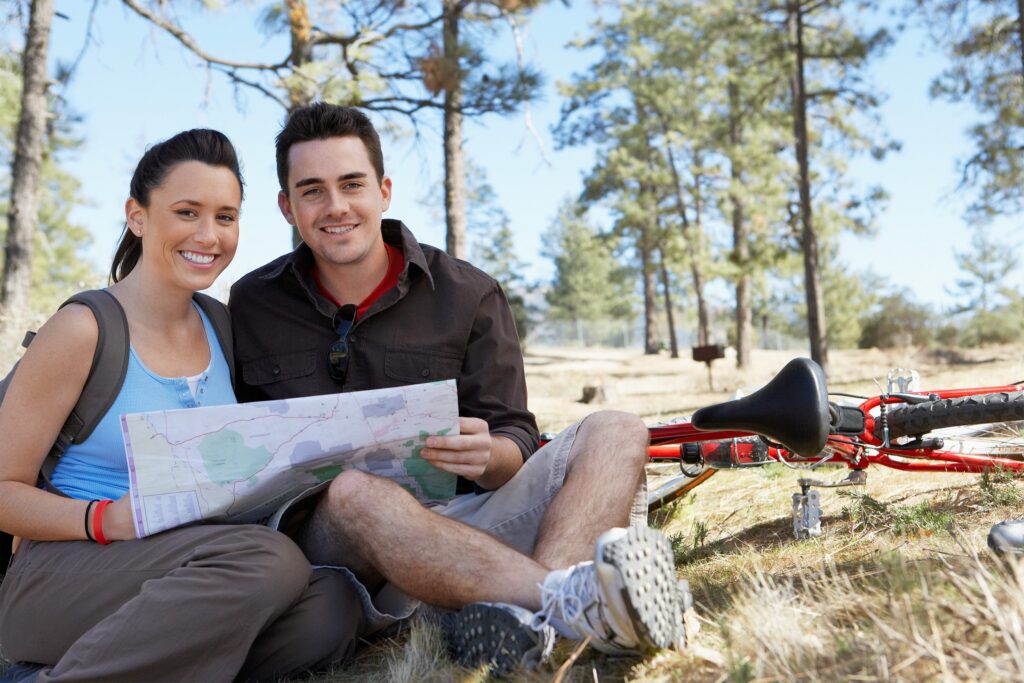
Hey there! We’re Antonnette and Mario, a sister-and-brother tandem who love bikes and biking.
We and our team use our extensive knowledge about bicycles to help you have a great riding experience.
Read more...
Posts You Might Like
5 top hybrid bike handlebars: choose the right one for your ride, best bikepacking bags of 2024, best co2 inflators in 2024, 8 best mountain bike trainers in 2024, best bike brakes in 2024 (buying guide & reviews), 9 best bmx shoes in 2024 (with buying guide), 7 best bike helmet lights for 2024, best exercise bike for bad knees (our top 7 picks), best women’s cycling shoes (2024 buying guide & reviews), best bike baskets in 2024 (tried and tested), how fast can a mountain bike go speed limits & factors, is a bicycle considered a vehicle , bike vs bicycle: understanding the difference, gear cycle vs normal cycle: which one suits your riding style best, how many miles should you bike a day a comprehensive guide for every rider, when and how to safely enter a bike lane, mountain bike tire width: what every rider needs to know, top 5 bmx tricks for beginners to master, the complete guide to speed and agility training: unlock your athletic potential, how to choose a full suspension mountain bike: a complete guide for beginners.
Advertisement
Related Posts


A Beginner’s Guide To Bike Touring: 9 Tips To Start Cycling
Cycle touring is an eco-friendly & adventurous form of travel. here's how..
Updated by Francesca Brooking
Edited & Fact Checked By Amber McDaniel
Updated April 23, 2024
Have you ever wanted to hit the open road…but on two wheels instead of four?
Bike touring is a low-impact form of travel offering both freedom and adventure in equal measure.
Doing your first cycling tour can seem like a daunting prospect as there’s arguably more planning involved than setting off in a van or backpacking. You need to think about equipment and training alongside the route you plan to take.
To help you get started, we’re braking out some easy tips to set you off on the right pedal and have an epic cycling adventure of a lifetime.
Exploring Cycle Touring & Our Top Tips To Travel By Bike
What is bike touring.
- Have The Right Bike
- Get The Right Gear
- Think About What You Pack
- Tune Your Bike
- Be Repair Ready
- Always Be Insured
- Plan Your Route
- Be Fit Enough For Your Route
- Enjoy The Adventure

Bicycling touring is a combination of backpacking and cycling.
It’s a form of travel where you cycle continuously for days, weeks, or even months at a time through a country or region, carrying all your gear in panniers and other bags strapped to the bike.
It’s sometimes used interchangeably with ‘bikepacking’, although some purists argue that bikepacking is reserved for mountain bike touring and minimalist camping only.
Think: backcountry hiking but on a bike instead of on foot.
Whichever term you use, cycling is an eco-friendly form of travel. Bikes don’t burn fossil fuels so you have a much smaller carbon footprint than if you were driving or using public transport.
It encourages you to slow down and get to know a place rather than speeding through it. You also learn to adopt a more minimalist lifestyle as you’re only carrying the essentials you need.
For those reasons, cycle touring holidays are a growing trend as travelers crave adventures beyond the ordinary that combine freedom with the great outdoors.
9 Easy Tips To Get Started With Cycle Touring
1. have the right bike.

It may be one of the most obvious bike touring tips but you must have the right bike for your tour as it will be your main mode of transport.
Make sure it’s the right size for you so it’s comfortable to ride. Check if it can handle panniers (you’ll likely need to mount a rear bike rack on which to hang them) and will be suitable for the type of terrain you’re planning to ride on.
There are many different styles like road, gravel, and mountain bike touring. Choosing the right one for your adventure will maximise its performance and minimize damage.
You could also opt for an e-bike with electric assisted pedal power to make your tour a little less strenuous, but you will need to be mindful of their charging needs.
Whichever bike you go for, check that it has a comfortable seat at the right height and working safety equipment like a bell and lights.
It’s also critical to ensure your bike has the right frame size for your body. Like clothing, they typically come in frame sizes XS–XL. Riding an improperly sized bike can make for a very uncomfortable and inefficient ride.
If you’ve familiarized yourself with bike fitting basics but are still unsure of how to size your bike, any local cycle shop can help you out.
2. Get The Right Gear

Be prepared for your pedal-powered adventure by choosing the right gear for you and your bike.
Opt for panniers and a frame bag instead of a backpack to take pressure off your back. Make sure they’re waterproof and fastened on securely, as you don’t want one to fall off and get left behind.
Topo Designs makes bike bags out of recycled materials. They’re colorful and fun with plenty of versatility.
While you don’t need to go full unitard, cycle touring clothing —such as fingerless gloves, sun sleeves, padded leggings and shorts, windproof jackets, and jerseys with easy-grab lumbar water bottle holsters—is also a must.
Ornot sells certified climate-neutral bike equipment made from recycled or natural fibers.
You’ll also need to make sure you have the proper shoes. Road bikes are often equipped with specialized pedals that you actually clip your shoes into so they don’t easily slip off, whereas gravel and mountain bikers use flat-soled shoes and clipless pedals that make it easy to disengage in the event of a crash.
Traveling by bike is not without risks, so always wear a helmet to protect yourself on the road or trail as it could save your life.
3. Think About What You Pack

Remember, you will be carrying everything on your bike so you should think carefully about what to bring.
Aim for minimalism to reduce the amount of excess weight you have to shift. After all, it will be you peddling up that hill!
Start by choosing where you plan to sleep. If you book accommodation along your route, you will be able to travel lighter but you won’t have as much flexibility to stop for the night if you get tired.
Camping is more affordable, but requires bringing a tent, stove, cooking equipment, sleeping bags, mats, and food. It’s a lot more weight to carry but you have more freedom to stop and rest (depending on camping/pitching laws).
A lightweight, easy-to-pitch cycle touring tent you can strap on the back without fuss will be key.
If you camp, you may need to sacrifice the amount of clothes you bring which is doable by making occasional stops at a laundromat or bringing some detergent to hand wash as needed.
While it’s handy to have some cupboard staples, you don’t need to bring the entire kitchen with you as you can stop at supermarkets along the way.
Some lightweight and more densely nutritious food you might want with you include energy bars, oatmeal, dried fruit, trail mix, tea, instant coffee, and chocolate.
4. Tune Your Bike Before Beginning

It’s always good practice to tune your bike, especially before going on tour.
You can do it yourself if you’re familiar with bike mechanics or take it to a professional to be extra sure it’s done properly.
Tuning helps you maintain your bike’s performance and spot any factors that might hinder its safety like rust, dirt or worn-out parts.
It’s also an easy way to prolong the lifespan of your bike which would otherwise be costly to replace. A well-tuned budget touring bike can feel more satisfying to ride than a brand-new expensive one.
Get started with basic DIY tuning by giving your bike a good hose down with a water spray. Take care to avoid bearings or suspension seals as you don’t want water getting in anywhere it shouldn’t.
Next, add some degreaser or simple washing-up detergent to the drivechain and scrub off dirt with a stifle-bristled brush.
If you feel comfortable, you could take the wheels off and clean the derailleur and chainring with an old towel to remove any grime or grease.
Always allow your bike to dry thoroughly outside before putting it away as this prevents it from rusting.
5. Be Repair Ready

Even if you get your touring bicycle professionally tuned, it’s still important to know basic repair skills on the road. It could be the difference between a successful trip and getting stranded.
Bring a basic bicycle repair kit with you which includes spare tire tubes, a hand pump, allen keys, a torque wrench, a pedal spanner, a chain breaker tool and pliers.
Practice using your tools so you’re familiar with doing emergency repairs such as changing a flat tire, resetting a popped-off chain, or adjusting gears and brakes.
6. Always Be Insured

Anything can happen and one of the best ways to protect yourself against theft, loss, damage, injury and cancellations is with cycle touring travel insurance.
Make sure you read your policy carefully so you know exactly what it covers. Chances are you (hopefully) might not need it but you don’t want an unpleasant surprise if you do, especially since most plans are quite affordable.
Some of the best cycle touring insurance providers to look at are:
- World Nomads
- Big Cat Travel Insurance
- SportsCoverDirect
- Velosurance
The right provider for you depends on your circumstances. If it’s relevant to you, check their policies on pre-existing conditions, age limits and countries they cover.
7. Plan Your Route

Plan your route before setting off rather than relying entirely on a GPS. You’ll be prepared for the terrain and you’ll be less likely to come up against unexpected surprises like road closures or big hills.
It’s important not to rush through the tour. Give yourself time to vary it up to give your body a rest and see the places you’re visiting.
Planning out your route beforehand allows you to set yourself a realistic mileage each day.
If you’re a beginner, don’t bite off more than you can chew. Start small with a short route and build up from there. This might be an afternoon or full day on flat terrain, a weekend with overnight bicycle camping or a practice run with all your equipment.
Choose a well-cycled touring route rather than going off-track for your first trip or two. You’re more likely to come across other cyclists who can help if you encounter a problem.
If you are venturing into more remote areas, it’s critical to carry a GPS, especially one with satellite communication capabilities in case of an emergency, like a Garmin inReach® .
8. Be Fit Enough For Your Route

Cycling long distances daily is physically demanding.
Your body will ache, your legs will feel like jelly, and you might feel stiff in places you didn’t think possible. This is normal.
You can mitigate the physical endurance by setting a route with a realistic amount of mileage and training beforehand to build stamina.
Set a goal to ride a certain amount of miles or hours a week with at least one weekly long ride. Take yourself to the gym to build muscle and core strength. You may also need to add lunges and squats into your fitness routine to strengthen your knees and calves.
Do plenty of stretches to aid muscle recovery during breaks and after each day. Bring equipment to help you stay on track like compression socks and a foam roller to loosen tight muscles.
Remember, the key is to pace yourself. It’s not a race—unless you’re competing in the Tour de France!
9. Enjoy The Adventure

Bike touring is filled with adventure and the exhilarating freedom of the open road so let yourself ride with it. See where the road takes you.
Unlike a car, plane or public transport, bike touring gives you a unique opportunity to slow down and savour the place you’re traveling through.
You’re the first to notice the changes in terrain and weather when you travel by bike . You see landscapes and connect with communities you might never see in a vehicle.
Cycling also benefits your mental health. You have time to live in the moment rather than worry about the past or the future and you’ll make new friends from all over the world along the way.
Be flexible and open; it’s all part of the experience.
Closing Thoughts On Beginner-Friendly Bicycle Touring Tips
With the wind in your hair and the open road stretched out ahead of you, biking is an exhilarating form of travel.
It allows you to slow down and see the world at your own pace—with the added bonus of a lower environmental impact than motorized transport.
All you need to do now is choose where you want to go. Some of the easiest adventures can be found in Europe thanks to the continent’s heavy bike infrastructure.
Soon, you could be cruising and eating your way around Northern Italy, cycle touring in Spain along the coast, or wining and dining on the Slovenia Green Gourmet Route .
Don’t forget to share this guide with an adventure-loving friend and start planning your bike trip of a lifetime.
Subscribe to the pebble mag Newsletter
Get weekly insights, guides and news to support our collective transition to a better, more sustainable future.
More from pebblemag...

Recycling Statistics: The UK Recycling Rate Of Plastic Is Just 17%
By Francesca Brooking

DIY Coffee Scrub: A Homemade How-To For Turning Used Coffee Grounds Into Smooth Skin
By Georgina Wilson Powell
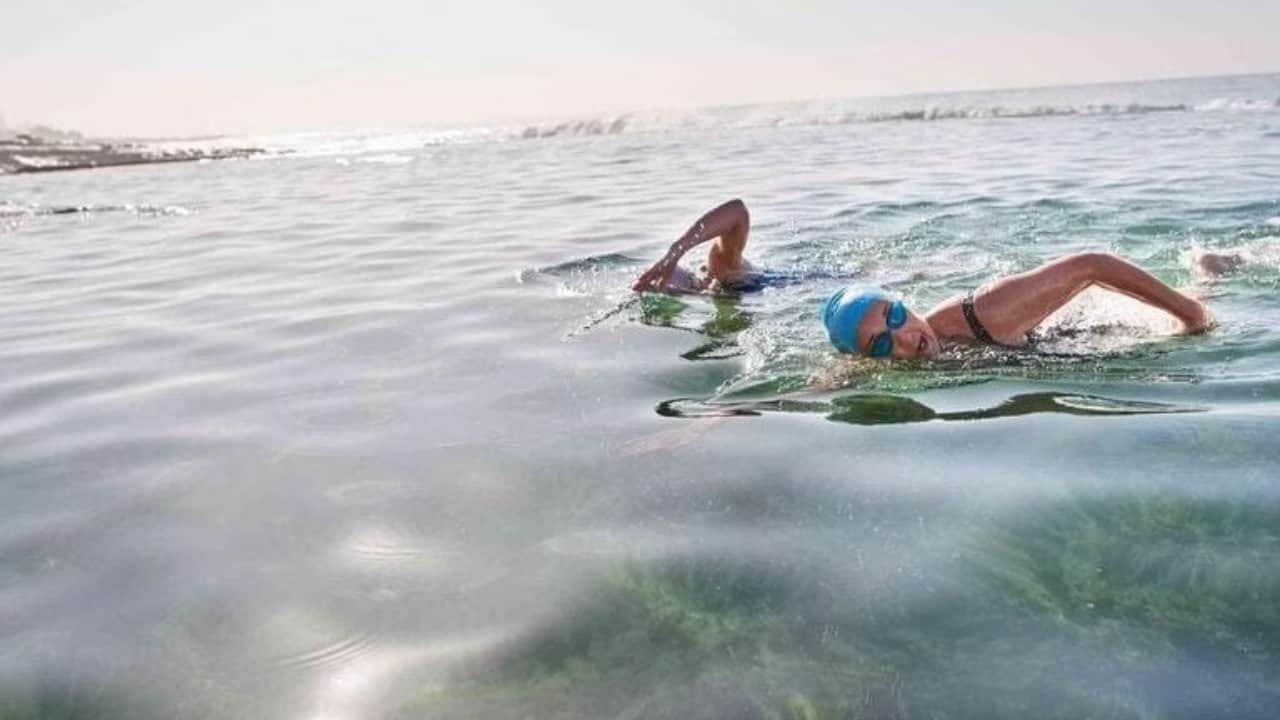
7 Best Swimsuits For Wild Swimming That Save The Oceans

9 Sustainable Activewear Brands To Break A Sweat With

13 Buy It For Life Products That Last Forever In Your Home

7 Refillable Cleaning Products For A Plastic-Free Shine
By Jenny Bell

Wet Cleaning Vs Dry Cleaning: 7 Reasons To Choose Wet

7 Ethical Banks In The UK That Invest In Our Collective Future
By Tenielle Jordison

pebble magazine is a member of the Sustainable Jungle Network and a member of One Percent For The Planet. Learn more here .

pebble magazine acknowledges the Bunurong / BoonWurrung people as the Traditional Owners of this country, pays tribute to all Aboriginal and Torres Strait Islander people in this land, and gives respect to the Elders past, present and emerging.
© 2024 pebble magazine | All rights reserved

Spotted: Prototype Fox Gravel Fork With Aero Fairings

The 7 Best Pinion Bikepacking Bikes & Touring Bikes in North America (USA)

My Unbelievable Cycling Journey Across Saudi Arabia (Nothing Like I Expected)

The Best Stabilized Bikepacking Bags & Harnesses (With Rack Supports)

The Exact Route Lael Wilcox Will Cycle Around The World (262km Per Day)

- Touring & Bikepacking Bikes
- Custom Bikes
Analysing Lael Wilcox’s Around The World Record Bike (29,000km in 110 Days)

The 7 Best Pinion Gearbox Gravel Bikes & Commuter Bikes In North America (USA)

The Priority Gemini Pinion Gravel Bike Has A Gearbox & Belt Drive For $2999

Here’s Why Gravel Bikes Will Get Much Better In 2025

The 9 Best Budget Gravel Bikes With Flat Bars (Under $1000)

The 7 Best Budget Gravel Bikes With Drop Bars (Under $1000)
The best touring and bikepacking bikes of eurobike 2023, the 2023 koga worldtraveller touring bike: tougher and more capable.

The Fastest Bikes of the Tour Divide Ultra Race (4,400KM Non-Stop)

Here Are The 13 BEST Touring Bikes You Can Buy In 2022
Member’s questions.

What Tents Can You Recommend That Are Similar To Your Mont Dragonfly?

How Was The Priority 600X Bike After 1.5 Years of Bikepacking?

How Do You Create Your Off-Road Routes In Remote Areas?

How Do You Stay Safe From Dangerous Animals In Africa?

How Do You Box Your Bike For International Flights?

What Do You Think About 10 Tooth Cogs On Cassettes?

Can You Recommend a Comfortable Carbon Seatpost For $50 or Less?

What Tire Pressure Do You Use And Recommend For A 2.1″ Width?

How Do You Keep Your Clothes Clean Long Term?
Do you recommend a bike alarm or tracker or just a good lock.
- Bicycle Drivetrains

The Kindernay 14-Speed Gear Hub is No Longer (They Went Bankrupt)

Are Chainless String Drive Bicycles a Genius or Terrible Idea?
How much does a dirty bicycle chain slow you down (drive efficiency test).

You Can Now Use Shimano GRX Shifters With Pinion Gearboxes (Hibox Shift Adapter)

The 2024 Pinion Gearbox Is A Derailleur Killer (Shift Under Load, No More Gripshift)

The Incredible $199 Internal Gear Bicycle Hub: Enviolo CVT Explained
3 promising new bicycle belt drivetrains from eurobike 2023.

Why The New Pinion Smart Shift Gearbox Is A Big Deal (New Possibilities)

Belts Are Now Better Than Chains On Bicycles (135,000km of Testing)

Inside The Revolutionary Honda Bicycle Gearboxes (All 3 Generations)

Are Chainless Digital Drive Bicycles The Future of Cycling?

Video: We Biked the Insane “Road to Hell” in South Africa

Video: Biking The Otherworldly Landscapes of the Jordan Bike Trail

Video: We Biked 3,000KM Into The Australian Outback (Amazing Experience)

Video: America’s Hidden Bikepacking Paradise (Joshua Tree to LA)
- Comfort Lab

BMC URS LT ONE Review: This Might Be The World’s Best Gravel Bike!
HiRide Sterra Suspension Fork Review: Is 20mm Travel Enough For Gravel?

The Vecnum Freeqence Is The Best Suspension Stem I’ve Tested (Review)

Redshift ShockStop PRO Race Suspension Seatpost Review: Next Level Comfort!

Cannondale Topstone Carbon Lefty Review: Does It Reduce Gravel Vibration?
Redshift shockstop endurance suspension seatpost review: insane comfort, cushcore tire insert review: a shocking result on gravel roads.

Specialized Diverge Comp Gravel Bike Review: Incredible Comfort!
Are 700c or 650b wheels more comfortable test #3.

Kinekt Suspension Stem Review: Too Springy?
Vibration testing six supple gravel tires – which is most comfortable.

The 5 Best Tubeless Sealant Products According To Science (Lab Tests)

The Cane Creek Invert is a 990g Gravel Suspension Fork With No Damper

Why Suspension Stems Are The Ultimate Comfort Upgrade For Bicycles

The 10 Best Rear Racks for Bicycle Touring and Bikepacking

4 Incredible New Gravel Suspension Forks That Outperform The Rest
The best flat pedals for bikepacking, touring and commuting, why flat pedals are better than clip-in pedals (for most people), 11 notable bikepacking bag finds from eurobike 2023.

The Most Interesting Bikepacking Tech From Eurobike 2023
11 exciting new bikepacking and touring products from eurobike 2023, 11 quirky but functional bikepacking products from eurobike 2023.

Complete List Of The BEST Bikepacking Panniers For Off-Road Use
- Folding Bikes

Video: Three Weeks In Sri Lanka On Folding Bikes

The New Brompton Folding Bike Has 2.4″ Tyres For Off-Road Terrain

Unfolding Thailand 8.5kg Gear List

- Travel Tips
How To Find A Bicycle Touring Companion or Bikepacking Partner

These Solo Women Cyclists Have Epic Bicycle Touring Experience

MapOut, The Best Smartphone Mapping App – Just Got Updated!

The Comprehensive Guide To Bikepacking Racing: Learn Everything In One Book

The Top 10 Countries To Travel By Bike (According To 150 Continent-Crossing Cyclists)

The 2019 Ultra Endurance Bike Racing Manual – By Apidura

This Jolie Rouge Touring Bike Offers ALL The Details!

The 30 Nicest Touring Bikes in the World (2014)

The Monkey Lab’s Surly Troll Is A Touring Bike That Could Survive The Apocalypse

Tandem Bicycle Touring: Everything You Need To Know

Tandem Bikes and Parts: Everything You Need To Know

Hase Pino Tandem: Info from Long-Distance Tourers

Review: Co-Motion Equator Tandem Frameset

Lachlan Morton’s Record Breaking Tour Divide Gear List (344km Per Day)

Hills Are Not Harder Than The Flat, Says Science

Cadence: The Secret To Cycling Easily Up Hills

Low Climbing Gears On Your Road Bike: Seven Road Crankset Options

Gradient Threshold: How To Calculate The Steepest Hill You Can Cycle Up

You’re Doing It Wrong: Hills Are NOT Harder Than Cycling On The Flat

Photo Gallery: Attempting To Cross Panama On Insane Backroads

Photo Gallery: Crossing Colombia feat. Tatacoa Desert and Los Nevados National Park

Photo Gallery: Finishing The Trans Ecuador and Cycling Into Colombia

- Photo Galleries
Photo Gallery: Quilotoa Lake, Cotopaxi Volcano and the TEMBR To Quito

RideWithGPS: How to Create and Export Custom Routes For a Smartphone / Garmin

Smartphone Navigation: Import KML Routes into the Maps.me App

Is MapOut The Best Smartphone Mapping App For Route Drawing and Elevation?
- Hiking Shoes
- Hiking Boots
- Hiking Sandals
- Trail Runners
- Base layers
- Hiking Shirts
- Fleece Jackets
- Softshell Jackets
- Rain jackets
- Down Jackets
- Hiking Pants
- Hiking Shorts
- Base Layers
- Rain Jackets
- Hiking Bras
- Baby Carriers
- Cookware Sets
- Water Filters
- Water Purifiers
- Sleeping Bags
- Sleeping Pads
- Hiking Poles
- GPS Devices
- Solar Chargers
- Dive Regulators
- Dive Computers
- Dive Watches
- Dive Wetsuits
- Dive Gloves
- Dive Lights
- Dive Knives
- Spearfishing Wetsuits
- Spearfishing Masks
- Spearfishing Fins
- Spearfishing Watches
- Freediving Wetsuits
- Freediving Masks
- Freediving Fins
- Freediving Watches
- Sit On Top Kayaks
- Inflatable Kayaks
- Fishing Kayaks
- Tandem Kayaks
- Touring Kayaks
- Kayak Paddles
- Kayak Seats
- Kayak Roof Racks
- Kayak Carts
- Stand Up Paddle Boards
- Touring SUPs
- Inflatable SUPs
- Fishing SUPs
- SUPs For Yoga
- SUPs For Surfing
- SUP Paddles
- Climbing Boots
- Belay Devices
- Climbing Shoes
- Women's Climbing Shoes
- Bouldering Shoes
- Approach Shoes
- Climbing Pants
- Bouldering Pants
- Mountain Bikes for Men
- Mountain Bikes for Women
- MTB Handlebars
- Bike Saddles
- Bike Computers
- Bike Lights
- MTB Jackets
- Bike Helmets
- Bike Packing Gear
- Fat Biking Gear
- Ski Bindings
- Ski Helmets
- Ski Goggles
- Ski Jackets
- Snowboarding Bindings
- Snowboarding Boots
- Snowboard Helmets
- Snowboard Goggles
- Snowboard Pants
- Snowboard Jackets
- Snowshoe Poles
- Avalanche Beacons
- Avalanche Probes
- Avalanche Shovels
- Ski Backpacks
- Surfboards For Beginners
- Surfboards For Kids
- Surfboard For Small Waves
- Soft Top Surfboards
- Foam Surfboards
- Body Boards
- Boogie Boards
- Kiteboarding Kites
- Kitesurfing Boards
- Kiteboarding Harnesses
- Surfing Wetsuits
- Men's Rash Guards
- Women's Rash Guards
- Board Leashes
- DLSR Travel Cameras
- Mirrorles Travel Cameras
- Point and Shoot Travel Cameras
- Fuji Travel Lenses
- Nikon Travel Lenses
- Tripods for Travel
- DLSR Landscape Cameras
- Mirrorles Landscape Cameras
- Point and Shoot Landscape Cameras
- Fuji Landscape Lenses
- Nikon Landcape Lenses
- Canon Landcape Lenses
- Tripods for Landscape Photo
- Wildlife Cameras
- Wildlife Lenses
- Wildlife Tripods
- Wildlife Monopods
- Birdlife Cameras
- Birdlife Lenses
- Surfboards For Small Waves
47 Travel Tips To Plan Your First Bike Tour
Preparing to set off for a bicycle tour is exciting. Whether you are about to embark on a journey of your lifetime or just short trip there is a lot to consider before you set off.
When we were planning our world tour on bicycles we felt overwhelmed with all the information available on the web. To help out first-time bicycle travelers we’ve compiled a list of travel tips inspired from questions asked by our readers, advice given to us by other bike travelers and our own experience.
Some tips might seem like common sense but it is easier to see that from the comfort of your home. It’s just some ideas to get you thinking about life on the road.
Like with anything you set out to do, you learn best by trial and error. However some pointers along the way can help you make the most out of your first bicycle tour.
1. TAKE IT EASY. Don’t try to crank out 100km a day everyday. Too much cycling can wear you down and cause you to burn out.
2. DON’T SPEND TOO MUCH MONEY ON GEAR. It’s easy to get caught up in all the high tech travel gear that is out there. Remember to keep it simple, you will appreciate it when you have more money to spend on ice cream after a hot day of cycling!
3. Learn at least the basics of LANGUAGE OF THE COUNTRY you plan to cycle in. Not only will you be able to order food and ask for directions you will be able to have conversations with locals.
4. DON’T BE AFRAID TO ASK. Most people want to help, if there’s something you need whether it’s water or directions just ask.
5. DON’T BE AFRAID TO BARGAIN . In some cultures bargaining is the norm. We saved lots of money in Mexico asking for discounts at hotels and markets. Of course don’t fight over a few cents when someone is in more need than you are.
6. SOMETIMES YOU NEED A LIFT. Your bike breaks down, you get sick or maybe you are just fed up with cycling. There’s no shame in asking for a ride or taking a bus every now and then.
7. Put down the GPS and TALK TO PEOPLE. When you are lost cycling down some dirt road leading to who knows where, a GPS will do little to help you.
8. TAKE A BREAK. The daily grind of cycling, camping and eating pasta every night can get old. It’s good to take a break from time to time to recharge your body and mind.
9. BE INVOLVED IN THE BICYCLE TOURING COMMUNITY. The web is filled with great bicycle touring blogs , forums and groups of bicycle tourists for you to take advantage of. It’s a great way to research routes, ask questions, get advice and connect with other bicycle travelers.
10. ASK TO CAMP . Camping saves you an incredible amount of money while on tour. Police and fire stations often host cyclists and allow them to camp on the station grounds. Bring you own tent or camping hammock and you are all good to go.
11. WATCH OUT FOR SPEED BUMPS . We have met several cyclists who have had some major injuries caused by not seeing speed bumps on downhills.
12. It’s okay to SPLURGE EVERY NOW AND THEN. If you’ve had some rough days on the road treating yourself to some good food or a nice room is a quick way to lift your spirits.
13. TAKE LOTS OF PICTURES. Some of the best pictures we have are from when our friend Pablo came to visit. We had already been on the road for a few months and the day to day life of cycle touring had lost its photo interest but not for Pablo. His photos of our nights camping, cooking and cycling always bring back fun memories.
14. PICK UP ABANDONED CLOTHES. Sometimes we come across a t-shirt on the side of the road and we pick it up and use it as a rag to clean the bike.
15. LOOK OUT FOR FRUIT TREES. Fruit trees, especially in tropical countries are great sources for afternoon snacks.
16. GET OFF THE BIKE. Don’t abandon your other interests just because you are on tour. Hiking and other outdoor activities are great ways to spend some time off the saddle.
17. KEEP A JOURNAL. Writing at the end of the day or during your lunch break is great way to use your mind.
18. MAINTAIN YOUR BIKE. Simple maintenance such as cleaning and oiling the chain can go a long way.
19. START AS SOON AS YOU CAN. Make someday today.
20. If you use ORTLIEB PANNIERS carry a repair kit. These patches were life savers when squirrels chewed two massive holes through my front panniers!
21. BE OPEN TO LEARNING. Traveling is a great way to learn new skills such as languages or cooking.
22. Get used to being asked the SAME QUESTIONS OVER AND OVER …and over! Where are you from? Where are you going? Try to keep a smile on your face and remember it might be the first time this person has ever met someone traveling by bicycle.
23. USE HOSPITALITY WEBSITES such as Warmshowers and Couchsurfing .
24. If you are traveling through a country in which the LANGUAGE IS VERY DIFFERENT than your own write a few sentences about yourself and your trip and find someone who can translate them into the local language.
25. If you are traveling as a couple , in some traditional countries it’s best to SAY THAT YOU ARE MARRIED instead of just boyfriend and girlfriend.
26. PROTECT YOURSELF FROM THE SUN. I’ve even started wearing a lightweight long sleeve shirt to protect my arms from becoming fried.
27. TRY LOCAL FRUITS AND DISHES.
28. Find PODCASTS on topics that interest you and listen to them while cycling.
29. DON’T GET TOO FRIENDLY WITH STREET DOGS and remember to wash your hands if you touch them.
30. CARRY ENOUGH WATER BOTTLES and refill them often. Running out of water in the middle of nowhere is a terrible feeling.
31. HIDE YOUR PASSPORT AND CASH in your back panniers. Keep a small amount on your handlebar bag for daily expenses.
32. Keep a BAR OF SOAP HANDY so you are able to wash your hands after changing a tire.
33. You DON’T NEED ULTRA CYCLING CLOTHES . I prefer comfortable casual clothes while cycling opposed to cycling clothes. When we get to town I feel like less of a weirdo!
34. BE FLEXIBLE . Weather and road work can force to change plans, roll with it.
35. WHEN YOU MEET OTHER BICYCLE TOURISTS on the road don’t bombard them with a million questions about how many times they change their chain and what type of tires they use.
36. Don’t be afraid to GIVE UP YOUR PLANS and take each day as it comes.
37. TAKE CARE OF YOURSELF. Eat well, shower and wear sunscreen. We’ve meet some rough looking cyclists out there!
38. EXPLORE. There are some routes that are little to unknown don’t be afraid to leave the main road to explore them.
39. WRITE TO YOUR MOM . While on the road it’s easy to loose track of days. While you are living in the moment your parents and loved ones want to hear from you.
40. Don’t be afraid to CARRY A LITTLE EXTRA WEIGHT for something you enjoy. There are some non essential items that bring me a bit of joy, like when I can take off my sweaty cycling sandals and put on my flip flops at the end of the day.
41. DON’T WORRY WHAT OTHERS THINK. There will be plenty of people out there telling you are crazy for wanting to go travel by bicycle.
42. Don’t worry to much about PRE-TRIP TRAINING.
43. Remember HARD TIMES ARE NEVER FOREVER. The uphill climb will eventually lead to an amazing down hill.
44. If you are sensitive to light and sounds carry a pair of EAR PLUGS AND AN EYE MASK. Sleeping outside, the sunrise and rooster crows will prevent you from getting those extra hours of much needed sleep.
45. INVITE YOUR FRIENDS . You might be surprised which of your friends would be willing to come join you on the road for a few weeks.
46. DON’T WORRY ABOUT GOING TOO SLOW. It’s not a race. The slower the go the more you will see and experience.
47. HAVE FUN! Don’t take touring too seriously. Enjoy the ride.
BONUS TIPS FROM OUR READERS
- Put drier sheets in your panniers, tent and sleeping bag to keep things a little fresher along the way. – Kristin and Rusti of Krusti’s Slide Show Blog .
20 Responses
Put dryer sheets in your panniers/tent/sleeping bag to keep things a little fresher along the way!
Great tip, changing into good smelling clothes is such a luxury on the road!
Interesting post! Picking up abandoned clothes makes sense. You can save some penny from buying rags in the market. 🙂 I have been introduced to cycling tour in your blog. So I am learning a lot, thanks. 🙂
Saving money is a plus but even more, t-shirts are great for cleaning the chain, some rags can be too thick. Welcome to the world of bicycle touring Nichelle 🙂 Let us know if you have any questions.
Hey Amanda,
Great tips for anyone starting out on their first tour!
I’d also add to choose the right bike type – preferably hybrid, touring or road. Last thing you’d want is to take a gear-less bmx. That would definitely make #47 an impossibility haha
HEY AMANDA,
Great Tips! Helped me alot as i am planning my first bicycle trip.
Anyways, keep up the good work. I really like the content you put up on your blog.
Glad to hear you found the post useful. Where are you headed to? Enjoy your tour!
i love travelling when it comes with bike riding. best part of it is you can be very close to the nature with bike travelling and few problems you need to deal with but overall it is best travelling plan to go with bike.
Couldn’t agree more Jeff.
Understand that when it comes to accommodation do what you feel most comfortable with. Personally I a bit of comfort (yes it does cost a bit more) and stay mostly stay in B & B’s or small family owned hotels with character. You do not need to camp (although I have) or use the suggestions mentioned on point #23.
If bicycle touring in North America or Europe just carry basic bike repair items you can (and have on several occasions) find a repair shop nearby.
Very true Tom! Everyone should ride their own ride 🙂
Awesome Tips! Helped me a lot as i am arranging my first bike trip.
In any case, keep doing awesome. I truly like the substance you set up on your web journal.
That’s great to hear! Enjoy your first bike trip 🙂
Some god tips there, thanks. Looking forward to doing my first cycle trip at the end if the month…solo, down through Ireland, camping, 3 days only but so looking forward to the challenge of it. Is my mileage expectations too high?? 150k, 120k and a final 105k day?
THANK FOR SHARING. I am going to plan to travel in Argentina and this post is very helpful information for me.
That sure is a comprehensive list – I am off for a cycle trip this weekend. Thanks
Great article, really good balance between cycling and plain ole common sense! I used to do trips like this when I was younger but now find myself only doing day trips. You’ve reminded me that there’s more to life than the day to day!
If the language is a huge problem and you really want to ‘talk’ to people … Many locals are very curious about what on earth you are doing and where you come from. However, geo-knowledge is often poor, so ‘Europe’ (for us instead of the Netherlands) is the best we can do. In Asia and Africa family is the most important thing in the world. So take some pictures with you of your mom, dad, brothers and sisters and grandparents. Use your imagination and hands to explain who’s who. We had great times !
A great list I will use when I start cycle touring in the near future
These amazing tips can lead even the beginner to a perfect safe jurney.
Cycling travel tips, resources and product reviews
But it’s not just holidays: you’ll find sportive guides, mind-boggling-no-BS product reviews, nutrition info, training insights, recovery guides, where to stay when overseas, where to find bike hire shops, where to ride and loads of other useful tips and tricks.
Join over thousands (yes, thousands) of others who get my cycling holiday tips, world-famous product reviews (it’s not just Google that loves ’em), product giveaways and lots more direct to their inbox, free.
- Cut through the internet information overload with expert insights and practical tips.
- No-BS product reviews. If something’s crap, I’ll tell you.
- Premium content.
- First dibs on spots on our exclusive France cycling tours.
Add your email in and I’ll point you in the direction of the best articles to get you started.
Get 85% of my tips, free
Cycling holidays, reviews, training, in-depth articles.
Let's get started, shall we?
Get started on Velonomad using the jump-in points below. Have fun, I’ll be right here waiting if needed.
Holiday Handbooks
There’s information everywhere, so cut to the chase with my expert & actionable how-to handbooks.

Click to learn more
Product Reviews
Thousands of people rely on my no BS, 100%-honest-to-God cycling product reviews.
Expert reviews

Everything France
Watching the TDF, taking your bike, insurance, Etape, Marmotte, campervans and LOTS more.

Start learning
Grand Fondo Training
Think you can do Etape and other epic sportives without training? Bzzzzzzzt, wrong!

Find out more →
Internet Overseas
Tweet your mates from the Alpe D’Huez and inspire fits of jealousy? Find out the best way.

Make this happen
Prepaid SIM Cards
Prepaid SIM cards for France and the EU: easy to use, calls/text/data and ready to use.

Save money now
Performance
Stretching, self-treatment, fuelling and more.

Get in shape
The how, the what and the why: Etape, Marmotte, Haute Route and more.

Start exploring
Videos & Podcasts
Video reviews, videos, podcasts, interviews and more.

Learn stuff
Ebook guides, musettes, Prepaid France and EU SIMs and more.

The Archives
Bored? Alt-tabbing at work? Dig in here and browse all the articles.

Alt-Tab, Alt-Tab!
About Velonomad
Who and what is Velonomad, contacts and more.

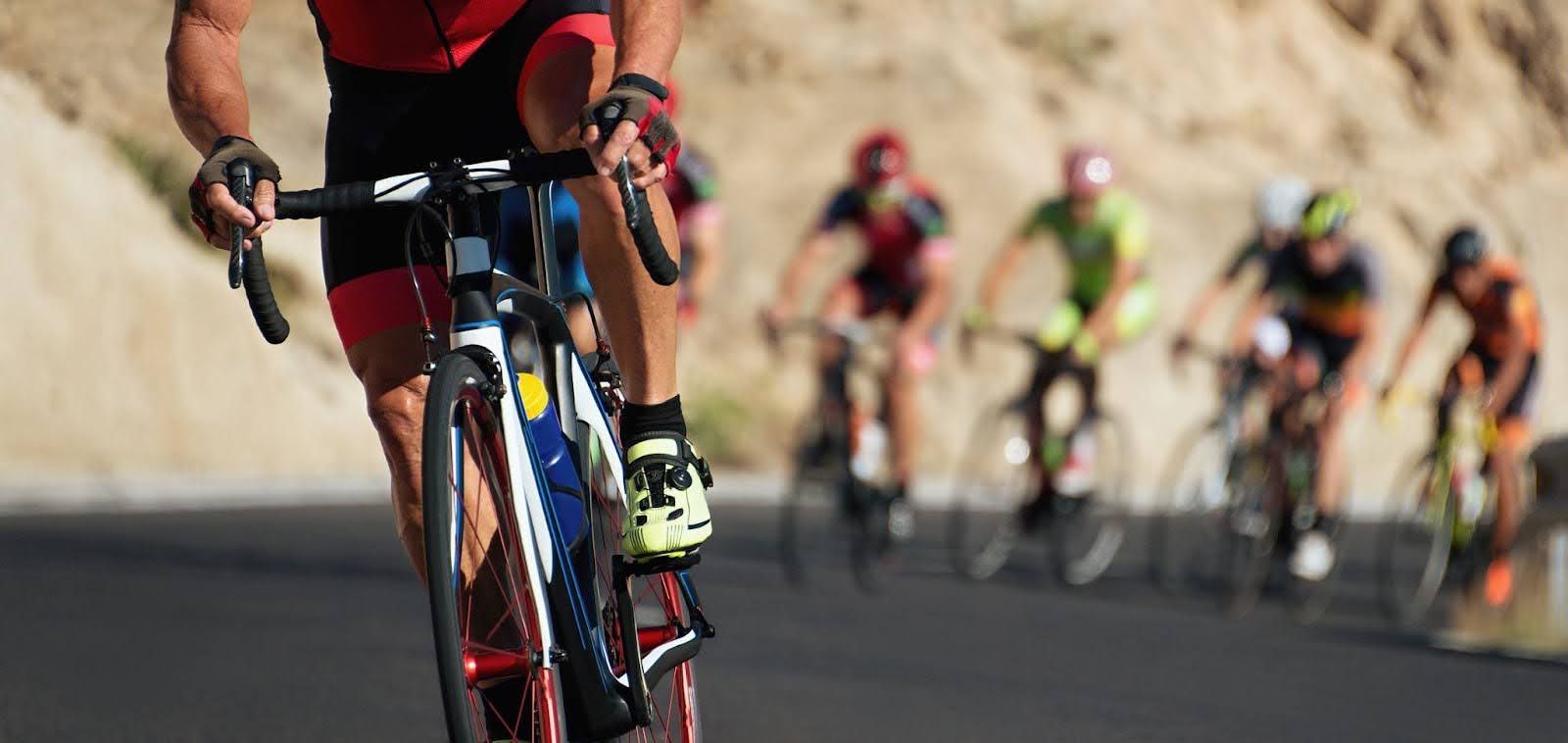
5/24/2024 – Mark Nessmith
Preparing for a cycling vacation: Tips and top travel destinations
For serious cyclists, summer is prime time to enjoy a holiday in the saddle. Whether you’ve got a cycling trip coming up, or are still in the planning stages, we’ve put together some travel tips to help ensure you and your group enjoy your rides to the fullest!
A cycling vacation can be a thrilling adventure, offering the chance to explore new landscapes, challenge yourself physically, and immerse yourself in different cultures. For avid cyclists, destinations like the French Alps, the Dolomites in Italy, California's Pacific Coast Highway , the Spanish island of Mallorca, and New Zealand are among the most popular options.
Whether you’re self-planning a cycling trip or working with a travel agency, proper preparation is key to ensuring a fun, memorable (and safe ) experience.
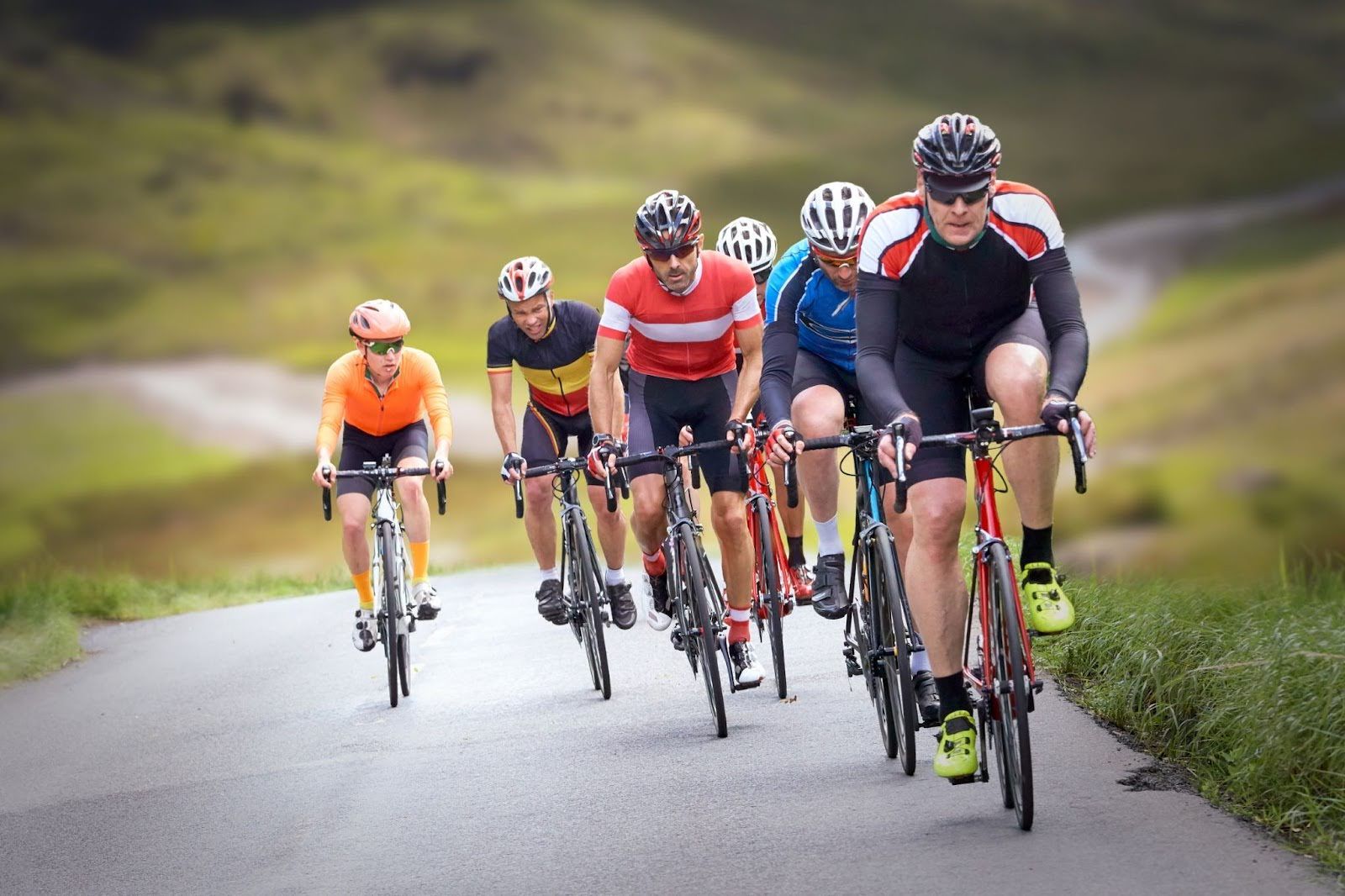
With that in mind, we’ve put together some essential tips to help you get ready for your cycling vacation. And if you’re still in the planning stages, down below, we’ve included some bucket-list-worthy hotspots you should consider.
Physical preparation for your cycling holiday
It goes without saying that, to make the most of your cycling vacation, physical preparation is key. Begin a training regime well in advance of your trip to strengthen your legs and build endurance. (Not to mention getting your rear end reacquainted with time in the saddle!)
An indoor cycling app like ROUVY is an excellent tool to use when prepping for your trip. Having the ability to ride indoors offers the flexibility to train regardless of weather conditions or time constraints. This allows you to maintain a consistent training schedule, which is crucial for building fitness.
Climbing and interval training are essential components of preparing for a cycling holiday, especially if your destination includes hilly or mountainous terrain. ROUVY lets you select real routes that match the gradients of the routes on your itinerary, helping you build leg strength and the endurance needed for long ascents. Additionally, interval training sessions on the app can improve your power and cardiovascular fitness, making you more versatile and resilient. (Take a minute and check out “How To Climb Like A Pro Cyclist,” by Robbie Ferri , an ultra cyclist.)
Beyond the countless real routes on ROUVY , the app’s workouts and structured training plans designed by pros, performance tracking, and engaging features provide a comprehensive and effective way to build both fitness and confidence.
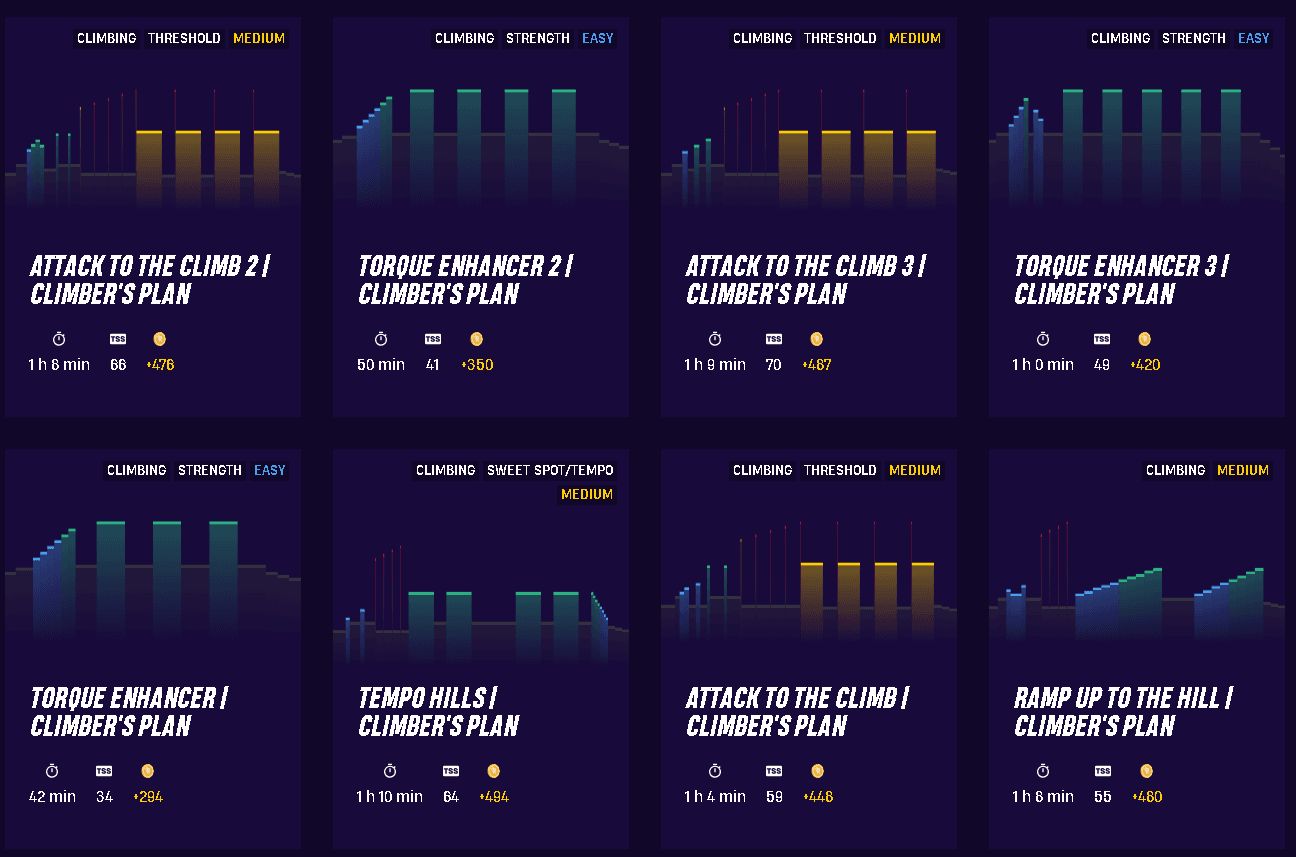
One cool thing about cycling workouts on ROUVY is that they’re done on real routes, so you can simultaneously train for and preview some of the rides you and your group will be doing on your trip.
ROUVY workouts to build endurance: Increase your riding distances gradually to build stamina. Aim for long rides on weekends and shorter, more intense sessions during the week. Recommended workouts: SURGE ENDURANCE | PUNCHEUR'S PLAN , ENDURANCE BUILD UP and HILLY ENDURANCE
ROUVY workouts to improve your climbing: Incorporate hill training and interval sessions to improve your climbing ability and overall power. Recommended workouts: ATTACK TO THE CLIMB | CLIMBER'S PLAN , MOUNTAIN TIME TRIAL and TORQUE ENHANCER | CLIMBER'S PLAN
TRAINING PLANS DESIGNED BY THE PROS
Andy schleck training plan.
2010 Tour de France winner Andy Schleck put together a plan to help cyclists ”build a bionic body and be ready for any physical challenge.” Includes La Vuelta stages.
JoSÉ Hermida Training plan
Designed by José Hermida of Spain, a silver medal winner at the 2004 Olympics, this plan will boost your overall fitness with two sessions per week over a six-week period.
Lidl-Trek training plan
Lidl-Trek's plans were designed by UCI pros to improve explosiveness, strength and speed. The intense sprint drills in the first workout offer a taste of what's in store.
Off-bike physical prep
Off the bike, low-impact exercises like yoga or Pilates can be great for firming up your core strength and flexibility, which are vital for maintaining proper posture and preventing injuries. Also consider strength training in the gym, combined with a regimen of stretching.
Misc. cycling-vacation tips
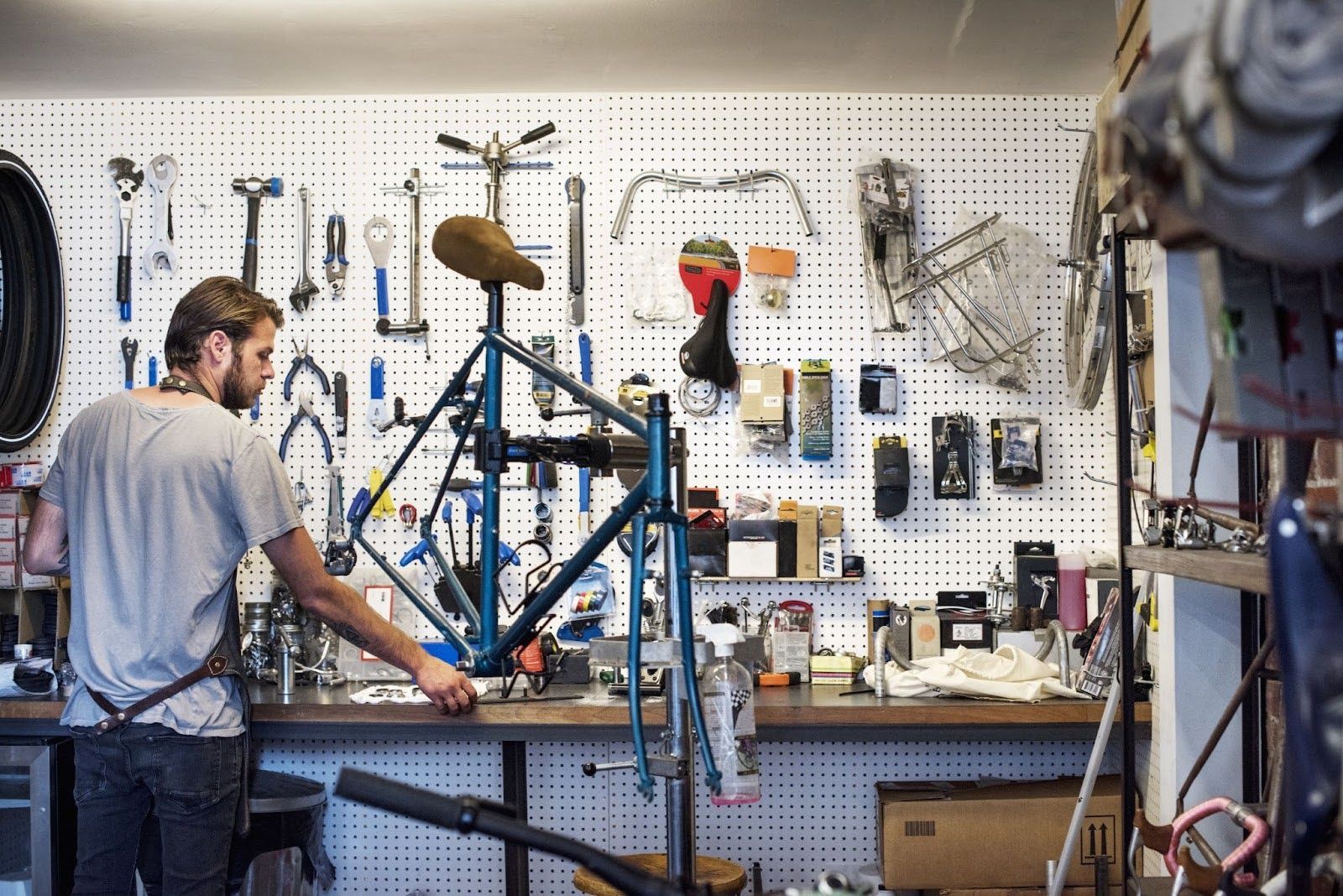
Before you travel, make sure your bike is in perfect condition. Take it to a professional mechanic for a complete tune-up. Be sure he or she checks the brakes, gears, and tyres. You should also make sure the bike you intend to take is a perfect fit for your body. A properly fitted bike is important for comfort, safety, performance optimisation and good aerodynamics.
Other things to consider:
Check your spare parts and tools – Be sure your emergency kit includes essential spare parts such as inner tubes, a chain link, and brake pads, as well as tools like a Leatherman multi-tool, tire levers, and, of course, a quality pump.
Comfort – Ensure your bike is comfortable for long rides. Consider upgrading your saddle and/or investing in padded shorts.
Pack smart – You’ll need to balance between being well prepared and travelling light. Pack moisture-wicking, breathable cycling jerseys and shorts, and don’t forget a rain jacket, arm and leg warmers, and gloves.
Hydration and nutrition – Bring water bottles and a hydration pack. Pack energy bars, gels, and snacks to maintain your energy level. Also, consider taking along supplements for endurance .
Navigation and safety gear – Carry a GPS device, maps, and a power bank to ensure your devices remain fully charged. Also, bring a first-aid kit and any necessary medications.
Choosing your next cycling holiday destination
Before embarking on your cycling vacation, research various destinations to find the one that best matches the skill level and interests of everyone in your group.
When planning your rides, consider daily distances, elevation changes, and the locations of accommodations and rest stops. Using GPS devices or apps like Strava can help in mapping out your journey and keeping you on track.
With an abundance of iconic routes in cycling hotspots around the world, ROUVY is a great way to decide which routes in any given destination will work best for your group. By riding routes from home, you can familiarize yourself with the terrain and elevation profiles of your upcoming vacation destination. For example, if you’re planning to cycle in the French Alps, you can pre-ride several routes beforehand in order to experience the climbs and descents. This virtual exposure helps you mentally and physically prepare for the actual conditions you’ll face.
Here are just a few of the bucket-list-worthy cycling destinations around the world that are well represented on ROUVY. (For a more in-depth look at the most popular cycling holiday destinations, be sure to read article TOP 10 cycling holiday destinations for which you can prepare on ROUVY by ROUVY expert Lauren Wolff.)
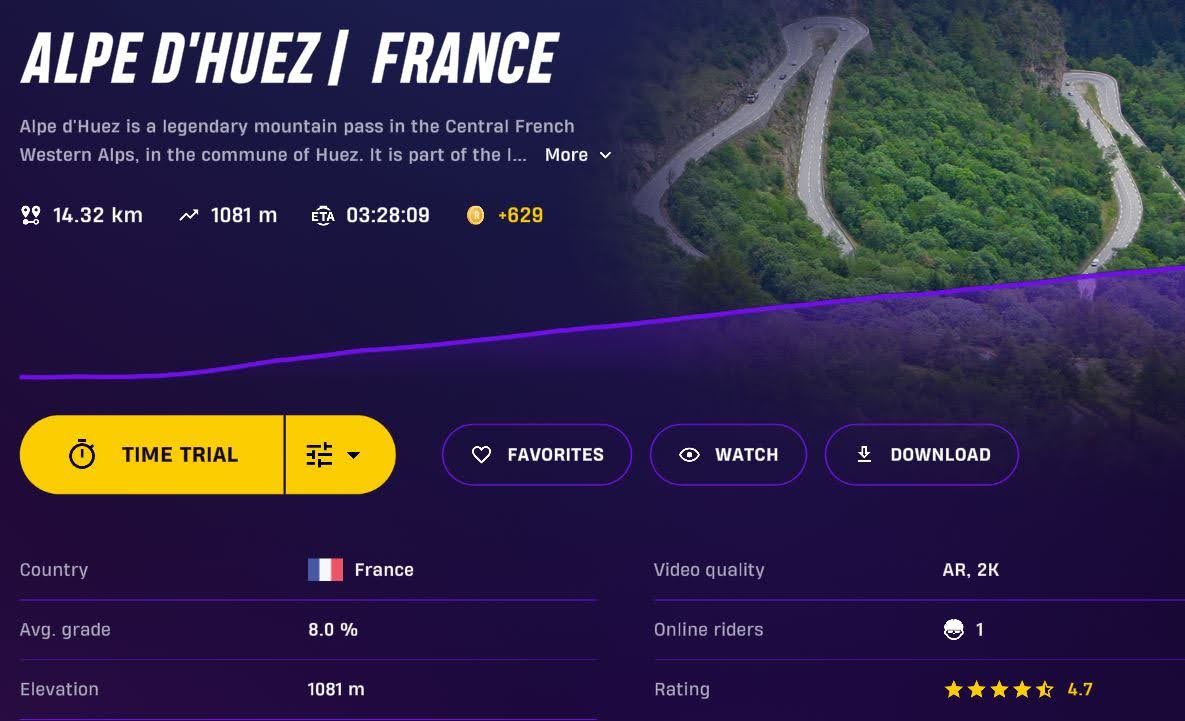
Cycling vacation hotspot: The French Alps – A bucket-list destination for avid cyclists due to the stunning mountain scenery, challenging climbs, and famous routes like Alpe d'Huez and Col du Galibier, the French Alps offer diverse terrain and breathtaking views.
Three iconic routes in the French Alps: ALPE D'HUEZ | FRANCE , LACETS DE MONTVERNIER - CHAUSSY | FRANCE , COL DU TELEGRAPH - GALIBIER | FRANCE
Cycling vacation hotspot: Mallorca, Spain – Mallorca’s a perennial favourite for its diverse terrain, scenic coastal roads and mild climate. The island offers challenging climbs, such as Sa Calobra , and routes through picturesque villages making it an ideal spot for both challenging and leisurely rides.
Three iconic routes on Mallorca: CAP DE FORMENTOR | MALLORCA , PUIG MAJOR - MALLORCA , CHALLENGE PEGUERA MALLORCA | SPAIN
Ride on real routes, all around the world
TRY ROUVY FOR FREE
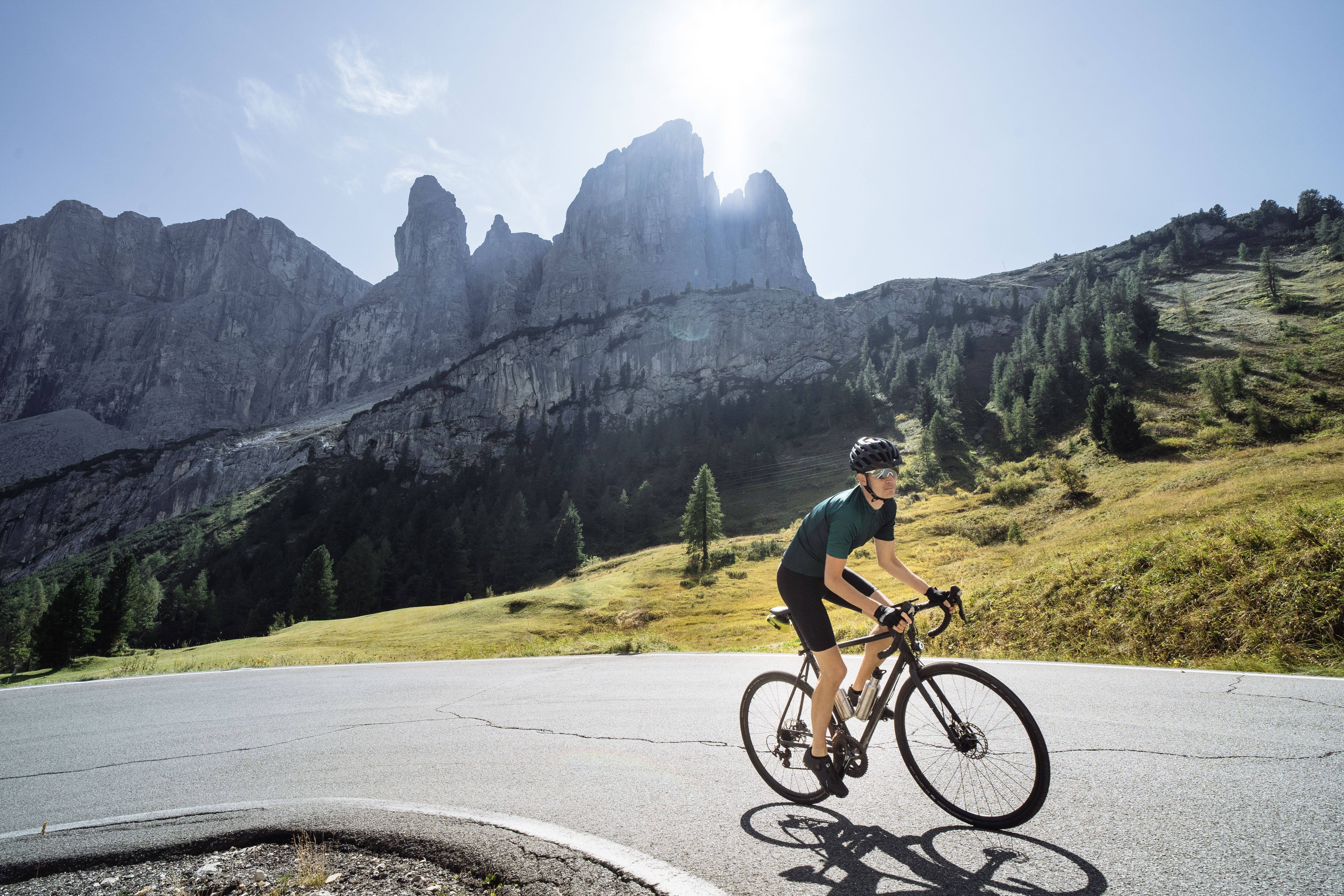
Cycling vacation hotspot: The Dolomites in Italy – In addition to being a noted skiing destination in the winter, the snaking, scenic alpine roads in the area make the Dolomites in northeastern Italy a Mecca for avid cyclists.
Three iconic routes in the Dolomites: PEDALITALY PASSO PORDOI - DOLOMITES - ITALY , SELLA RONDA | ITALY , CAMPOLONGO-PORDOI-SELLA-GARDENA
Cycling vacation hotspot: California’s Pacific Coast Highway – The PCH is great for avid cyclists due to its scenic ocean views, diverse landscapes, and mild climate. The route offers challenging climbs, coastal breezes, and iconic landmarks like Big Sur, making it perfect for cyclists seeking both adventure and natural beauty.
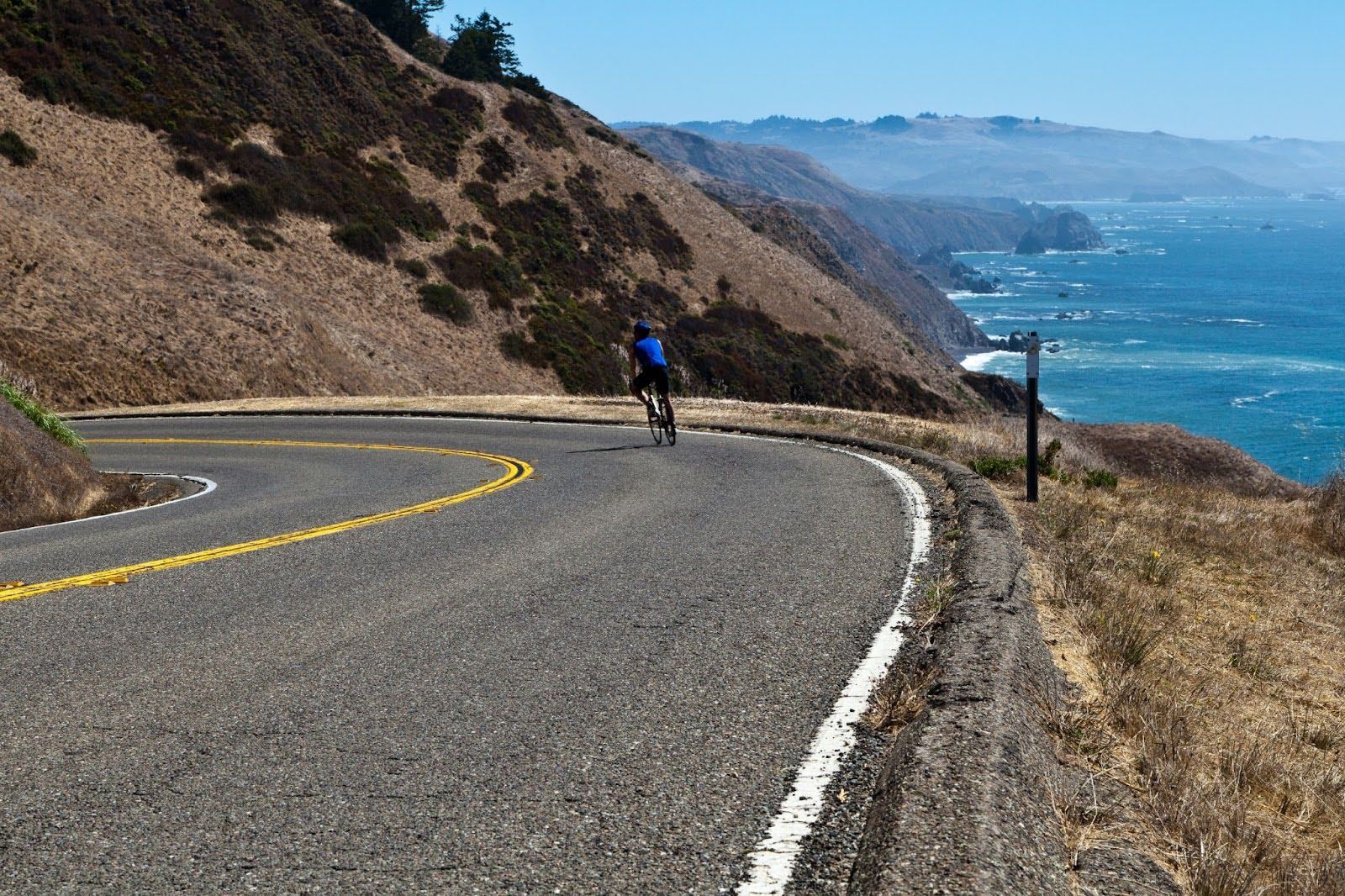
Three iconic routes along the California coast: PACIFIC COAST HIGHWAY NO2. | CALIFORNIA | USA , PACIFIC COAST HIGHWAY | USA , REDWOOD HIGHWAY | CALIFORNIA | USA
Cycling vacation hotspot: New Zealand – With its diverse landscapes, from stunning coastlines to rugged mountains, New Zealand has long been a popular choice for serious cyclists. Here, you’ll find challenging routes, and breathtaking scenery on iconic rides like the Otago Central Rail Trail.
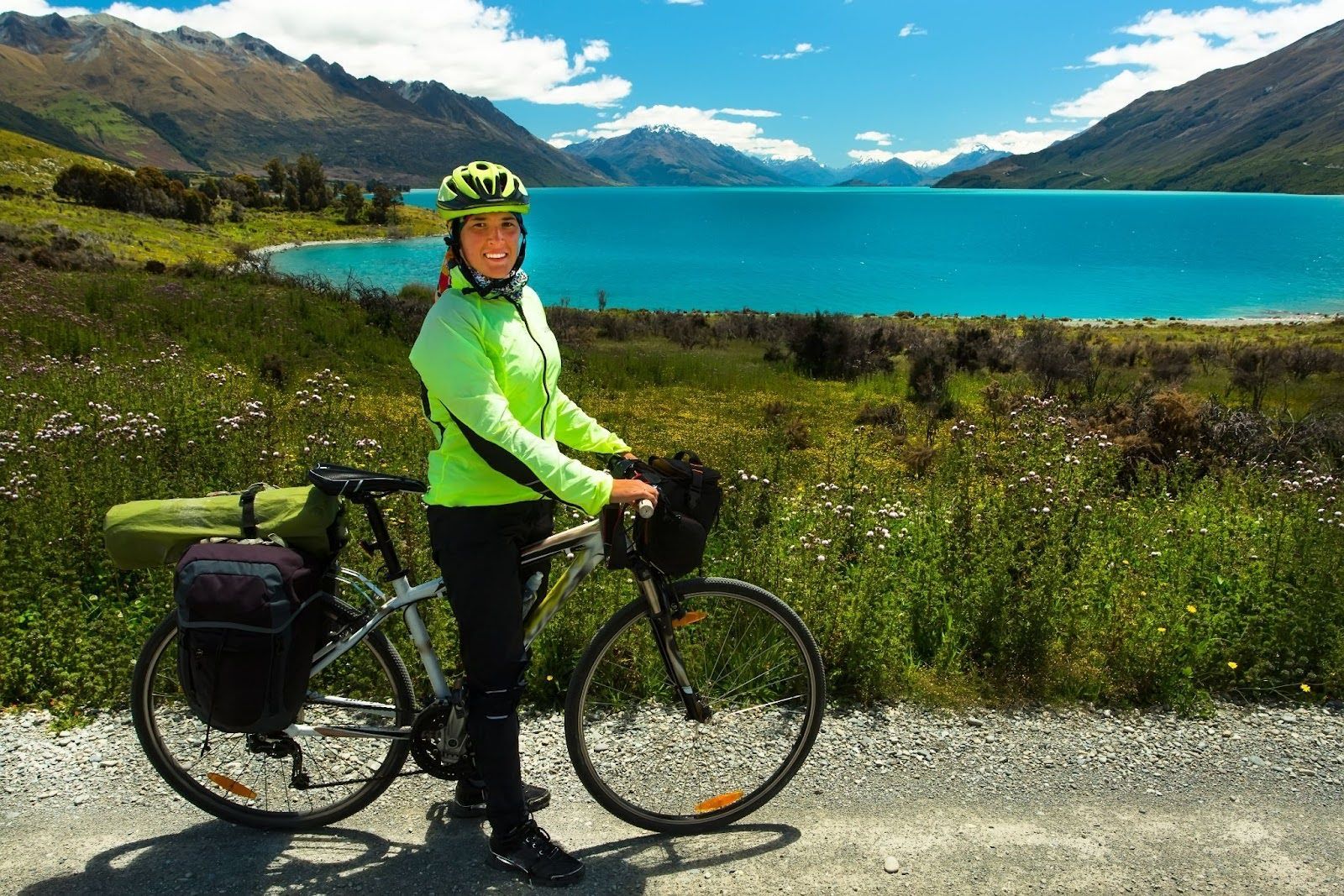
Three iconic routes in New Zealand: LAKE PUKAKI | NEW ZEALAND , ARTHUR'S PASS NATIONAL PARK | NEW ZEALAND , DUNEDIN | WORLDS STEEPEST STREET | NEW ZEALAND
Time to hit the road!
Following these tips will hopefully have you well prepared for an unforgettable cycling vacation. Whether you’re navigating mountain roads in France or Italy, or pedalling along the coast of California or New Zealand, the right preparation will help you make the most of your adventure.
One last thing! When you return from your trip, check in on the ROUVY Athletes | Cycling group on Facebook or the ROUVY club on Strava and let us know how it went!
FREE! TRY OUT ROUVY
Ride with ROUVY, the world’s most realistic cycling app. With 1,300+ real routes, pro training plans and more, staying motivated is easy with ROUVY, Get a free trial!
7-days free trial for you
Should I book my cycling trip through a travel agency, or plan it by myself?
Should we rent bikes locally, or transport our own, how can i use the rouvy indoor cycling app to get ready for my cycling holiday, what gps/mapping app should i use to plan and navigate my cycling routes, what type/s of insurance coverage do i need for a cycling vacation, related posts.

Saddle as a service? Meet 3D-printed Joyseat
Posedla crew from the Czech Republic makes the most customizable saddle in the world - the Joyseat. Say goodbye to sore muscles, back aches and wrist pains.
Read article
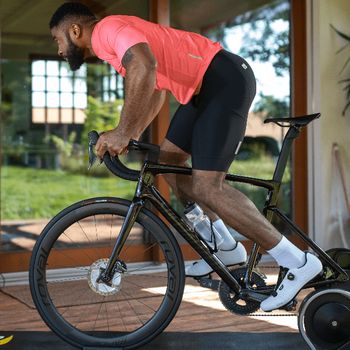
Why you should look for a Zwift alternative this winter
ROUVY indoor cycling app could add a new level of realism to your training this winter. Try the ROUVY app as an alternative to your Zwift routine.

All you ever wanted to know about chamois cream and were afraid to ask
In this article, we are focusing on your butt and discomfort while riding longer routes. Learn about saddles, chamois creams and bike fitting.
- What's new
- Ride with ROUVY
- Indoor trainer compatibility center
- How to ROUVY
- How ROUVY works
- Press releases
- Whistleblowing
Information
- Video tutorials
- Community portal
- Strava club
- Official Facebook group
Copyright © 2024 , VirtualTraining s.r.o. All rights reserved.
Bike Touring Essentials | Your Ultimate Bikepacking Gear Checklist
- Updated on: March 5, 2021
This article may contain affiliate. For more information, please see our disclaimer here.
Table of Contents
Bike touring is one of our favorite ways to explore a new country . Hitting the open road, breathing the fresh air, and viewing incredible scenery is a rush that’s hard to explain. We’ve had the lucky opportunity to complete bike tours in some of the most beautiful places on Earth and gained practice prepping for epic cycling adventures .
Preparing for a cycling tour is no easy task , but we’ve learned which bikepacking gear is essential. From roadside tools to camping gear , we have a solid list of bike touring essentials we always pack. You may need to adjust your specific bikepacking gear based on the country you’re touring , but our guide covers the basics and a bit more.
If you’re stuck on what gear, tools, or clothing to pack, refer to this ultimate bikepacking gear checklist . Many items have been lifesavers , and others made things easier on the road . When you’ve finished packing for your bike tour, check this list twice to make sure you’ve got all the bike touring essentials so you are ready for anything .
Our Biking Background

Our first big cycling adventure was a 3-month cycling tour in Iceland . We tackled the Ring Road but also pushed ourselves in the harsh conditions of the Icelandic Highlands . Cycling in Iceland was TOUGH as we camped in the wild without a shower , filtered our own drinking water, packed food for 10 days, and even crossed FREEZING COLD glacial rivers . We had a terrifying moment where I almost drowned if Kelly had not paid close attention to save my ass.
We also completed a 3-week cycling trip in Switzerland , and this bike tour was much easier. Roads were paved, modern campsites included warm showers, and we crossed several villages each day to buy food . Switzerland also had the luxury of trains if we didn’t feel like climbing a mountain pass. The scenery for this cycling tour was jaw-dropping, like Iceland , but didn’t have as many challenges.
We always use Ortlieb panniers to pack our bikepacking gear, and these 100% waterproof bags are the best. They stored our cameras and laptops when crossing glacial rivers and survived unscathed. It’s one of our bike touring essentials for whichever country we decide to explore.
When packing your bikepacking gear, these are the bike touring essentials you’ll need for any cycling tour .

1. Touring Bike
For the obvious, you want to pick out the touring bike that’s right for your specific needs . The key is selecting a bike that’s comfortable, reliable, and durable for long distances . You’ll also need to consider the road surfaces and the bike best fit for the terrain on your tour.
2. Water Bottles & Holders
Staying hydrated on the road is crucial, and you always want water on you . If you’re cycling in desolate conditions, we recommend a filtered water bottle .
3. Panniers
These nifty bags attach to the front or rear racks of your bike and contain lots of storage space . Ortlieb panniers are the brand we recommend , but you’ll find cheaper alternatives.
4. Head & Rear Light
You absolutely don’t want to be cycling at night without lights to guide you . This helps you spot road hazards and also lets other vehicles know you’re there . It’s also good to use the lights during the day, for extra visibility.
5. Helmet
This should be a no brainer. Safety first to protect your head if you tumble off your bike.
Also Read: The ultimate Swiss biking holiday guide
Repair Tools
Try not to go overboard with repair tools since packing too many items will add too much weight . A tube repair kit will usually do the job until you reach the next bicycle repair shop. But before starting your tour, give your bike a thorough inspection to ensure no repairs are needed. If you’re preparing to cycle rough terrain, we’ll list extra bike touring essentials you should consider packing.
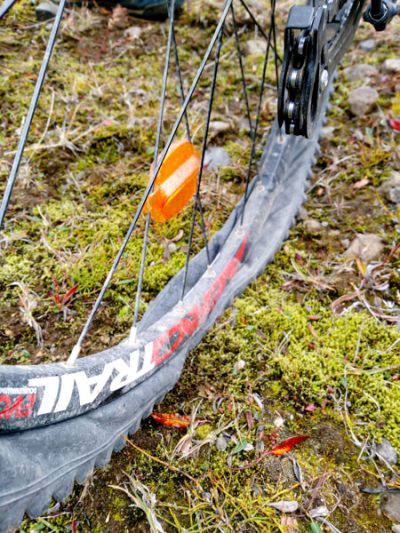
6. Tube Repair Kit
An essential packing item for inner tube repair or patching a damaged bike tube .
7. Tire Levers
Makes removing and installing tires much easier without damaging your bike.
8. Mini Pump
A lifesaver when you need to inflate a flat tire .
9. Grease
Helps reduce friction to keep your mechanical parts in working order. Before your cycling tour, ensure the grease is adequate for the specific weather conditions you’ll encounter.
10. Duct Tape
An alternative to patching an inner tube if you’re close to a repair shop. Duct tape can also be used for emergency rim tape, holding food packages together, or to temporarily repair broken gear .
11. Tie wraps
Comes in handy to fix a broken luggage rack for example. We would be in huuuuge troubles if we didn’t have some tie wraps with us while cycling in the middle of nowhere in the highlands of Iceland.
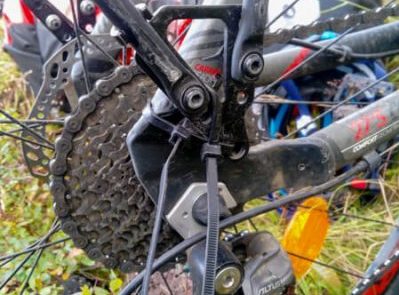
12. Bicycle Multitool
A must-have that has all the needed tools to adjust or make repairs to mechanical parts on your bike .
On-the-Bike Clothes
When you set off for your adventure, make sure you’re equipped with the following bikepacking clothing essentials .
When you set off for your adventure, make sure to add the following bikepacking gear to your bike touring clothing essentials .
13. Cycling trousers or shorts
Whether you prefer shorts or something longer, you want full freedom of movement on your bike . This will reduce friction and moisture while you’re on the road. Before your cycling tour, try many different styles to ensure you find the one that fits your body right .
14. Arm warmers
These come in handy to keep your arms warm and to protect your skin from sunlight . It’s easy to start your day when you might still feel a little cold. Usually, you warm up in just a couple of minutes , and it’s easy to ditch the arm warmers without having to stop to unzip your jacket or pull your hoodie over your head .
15. Bicycle jersey
A quality cycling jersey helps you stay cool and comfortable on the road . The material absorbs sweat from your skin and moves it to the outer surface to keep you dry. This also helps you regulate your body temperature more efficiently.
16. Cycling shoes
Cycling shoes are designed with stiff soles to keep your feet rigid while pedaling. This increases efficiency by making it easier to push through each pedal stroke . You can also use click-system shoes for extra control while pushing through frequent climbs.
17. Waterproof jacket & pants
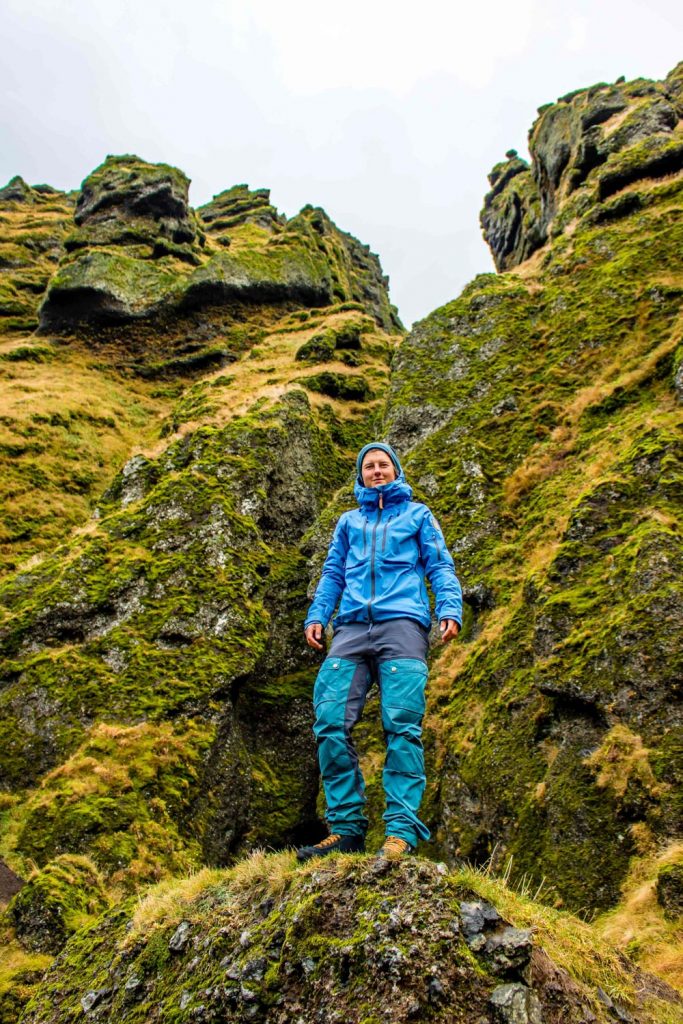
Don’t let a sudden rain shower cancel a part of your cycling tour. With waterproof cycling clothes, you’ll remain dry and comfortable to face a light rain or downpour . Read our review of the Fjällräven Keb Eco Shell jacket to check out one of the top rated waterproof jackets.
18. Waterproof shoe protectors
If you want extra protection from the elements, waterproof shoe protectors keep your feet dry on the road . Cycling with soaked shoes feels disgusting and slipping on covers will protect you from the cold, rain, and wind .
19. Cycling gloves & socks
For extra warmth and comfort (and style), add gloves and socks to your list with bike touring essential.
Off-the-Bike Clothes
Here are some clothing recommendations when you hop off your bike for the day and do other activities .
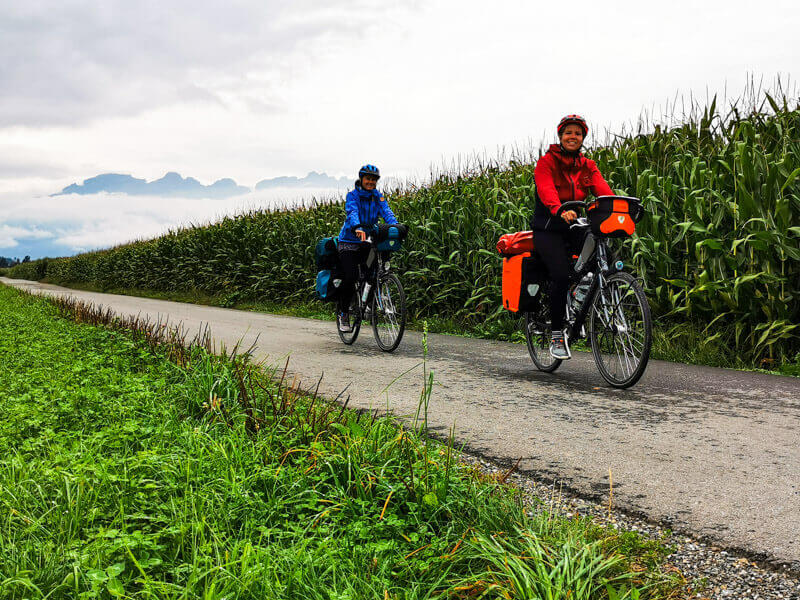
20. Warm vest or sweater
After a long day of sweaty cycling, you want something dry that will keep you toasty at night . Make sure it protects you from wind and cooler temperatures you’ll often experience at night.
21. Relaxed trousers
If you’re not on your bike, then have spare trousers to give your legs a chance to breathe . It’s not healthy to wear tight-fitting clothing all the time . Depending on the weather, you can bring long, short or both types of trousers to relax after cycling.
22. Short & Long-Sleeve shirts
Similar to trousers, you want to pack clothes to give your upper body a chance to breathe . Loose-fitting t-shirts give you a chance to air out after wearing your cycling clothes all day. You can pack a variety of short and long-sleeve shirts based on the weather at your destination .
Pack enough pairs of socks to keep your feet dry when you’re finished cycling each day.
24. Warm hat
Bring a ski cap to keep your head and ears warm durings stops or while camping at night . Body heat escapes from your head , and a cozy hat will help you stay warm during rest breaks.
25. Swimwear
In case your destination has swimming holes, hot springs or simply a swimming pool , pack swimwear that’s ideal for a refreshing dip.
26. Comfy shoes
When you’re not cycling, give your feet a chance to stretch out with cozy sneakers . Your cycling shoes are specifically made to increase efficiency on the road and likely won’t provide comfort while walking around .
Also Read: The Greatest European Bike Tours of All Time
Camping Gear
When you’re cross-country cycling, don’t expect to find cozy hotels everywhere on your route. Even if there are hotels, they may not have space to accommodate you or your touring bike and gear . That’s why we prefer camping and include these bikepacking camping items in our list with bike touring essentials.

27. Lightweight Tent with Vestibules
Pack a tent that doesn’t weigh you down on the road and keeps your stuff dry at night.
28. Sleeping Pad/Bag
Keep yourself warm and comfortable each night to ensure you’re well-rested for the next day of cycling.
29. Cooking Utensils
A must-have when your bike tour ventures into desolate conditions where you’re far from shops for several days. Check out our camping cooking equipment post for recommended supplies.
30. Headtorch
Have one handy to guide you whenever walking around your campsite at night .
Miscellaneous
Although a few of these items aren’t specifically related to bike touring, they’re still essential for general travel . There are some that you can’t travel abroad without and others that come in handy while on the road .

31. Passport
If you’re cycling tour is within a different country, this should be the #1 item on your bike touring essentials list .
In case you run into trouble, it’s always wise to have spare money on you . Make sure you have cash in the country’s currency and credit cards that function abroad .
33. Lightweight Towel
Especially when you go camping this is a must-have on your packing list. Lightweight towels pack small, dry quickly and are obviously very lightweight!
34. Sunscreen
Sunscreen is vital for skin protection when you’re cycling in areas of intense heat, high altitude, or even in the snow.
35. Sunglasses
You want to protect your eyes from sunlight and ensure you’re not visually impaired on the road . If you wear glasses, investing in prescription sunglasses is an alternative to contacts and regular sunglasses.
36. Toiletries
To freshen up each night, bring essential toiletry items like toothbrushes, toothpaste, deodorant, soap, contact lenses, hand sanitizer, etc.
37. Underwear
It may sound obvious but don’t forget to pack clean, dry underwear to change into after a sweaty day of cycling.
38. Camera & SD Cards
If you plan on taking pictures, find a safe storage spot for your camera and SD cards . The countries we’ve completed cycling tours had unbelievable scenery , and we captured tons of gorgeous shots on each adventure .
39. Spare Food
Always have spare food packed in your bag for an energy boost . Even if it’s just a few protein bars, you never know when extra food might come in handy .
Things to Keep in Mind
Now that we’ve gone through the bikepacking gear basics, here are other important things to consider for your bike tour .
- Pack as lightly as possible – This naturally makes cycling easier and lessens the stress placed on your body. You’ll exert more energy with extra weight and spend more time reaching each destination. If you’re in doubt about a particular item, don’t bring it on your cycling tour . You could always purchase that item during your trip in the worst-case scenario.
- Check your destination’s weather and road conditions – As your cycling tour approaches, stay updated on the daily weather forecast for your destination. Some countries have unpredictable weather patterns , and you want to prepare yourself for all road conditions. Whether you face rain, snow, or shine , make sure you’re able to adjust your bike gear or clothing.
- Consider the time of year – The specific season you choose to travel will determine what type of bike touring gear you need. Some cyclists prefer cooler seasons , and others like hot, humid conditions . Whichever season is your preference, this will alter the bike gear, clothing, and camping gear you’ll need .
Pin for later
Save this post on your Pinterest account in your ‘Bike touring board’ and find it back easily next time.

We love to hear from you
Thanks for checking out our ultimate bikepacking gear checklist with bike touring essentials you need on any cycling trip. Hopefully, this has provided the information you need to start packing for your adventurous cycling tour . If you have bike tour experiences, or if you have other tips to recommend, please leave a comment below .
Don’t forget to check out our destination pages for other ideas when you cycle around spectacular locations across the globe. For more travel tips and inspiration, check out more of our travel tips .
All travel tips posts
2 thoughts on “Bike Touring Essentials | Your Ultimate Bikepacking Gear Checklist”
A good list that will help people with little experience. Personally, I much prefer platform pedals. Semi open shoe for warmer weather, and low ankle boots for the cold. I highly discourage cycling shoes for rough roads that have steep inclines, like so many in Tasmania. If I happen to stall on a steep accent, I can’t get out of the clips fast enough and fall over Also, I would include in the list something which is often not mentioned – keeping ones arse clean After a poop, I wash. Nothing worse than having skid marks on the chamy I use Chamois skin shorts for my long distance trips, not the synthetic ones ☺
Thanks for pointing out that we should pick the right cycling shoes that will keep our feet rigid while pedaling. I will keep that in mind now that I plan to book a bike tour for my husband and I this coming August. We should use the right shoes to ensure that we won’t be in any accident for this tour in celebration of our anniversary.
Leave a Comment Cancel Reply
Your email address will not be published. Required fields are marked *
Related Posts

Iceland Packing List: What to Pack in Winter and Summer?

How To Install An Off-Grid Solar System In Your Car Successfully?

30 Best Single & Multi-Day Hikes in Europe
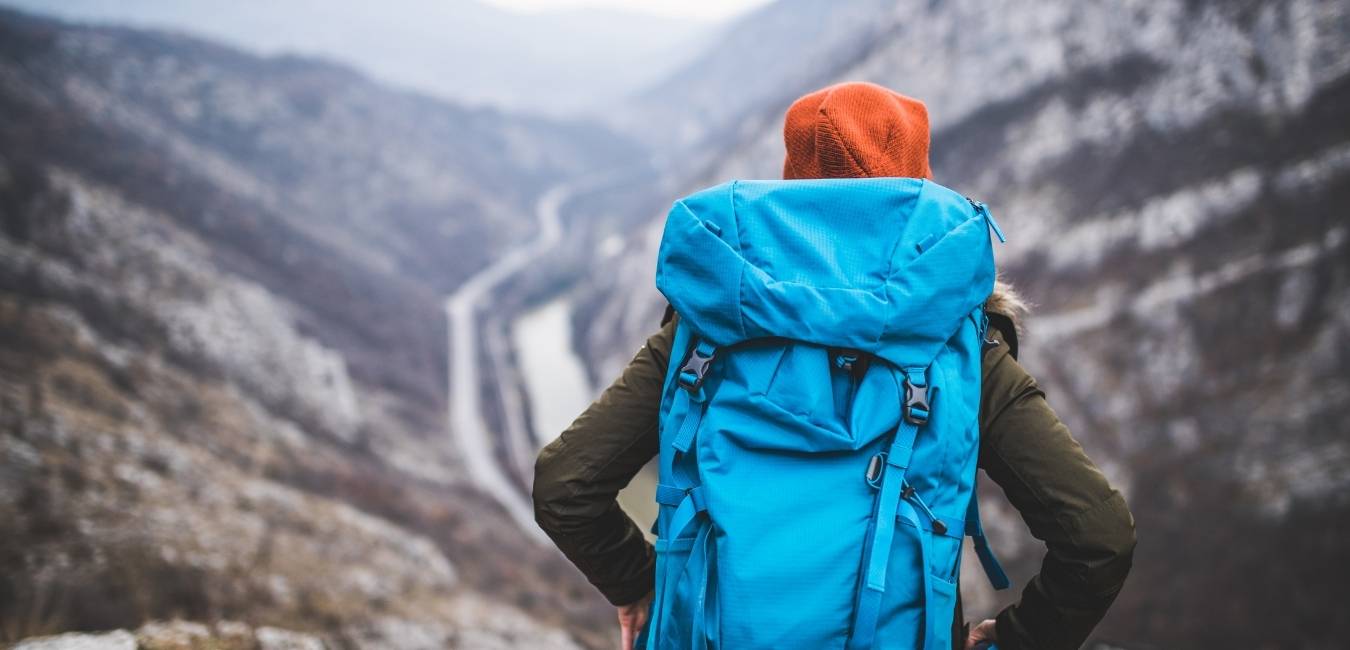
2024’s Ultimate Backpacking Checklist for Multi-Day Hikes
Also interesting, best daypacks for women, best travel insurance, destinations, travel tips.

Exploring the Earth by bike- cycling travel tips, the best bikes, and biking gear
Our planet is much larger than it looks like on the globe. Its surface with all the points of interest is so diverse. The faster you travel, the less you can see, touch, and feel. If you travel by plane, you can reach the other side of the Earth for 1-2 days, but you can see almost nothing on your way. By train, bus, or car you can see more things on the way, but traveling is not that fast. And traveling by bike is much slower, but you can enjoy many more things on your way. Besides, you can travel on roads and trails that larger vehicles can’t go. So, exploring the Earth by bike has its good sides, attracting many travelers. Let’s take a look at some important and basic cycling tips, to prepare for a great cycling journey.
Table of Contents
Traveling by bike essentials
Many people like cycling , but not all of them think about it as a way of traveling. In other words, some people enjoy cycling just as a sport. They can do it on a static bike as a fitness device, or just would circle a stadium for exercise or speed contest. Some cycling travelers do it too, but only as a preparation for a real journey. So, now we will focus on real biking travel. And it has its pros and cons. Let’s get into details.
Cycling pros
Cycling has many features that attract travelers. They still focus on the travel, and a bike is only a tool for their trip, not the center of the trip. And it is a good tool that can provide a unique experience which no other way of travel can provide.
- Enjoying the scenery in more detail. By bike, you can travel with a certain speed which is slower than the speed of motor vehicles (in most cases, but not always!), so you can look around and see more things on your way.
- Discover new places . Cycling is a great way to explore new places. You can cover more ground on a bike than you can on foot, so you can see more of the country or city that you’re visiting. There are also many cycle-friendly countries, where cycling is a popular way to get around. Croatia is among the top of such countries and if you happen to be there, taking cycling tours around Croatia can be a great way to see the country and experience its culture and natural beauty. The challenging rides with like-minded travelers will be an unforgettable experience for you.
- You can stop everywhere , at any time (unless you are in a group, and have to follow others). Yes, while cars can’t stop wherever the driver wants, there are no road signs forbidding cyclists to stop, fix something, enjoy the scenery or just relax.
- Diving into the environment . While you ride your bike, you can breathe the fresh air, smell fragrant of forest, grass, village, food, and other sources. You can also touch and try everything on your way. Enjoying the descents. Every cyclist likes descents. When you descend, you just relax moving faster than normal, focusing only on your brake to control the speed.
- You can go where big vehicles can’t go . Yes, you can ride on narrow trails and streets (just be careful about people), and even there is a sign “No cycling”, you can just push it for a while, then proceed to ride.
- You can do it in the mountain – if there is a rugged section of a trail, which is difficult for riding, you can just proceed on foot for a while pushing your bike, then proceed to ride as normal.
- Saving money . Bicycles don’t need petrol, parking fees (only with some exceptions), and toll fees. Yes, you may have some expenses, but in general, they are only for repair, or for transporting by train or bus if necessary.
- Exercise . Finally, it is a sports activity, good for your health. And instead of doing only inside a stadium, by travel, you can add a lot more around you.

Cycling cons
Of course, not everything is great while you ride a bicycle. Otherwise, everybody would travel by bike. Here are the cons of cycling travel:
- Time. Traveling by bike is slow. Yes, slow traveling has its good side, but the problem is our time. Most of the people, including travelers have scheduled times, vacation time limits, visa expiration, etc. I would really wish to enjoy a limitless time, but in the reality, it is almost impossible. Even those who go on a biking expedition like crossing Europe from UK to Istanbul , still have to consider the seasons and be on time to the proper place during the proper season.
- Danger on the heavy traffic roads. This is maybe the biggest problem for bikers. If some bikers happen to lose their life or at least be injured badly, it happens on such roads. It is especially dangerous when the road is narrow and there is not enough space for the biker. You have to avoid such roads to protect your life. And even if you can’t avoid it, at least you have to think like a car driver.
- Bike stealing. It is probably not everywhere in the world, but in most cases, it is a real danger. If you want to enter a building- a supermarket, a restaurant, a museum, or something else, you have to lock your bike outside. But even this can’t guarantee 100% protection. Some smart thieves can use strong cutters that can cut almost every lock, and they can do it very quickly. It can be also a problem at the night. You camp beside the road, wake up in the morning and your bike has gone.
- Atmosphere. Breathing fresh air, smelling the fragrance of the environment is nice, but the atmospheric conditions that you are exposed to are not always friendly. First, if there is a strong wind, it can be a problem. Yes, if you ride in the same direction as the wind, it is a pleasure, because the wind helps you. But when you ride against the wind, it can be exhausting. Cold weather, especially with rain or snow can make you feel freezing unless you are well equipped. Also, riding on snow and ice is very difficult, in some cases impossible.
- Vulnerability (and dogs). When you ride a bicycle, you are more vulnerable than in a car, bus or train. It is especially true about dogs. Dogs have such an instinct- they often chase after fast-moving objects. Sometimes they chase passing cars, but you are protected there. They can attack hikers, but if hikers know what to do without panic, usually they can avoid biting. However, bikers move fast, and they are unprotected.
- Falling. It is seldom, but still possible. Falling can happen if you stop too quickly, or if you have problems with your brakes. Also, descending by bike is exciting, but if the slope is too steep and rugged, you can fall badly. And when you fall, you can easily break your arm. This can’t happen in the car or a normal hike. Luggage limit. You can’t bring too many things with you. Yes, you can travel by bike supplied with a rack or saddlebags, and it can allow bigger luggage. But at the same time, it makes your bike heavier, and you can especially feel it when you ascend on a slope.
- Exhaustion. Finally, when you cycle, you use your own energy. And it is not limitless. Sooner or later you can feel too tired to proceed and would need a rest, especially if you have to “fight” against a strong wind or a slope.

So, as you can see, traveling by bike can be a very exciting experience, but not without problems. And you would always try to avoid these problems to increase the pleasure of it. You can make just a short bike trip in a city or nature, or you can go on a long expedition crossing a continent.
Three types of cycling travel
In general, there are three types of cycling travel, depending on where is your cycling route. You can cycle in a city (or a village), on a road, or in nature. These places are different and the challenges you face there, are different too.
City cycling
This is the easiest place to cycle. Or at least, the place with the least requirements. You can travel by plane, train, or bus, stop in a city and find a hotel. Then you can just find a rental bike company, take your bicycle, and cycle around the city. You don’t need to bring your luggage, as it can stay in the hotel. Also, most of the time you will ride slowly. And you even don’t need a special bike- a simple city bicycle would be enough. In fact, almost every bicycle would be ok to use.
Today, many big cities in the world provide public bikes that you can find everywhere in the city, use their payment system, and ride them wherever you want. Yes, in many cases, the most difficult part is how to make the payment to unlock the bicycle. Once you do it, it is very convenient, because you don’t need to worry about stealing. When you have to enter a building (a supermarket, a museum or other), you just leave it on the street, and when you go out, just find another bicycle. In fact, if the city you visit is on your long-distance biking route, you should better leave your bike in the hotel and use only public bicycles.
But out of the city, things are different.
Road cycling
Here I mean cycling on paved roads out of the cities. If you need speed, here is the place. You still can’t cycle faster than the cars, but you can be much faster than the bikers in the city, or those on a mountain trail.
You can do it with every kind of bicycle, but only one kind can provide a good speed- the road bike. It is lightweight, with thin tires. So you can reach a good speed, reaching 40, even 50 km/h, and you can maintain this speed for a long time. Thus, you can travel about 100-150 km per day, even more, without a problem. And you have to be careful about cars.
Of course, you can travel on a paved road with a mountain bike or even a simple city bike, but just you can’t develop such a high speed. Your average speed would be 15-20 km/h, with a city bike even lower. And for one day you would pass 70-80 km, only sometimes 100 and a little more.
Cycling in nature
This is my favorite place of cycling. Here I mean dirt roads or trails. It can be in a plain area, on hills or deep in the mountain. Speed is much lower, the terrain is diverse and sometimes you may need to stop and push your bike.
For this kind of terrain, you need a mountain bike. Its main feature is the thicker tires, designed for dirt, mud, stones, and other kinds of rugged roads and trails. City bikes would be very improper- they are usually with thinner tires, and without shock absorbers. Road bikes are improper too- their thin tires would easily sink into the dirt or mud and it makes cycling difficult.
However, the best kind of bike that can be used for long-distance travel, although not such passable like the mountain bikes, are the touring bikes. By touring bike you can travel in a city, on a road (but just slower), and on dirt roads. You can ascend and descend. And most importantly, you can load much more luggage than any other bike.
Of course, there are still some places on the Earth that no bike can be used. If these places are small, in some cases you can just push your bike to cross such section, then proceed cycling. But usually much practical would be if you just leave your bike and proceed in another way through such an area.

So, let’s back to the roads and places where you can cycle, and focus on the proper bikes that you should use.
Proper bikes
As you can see, in general, there are three types of bikes that you can use for travel. But only one of them can be proper for all kinds of cycling travel, and even this type is not perfect, according to the table below:
So, let’s take a look at the first type of bicycle- the city bike.
City bikes are the best for a big city on a plain. In such a city you would need to stop often on crossroads, waiting for the green light, or you need to ride slowly. Many cities in the world today are supplied with bike lanes, where you can ride faster, but again, you don’t need to be too fast.
These bikes are usually lightweight. They can be designed for men, for women, and kids, with various wheel diameters accordingly. There are bikes with one speed or with a multi-speed system. If the city you ride is flat, you don’t need a multi-speed system, but if the city is built on a mountain, there are sloped streets that you have to ascend, and changing the speed would help you.

Below you can see some of the best city bikes:
So, all these bikes are great for exploring a city, but slow for long-distance trips (yes, those with a multi-speed system can be faster, but still not the best), and quite improper for dirt roads in nature.
Let’s see the second type of bikes- road bikes.
Road bikes are designed for speed. To achieve it, they are made as more as possible lightweight, with narrow tires. Another feature of the road bikes is their rudder, usually bended downward, so the biker should be more inclined ahead. This is to increase their aerodynamics and to decrease friction. Thus, you can reach a speed of 40-50 km/h, even more. They are best if you want to travel the world on paved roads.
All of these bikes are designed with a multi-speed system, so you can easily ascend on sloped roads. In fact, you can climb a mountain (but again, only on paved roads), then descend from it. You can pass long distances within a day, even if you ride against the wind. And again, they are designed for men, for women, and kids.

Let’s see some of the best road bikes for 2020.
Of course, you can ride such a bike in a city (and most probably you have to leave a city to reach another city), but since you have to stop often or ride slowly, it would be not the best, compared to the city bikes. As for dirt roads, as I mentioned above, road bikes are not proper. They would not only sink deeper in soft ground but also can be easily damaged if the trail is covered by stones.
For such terrain, you need a mountain bike.
Mountain bike
Mountain bikes are designed for rugged terrain. Their most essential feature is the thick tire. With such a tire, you can’t achieve too high speed, but in the mountain, you actually don’t need it. But you can ride on various kinds of trails and dirt roads- on a soft muddy surface, stony surface, grass, dirt, dust, and of course, on normal paved roads too.
Again, these bikes are always supplied with a multi-speed system. They are a bit heavier than the road and city bikes, but that’s not a big problem. Another important feature of the mountain bikes is their shock absorbers. You would definitely need them on a bumpy surface, not only for your comfort but also for the protection of your bike.

Mountain bikes are usually more expensive than the other bikes. But there are still some cheaper examples. Let’s see some of the best cheap mountain bikes below.
However, if you are looking for really the best (and inevitably expensive) mountain bikes, take a look here .
Mountain bikes are good for a short biking expedition because only by such a bike you can ride on dirt roads and rugged terrain, at the same time you still can ride in a city, and on the paved roads (just with lower speed). Although they are called “mountain bikes”, of course, they can be used on dirt roads in plain fields, along the sea coast, in plain forests, etc. But there is another kind of bike, especially designed for long-distance trips- the touring bike.
Touring bike
If you want to cross a continent, and don’t want to ride only on roads, you need a touring bike. Like the mountain bike, it has thick tires, but its design is different. Here you don’t seek speed as the road bikes, don’t seek simplicity as the city bike, and don’t seek high passability as the mountain bike. But you seek an opportunity to bring as more luggage as possible, for a long time journey.
For this purpose, touring bikes are designed with frames which allows installing more luggage. Normally, touring bikes don’t have shock absorbers. Yes, they are lightweight, but when you load all your luggage on such a bike, it will become heavy. These bikes are supplied with a multi-speed system, so you can ascend and descend without problem, but with all the luggage on them, it would be difficult to ride on rugged stone terrains and mountain trails. Instead, you can travel the world on paved roads, dirt roads, even grasslands and other relatively smooth kinds of surface.

These bikes are not designed especially for men, for women or for kids, and there is no need for that, so you can just look for a better functionality and quality.
See the best touring bikes for 2020!
So, all these bikes are great, especially the mountain and the touring bikes which can be used everywhere (where bikes can go). Some of these bikes are hybrid, with features of other kinds of bikes. But there is an important question- how to arrange a long-distance trip or an expedition by bike?
How to arrange a long-distance expedition with bike
Here is the problem. You want to explore a country- let’s say France. And you want to make it by bike. You are from the USA, you have a good touring bike, but the only way to use it for a France bike tour is to transport it somehow to the starting point in France. It is not so cheap, so probably a better option is to rent a local bike.
Transportation by plane
If you anyway want to ride your own bike, you can do it. Most airlines allow transporting a bicycle, but there are various conditions. The cost can be very different, depending on the airline and the plane’s route. Besides, they have packing requirements you have to follow. Bike that can be folded have a better chance to be accepted by the air companies.
Transportation by train or bus
You can also transport your bike by train. Again, most trains allow transporting bikes for some cost, and it would be cheaper than a flight. By bus, the options are usually more limited, depending on the passengers and their luggage, as well as the bus company’s policy. In general, you can transport your bike in this way, but it can be a bit unpredictable because not all train and bus tickets include bike transportation fee in advance.
Transportation by car
You can rent a car, but the problem is that you would need a transportation rack for your bike. Unfortunately, rental car companies usually don’t offer racks (although you can ask, there could be some exceptions), and it would be too inconvenient and costly to bring your own rack. So, an option could be to find a local rental bike shop and hire only a rack from them (if you are coming with your bike). The problem is that again it is highly unpredictable.
Transportation by ferry
This is much easier. All ferries transporting cars allow transportation of bicycles too (at some coast). But it is not the same for speed boats, especially if they are smaller. So again, the best thing you can do is to ask in advance.

Expedition logistics
Now we are coming to the most complex type of traveling- a combined expedition which includes various ways to travel- planes, boats, trains, buses, cycling, kayaking, and walking. If you are lucky and prepare in advance, you can bring your bike (along with all of your luggage) by plane, then if need, you can transport it by ferry or by train to a certain point. Then you start cycling on the local paved or dirt roads.
The problem comes when you reach a point where cycling is not possible- a steep rugged mountain, a sand desert, or a thick jungle. Now you have to leave your bike at this point and start walking, kayaking or climbing. At this moment, you have two options. First- to find a transportation logistics company and to send your bicycle by their service to the address at another point, from where you can proceed cycling. And second- to find a friend who can do it for you. Many explorers like those crossing the Amazon Rainforest, Sahara Desert, Atlantic Ocean, or another extreme place on Earth have arranged it in this way.
You may think: “It sounds like a bicycle will be more like a burden than a tool for traveling”. No, if everything is arranged well in advance, cycling can be a great way of traveling or at least a part of an expedition.
Finally, let’s see something more. Just arranging a bicycle is not enough, you need some additional things. Even if you don’t bring your own bike but rent a local bike, you would need some accessories.
Biking accessories
Some accessories are always necessary- for repairing, for luggage or safety. Yes, it can be an additional weight, but it can help a lot. And actually, things are not too many.
Tire repairing tools
The most common problem with the bike is tire puncture. It can be caused by thorns, broken glass, nails, or stones when your tire is too soft (without enough air). In such a case, you need a tire repair kit. It includes patches, glue, sandpaper (or something else for tire surface treatment), and plastic levers.
You can buy these things separately, but usually (and most conveniently), it is best to buy a patch kit. Let’s see some good patch kits below:
Besides this, you would definitely need a spanner (at least one). It can be sold as a part of a kit, or you can buy it separately too. Let’s take a look at some spanners below.
Sometimes patching holes on the tire is not enough- if there are too many holes, a better option is just to change the inner tire. I would advise you to buy at least one, or better two durable tires with better quality. When you buy it, have in mind the following: 26″ is the classical size of a tire. However, there are smaller and bigger size tires. For more information, see this tire size table . And there are two types of valve: Presta and Schrader- have in mind that Schrader is the valve used by cars, so you can easily pump your tire by compressor for cars, if need.
Another thing to consider is the thickness of the inner tire. If you have a mountain bike, your inner tire has to be thick, and if you have a road bike, the inner tire is thin. Let’s take a look at some inner tires
Inner tires for mountain bikes
Inner tires for road bikes
Finally, needless to say, you must bring a pump. There are convenient small pumps that you can easily attach to your bike, or just put in your luggage. Let’s see some good pumps you can use (have in mind the two types of tire valves- Schrader and Presta):
Other damages
Then, it is more seldom, but other damages can occur, on the multi-speed system, on the chain, on the wheel (it can bend by a hit), or on the pedaling system. In most of these cases, you still can cycle, although much harder and more inconvenient. For example- you can temporarily eliminate the speeds and just cycle with one speed only. Or you can help yourself by leg if your pedals break- at least until you reach the first possible place to fix it.
For this, you would need another repairing kit which includes more accessories. It can be combined with the patching accessories, or you can buy separately. Let’s see some good kits:
Other accessories
For your convenience and safety, you can bring more accessories that would be always useful. They are not too many, and you would not need to bring all of them in your backpack.
Bike luggage carrier
This is something that you have to install on your bike before your trip. Yes, you can bring your luggage in a heavy backpack, but it makes you more unstable and easier to fall because the weight is on your back, i.e., not well-balanced. But if you attach your luggage on a carrier, it will make a better balance, and your back will be free. So, let’s see some good bike luggage carriers (racks) below:
Bike side bags (panniers)
Bike side bags are what usually long-distance bikers bring on an expedition. They are installed on your back wheel, on both sides. So you can put there a lot of your luggage. It is very convenient and also contributes to a good balance of weight. Let’s see some good side bags below:
Bike saddlebags
These bags are located under the seat of the bike. They are the best place to put your repairing tools and other useful small things, so they can be easily reached. Some of the saddlebacks are small, proper for your repairing tools and other small things, while other saddlebacks are large, so you can put a significant part of your luggage inside. Let’s see some good saddlebags below:
Drinking water is always important during a biking trip. So, it is important to put your water bottle in a convenient place. Usually, the bikes are designed with a bottle holder on their frame. You can put various kinds of bottles on it, but there are bottles specially made for bikers. Let’s see some of them:
This is an important accessory for protection. It happens seldom, but if you fall from the bike, it can save your life. Yes, usually when you fall, you will most likely hurt your arm, because you instinctively try to use it to protect yourself. Your arm could break, but it is still better than if your head breaks. However, if you hit your head, it can be fatal, especially if you fall during an accelerating descent. And here is the helmet’s role.
Today, there are a lot of helmet choices. Helmets for bikers are different from other helmets (like helmets for climbers, or military helmets). They are prolonged, designed mainly for protecting from hits by falling at a higher speed. The best helmets are those which are light, comfortable, with good ventilation, and at the same time enough strong to protect your head. There are helmets for men, for women, and kids. Let’s see some examples below:
Honestly, many bikers don’t wear helmets, including me. Long-distance bikers on an expedition usually don’t wear helmets too, mainly because they are not looking for speed, and also because they have too much luggage. I can’t say whether we are right or not, I have fallen from my bike, but I have never hit my head, only have injured my arm. That’s why there is still a debate about the usefulness of bike helmets. Of course, one more protection is never useless.
Biking pants with pads
Many bikers know it, especially if they ride a long time. When you ride long, you can feel pain on your butt, from the long monotonous movements of your leg and the friction caused by them, between your butt and the seat of the bike. Finally, you arrive at your destination for the day and feel uncomfortable. At the same time, you know that you have to proceed with the same exercise the next day.
A good solution can be just installing a soft and comfortable seat on your bike. This can help a lot, but for some people, it is not enough. So, another option is to buy biking pants with pads. They are specially designed to reduce friction, no matter what is the seat of the bike you are riding. At the same time, the good biking pants are comfortable, help against sweating, and breathable. Again, they can be designed for men, women, and kids. Let’s see some examples below:
In general, that’s most important for the bikers, and what they have to prepare, especially for those who want to use their bikes for a long-distance expedition (or at least, biking as a part of it). Again, cycling has its pros and cons, but there are various ways to reduce the effect of its cons. And if you prepare well, you can enjoy cycling as a great and exciting way to explore our planet.
Get some inspiration from the video below:
Disclaimer: Journey Beyond the Horizon is a participant in the Amazon Services LLC Associates Program, an affiliate advertising program designed to provide a means for us to earn fees by linking to Amazon and affiliated sites at no additional cost to you.
Like it? Pin it here⇓! Follow us on Facebook , Twitter and Instagram !

Hi, we are Krasen and Ying Ying. Krasen is from Bulgaria, and Ying Ying is from China. We are passionate about geography and history, and we believe that the best way to experience it is by exploring the Earth in reality, not in a school, and not virtually.
So, we created this blog Journey Beyond the Horizon, where we share geographical knowledge, travel guides and tips how to experience it when you explore our planet, and a lot of inspiration.
And we wish you a happy journey, not just virtually, but most of all- in reality.
You may also like

Go to work. Every day go to your office, factory, school, or other working place,…

The high mountains in the world are undoubtedly very beautiful, offering breathtaking landscapes and adventure…

In today’s world, people are travelling more than ever before. Travel is the most accessible…
Related Posts

How to arrange your nights in China- some specific tips for accommodation in China

Transportation in China- how to move around one of the largest countries in the world
Leave a comment cancel reply.
Your email address will not be published. Required fields are marked *
- Search Please fill out this field.
- Manage Your Subscription
- Give a Gift Subscription
- Newsletters
- Sweepstakes
- Destinations
- Central & South America
12 Unforgettable Vacations That Are Best Done by Bike — Even for Beginner Cyclists
Discover these epic bicycle tours from Croatia to Chile.
:max_bytes(150000):strip_icc():format(webp)/Andrea-Romano-2000-0665faf4ae674da59145153bc9984a36.jpeg)
There’s no better way to see the world than on two wheels.
You don’t have to be a Tour de France rider to enjoy a long, scenic cycle, either. Everywhere in the world — from the United States to France to Japan — you’ll find excellent bike tours that cater to beginners.
Cycling has been a favorite pastime for people around the globe since the 19th century. The bicycle was invented by Karl Freiherr von Drais in Germany; it was a rather cumbersome “running machine” that didn’t involve pedals, steering, or brakes. When the “modern” safety bicycle was invented by John Kemp Starley in England, it allowed for a free, stable ride — and just like that, cycling started to become a beloved hobby.
Today, along with hiking, mountain climbing, and camping, cycling is one of the most popular outdoor activities for travelers. There are many excellent biking destinations that are perfect for cyclists young and old, experienced and inexperienced. You can take a ride through the mountains in Switzerland or even hop from island to island in the Philippines, Japan, or Croatia with your bike in tow. Ahead, find beautiful biking destinations to plan your vacation around.
Puglia, Italy
In Puglia there are numerous bike tours where you can set your own pace based on your cycling experience and trip type. There’s truly something for everyone — from beginners to advanced cyclists. Give yourself about 10 days to cycle as much of the heel of Italy's boot as possible, patching together an epic route out of country roads and uncongested coastal trails. Along the way, you'll pass through villages, along olive orchards, and by UNESCO World Heritage Sites. Many cyclists start among the historic surrounds of Sassi di Matera and pedal towards the coast.
Burgundy and Champagne, France
Sign us up for a trip that involves some easy-going cycling, then rewarded with delicious wine. This region of France is famous for its grapes and cuisine, but it’s also a wonderful place to take in the fresh air and pedal your way through the countryside. Paved and dirt cycle paths cut through sprawling vineyards from Reims, aka "the gateway to Champagne. They wind across Épernay and to the start of the Canal entre Champagne et Bourgogne, which will lead you into the heart of Burgundy. Go ahead and stop at a few vineyards to sample wines along the way; it’s highly encouraged.
Connemara, Ireland
You can see the best of the Emerald Isle by taking one of the many guided or self-guided bike tours in this western region of Ireland. The Connemara Lazy Days tour is particularly popular for beginner cyclists who want a good ride without too much effort. The route loops around part of the Renvyle peninsula, the scenic moorlands and heather-cloaked hills of the Inagh Valley, and fishing villages, typically starting and ending in Clifden, a market town on the coast. The tour entails traveling short distances by bike while enjoying the region’s culture and attractions.
Land’s End, United Kingdom
Cycling from Land’s End in Cornwall, England, to John o’ Groats in Scotland is a classic ride that’s probably for a slightly more experienced rider but makes for an excellent trip nonetheless. This scenic, 1,000-mile trip typically takes between two and three weeks and you’ll see some of the very best United Kingdom vistas along the way. Highlights of the journey include cycling through the beautiful Cheddar Gorge (birthplace of the cheese), numerous castles and abbeys, and city stops in Bristol, Manchester, and Edinburgh.
Lake Constance, Austria
You can actually start a bicycle tour around Lake Constance from either Austria, Germany, or Switzerland, depending on your preference. This massive lake isn’t just beautiful, but it also makes for a highly customizable ride. You can break up the trip into challenging long rides or several short days with stops in the many beautiful lakeside towns. This route, comprised of both paved cycle paths and quiet roads, is easy and flat. You'll get epic mountain views, though, thanks to its proximity to the Alps.
Dalmatian Coast, Croatia
If you’re not into going long distances, try an island-hopping cycling tour where you pedal across the land, then take a boat to the next isle to do it all again. Start in Split or Dubrovnik and pedal your way through the old cities, then hop over to Hvar, Brač, or Korčula. Croatia also has the 100-mile Ćiro trail that connects the country and nearby Bosnia and Herzegovina, if you’re looking for more of a challenge.
Amsterdam, Netherlands
Gautier Houba/Travel + Leisure
If you’re looking for a cyclist’s paradise, look no further than Amsterdam. The bike-friendly city has always been welcoming to car-free living, so even the most inexperienced of cyclists can get around easily on two wheels. Of course, since many locals commute by bike, be sure to stay out of the way if you’re in the mood for a slow, scenic ride. Or, better yet, take a guided tour with a local who will take you for a drink at the pub and show you museums along the way.
Colchagua Valley, Chile
Cycling and wine tasting isn’t just for the French. This beautiful region of Chile is also famous for its wines and is an excellent spot for cyclists to take a leisurely, scenic ride with stops for vino along the way. Depending on the kind of vacation you want, you can opt for a more active bike ride or plan for a few short stints that allow for extra wine tasting. There are a few different routes you can take out into the grapevine-covered countryside, mostly following roads, but Santa Cruz is a good place to start no matter which way you go.
Palisade, Colorado
If you haven’t been to the Fruit and Wine Byway , now’s your chance to start planning a trip. The beautiful, 25-mile East Orchard Mesa Loop, one of three planned routes along the byway, through Colorado’s little-known wine country and peach groves might be the best late-summer excursion any cyclist could plan. Travel through the fragrant orchards and lavender fields and breeze along the legendary Colorado River, stopping frequently at tasting rooms on the route.
Travelers Rest, South Carolina
Travelers Rest is becoming a go-to place for cycling enthusiasts to visit (and to live). The Blue Ridge Mountains offer the perfect challenge for advanced bike lovers, but there are also some short and relatively flat trails that are simple enough for even the novice rider to enjoy. There are dozens of routes to pick from, from multi-use greenways to bike-friendly roads that will put you in the vicinity of vineyards, boutique hotels, quaint towns, and lots of cultural points of interest.
Onomichi, Japan
Starting in Onomichi in Hiroshima Prefecture, you can take the path of the Shimanami Kaidō (also known as the Nishiseto Expressway), which connects the city with Imabari in Ehime Prefecture. This 40-mile road in western Japan traverses ocean straits on colossal bridges that connect some of the Geiyo Islands. It was built with cyclists in mind, thanks to segregated cycling and pedestrian lanes.
Visayas Islands, The Philippines
The islands of Cebu, Bohol, Negros, Guimaras, and Panay are all easy places to use two-wheeled transportation to see some incredible sights. Bike tours along the coastlines are some of the area’s most popular excursions, especially since the roads are paved and fairly flat. For the full tour, island hop by ferry with your bike in tow.
Related Articles

Cycling route planning: your essential guide

Dead ends, thundering traffic and road surfaces that resemble the surface of the moon. It’s no exaggeration to say that your cycling route planning can make or break an enjoyable ride.
When you’re on holiday it’s really important to have a cycle route plan before pedalling off for the day. There’s nothing worse than wasting your precious holiday time getting lost, constantly having to check your directions or unwittingly cruising the less enjoyable roads of the area.
Even when close to home it’s worth taking the time to plan a cycling route that maximises your smiles per mile!
A little time invested in cycling route planning goes a long way. This article will share the lessons we’ve learnt the hard way and help you find your perfect route, with quiet, spectacular roads where you can get the best out of your riding.
A big thank you to the Patronat de Turisme Costa Brava Girona for sponsoring this article.
They want to make sure cyclists get the most out of any ride, particularly when it’s in the world-class cycling destination that is Girona and the Costa Brava.
Want to know more about cycling in Girona/Costa Brava? Check out our guides and the Tourist Board’s sites on cycling and training camps .
Don’t fancy planning your route/want some local help? Check out Girona’s local tour operators.
Part 1: How to plan a cycle route
Map v cycling route planner app.
For most of us, the days of spreading out a 1:50,000 Ordnance Survey map on the kitchen table are long gone.
But picking up an old-school physical map can give you the perspective and detail that is more difficult to discern when you plan a bike route using an app or website.
Physical maps have a number of key advantages when trying to piece together the best routes.
A good map will clearly differentiate between the different classes of roads. The narrower are lost lanes/very minor roads – too narrow to allow two cars to pass each other, meaning that will cars avoid them or (hopefully!) travel slowly.
Your eye will also more quickly be drawn to points of interest – viewpoints, historic buildings and great places to stop for a coffee or bite to eat. These are all important components of a well-planned ride!
For Girona Costa Brava, we particularly like the Road Cycling Map by GeoNomada, 1:110,000 of Girona, Pirineus and Costa Brava.
Route planner websites/apps
On the other side of the equation, route planning websites and apps have the obvious advantage of speed and doing a lot of the legwork for you.
It can be as simple as plugging in your start and end points and the route planning app will draw an optimised route that you can review, tweak and add stopping points to.
You’ll get accurate distance information and can even get an idea of how long it will take to complete the route, based on an average speed. You can then optimise to find shortest routes, add in more hills, viewpoints etc…
If you’re going to Girona Costa Brava, you’ll find the Tourist Board’s tried and tested pre-plotted routes a really useful starting point (more on that below ).
Looking for the best cycling apps? This article shares our favourites.
A happy medium?
If you’re really meticulous and can’t bear to bin the physical map, you could use a cycling route planner app to create a first draft of the route, then finesse it using an old-school map…
In reality, it’s likely most of us are wedded to our planner apps/websites and can’t imagine life without them these days!
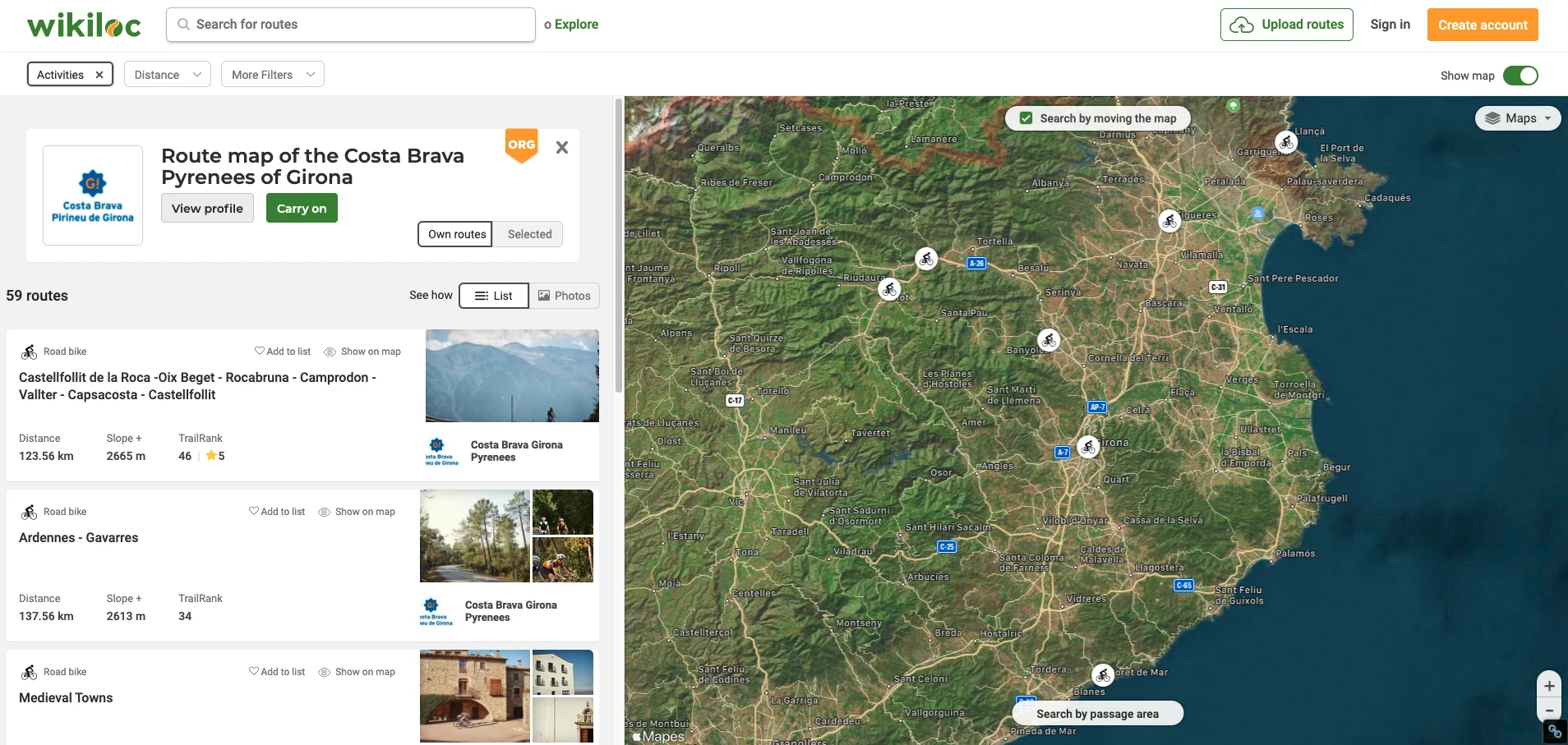
Comparison of the best cycling route apps
Many apps allow you to plot and/or follow cycling routes. There is a bewildering array and all come with a diverse selection of route planning features. Examples include:
Bikely.com, Bikehike, Cycle.travel, EasyRoute, GPSies, Garmin Connect, Google Maps, MapMyRide, MAPS.ME, PlotaRoute, Ride with GPS, Strava and Wikiloc.
The million-dollar question is – which is the best cycling route planner app to use?!
Ride with GPS
Our personal favourite is Ride with GPS, which offers a very clear and intuitive interface for plotting routes.
- We find the route profile/elevation profile information really useful, as it gives you a graph showing your route, complete with gradients, that’s really useful for giving you an idea of how tough your ride is going to be (and where).
- There’s estimated ride time information, though we tend not to pay too much attention to that as it’s very dependent on fitness and how much you stop.
- There are lots of other nice little features – for example, you can choose the map type you want to use as the base map, whether you see the metrics in Imperial or Metric measurements and you can also save your favourite routes to re-use later.
- Ride with GPS has also got great connectivity with Wahoo and Garmin bike computers, which makes uploading the route to your computer really easy. The phone compatibility isn’t bad either!
- In terms of route plotting, we’ve found it pretty reliable, though we prefer to use the ‘car setting’ most of the time when plotting as in the ‘cycling setting’, we find it is a very firm advocate of cycle paths, even when they’re not suitable for road bikes!
Google Maps
We also find that Google Maps (with the cycling setting) is good for a spot check or if you have a smart phone mount. The fact it’s free, easy to use and works in 200+ countries makes it very convenient. Bear in mind:
- There’s no route building option – you’re given the route and the most you can do is add a few interim stops.
- It sometimes won’t let you use a road, for example because it’s closed in winter when you’re searching.
- The estimated time of arrival might not always be accurate.
- Google Maps is a canvas for mapping search results and advertising results, which may be a benefit to you or may annoy you, depending on your view on life!
If you’re riding around the Girona Costa Brava region, it’s worth taking a look at Wikiloc. It’s one of the most popular apps in Spain for route planning and covers all sorts of outdoor activities. It’s worth knowing:
- You can use the app to create a route or record your own routes on a map, add waypoints, take pictures along the itinerary and upload them to your Wikiloc account from your phone.
- There are millions of routes on this site. A great way to find the high quality ones is to search for the tourist board for the region you want to visit, as they’re likely to have a profiles where they share their routes (inc GPX files you can download). These can be an excellent source of route inspiration.
- Girona Costa Brava’s profile is here – you can filter by road cycling to see their route suggestions.
- Note that use of some of Wikiloc’s enhanced features require you to pay for the premium version.
Every cyclist knows about Strava – but to plan a route on Strava, you need Strava Premium.
However, a search of Strava’s heatmaps can be useful for identifying popular routes with cyclists (though again, you’ll need a Premium plan to access your own heatmap). And, of course, the Strava segments are good to incorporate – if you’re into that kind of thing.

How route planner cycling apps pick their route
For those that like geeky detail, it might be useful to know how the cycling route creator apps come up with their routes.
The basic position is that each app scores every path and road for its suitability for cycling.
So when you plan a multi-stop bike route, the cycle planner optimises the route between specified points to achieve the best score. They take data from:
- Map data source: There are only four widely used global data sources, with Google Maps and Open Streetmap being the most widely used for cycling.
- Traffic counts: The more sophisticated apps will overlay the map data with data on traffic levels. For example, a rural road in the Girona Pyrenees may be wonderful to ride (despite being marked as a major road), but a busy commuter B road in central Girona might be much less fun. So a planner that takes into account traffic data (where it’s available) will try to avoid the more trafficked roads to maximize your safety and enjoyment.
This is why choice of route varies between planners and why, depending on the route planner used, there can be a number of key differences in the route that’s suggested.
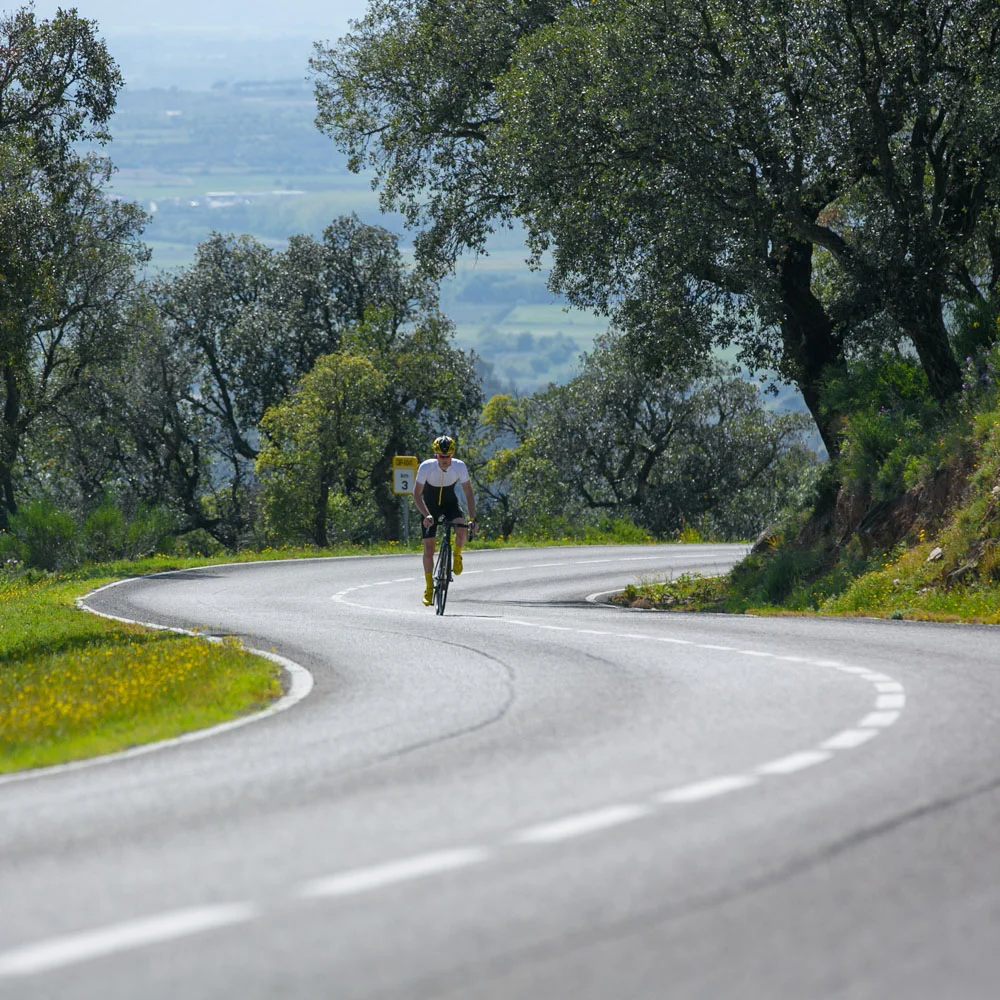
Tips for planning a route by bike
It’s safe to say we’ve planned many, many routes. Here are our top route planning tips:
Desktop not mobile
We’d suggest using a computer to plan your route. If you’ve ever tried to use a route planner for cycling on a smartphone, you will find that even the deftest fingers and largest iPhone screen can’t compare to using a full-sized computer screen and mouse or trackpad!
Use the right route planner
Before investing loads of time in planning a bike route, make sure you think about how you’re going to use it. Are you using the best cycling route app for how you want to use it? For example, can you easily access the route in the correct format for free on the device you want to use or will you have to pay for a premium option?
Common glitches
Apps and websites can help you create a cycling route quickly and efficiently. By all means make use of this, but like in any good sci-fi film, the human needs to keep a firm hand on the machine.
While the functionality and flexibility of bike route planners is improving, there are some things to look out for before you finalise your route and transfer it to your bike computer:
- Unpleasant sections: A quick scan of the suggested route should reveal whether there are avoidable sections on major roads that may get too close to cities, have heavy traffic, or intimidating traffic junctions that can de detoured.
- Crazy gradients: Mapping software may not pay much attention to steep gradients (uphill or downhill) that you might want to avoid (or perhaps hunt out for extra challenge!). When you map a cycling route, the profile and statistics allow you to easily identify and adjust your route to allow for climbs.
- Town centres: When you plan a bicycle route, you probably want to go through the centre of some villages/towns rather than around the edge, which the route planner may favour.
- Stopping points: Bear in mind that cycle route planner apps won’t consider incorporating the best cafés, viewpoints and food/drink stops into the route.
- Bike trails: Selecting to use bike route overlays can favour routing via bike lanes and sometimes unpaved roads over paved roads. Many routes identified as bike lanes in mapping tools are off-road trails that are okay for mountain bikes or leisure cycling but are not suitable for skinny-tyred road bikes.
Cross-referencing
If you’re planning a particularly important route, it might be worth taking these extra steps:
- Compare the route with reality: If you’re testing a new ride planner, you could see what you think of it by plotting a journey you regularly do and know. You could then look at what the planner has suggested and see how it corresponds. What the route planner has come up with could be better than what you normally do! Or it could reveal the biases of the bike route planner app.
- Google Street View: it’s a fantastic tool for figuring out whether a road is a suitable road route – is the surface good and is it suitable for cycling? Likewise, we’ve heard great things about geograph.org.uk – though bear in mind that it’s only for Great Britain and Ireland. We’ve not used it much ourselves, as it’s most useful for those wanting to go off-road and hasn’t got the nicest interface in the world.
- Perfect your ride: Every now and again you can find that your routing didn’t quite work out. Make a note to go back and adjust your GPX file for next time – before you forget about it!
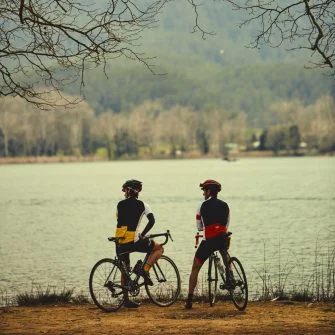
Part 2: Shortcuts + hacks for cycling route planning
We spoke at the start about how important it is to plan a great cycling route. But, let’s be honest, all that plotting, checking and cross-referencing is not everyone’s idea of a fun way to spend a few hours! Especially if you’re looking for routes to ride while on holiday.
So, how can you avoid having to spend time on route planning?!
Find a (good quality) pre-plotted route online
As you know, here at epicroadrides.com we’ve made it our mission to curate the best rides that are available to download for free. The site covers many of the world’s best cycling destinations, but don’t expect the same coverage as one of the websites like Strava or Komoot that collate user-generated rides. Ours is a curated collection of rides we’ve ridden and loved (for example on Girona, here ).
Over on Strava, Wikiloc, Bikely (and other apps and websites) riders upload their rides – and you can then download and use these. This means that you can find rides from pretty much every corner of the world.
But of course, just because some or many riders have taken a route, doesn’t necessarily mean it’s the best! It’s often difficult to get much information about the ride from these platforms – and we’ve often found routes that might be outdated, use unpaved roads or suffer from bad plotting or dodgy GPS data.
Anyone else found themselves wondering a Strava route is someone’s commute rather than the best there is of the region?!
Finding someone you trust on one of the sites is important: as mentioned above, Girona Costa Brava’s Wikiloc profile is a great resource if you’re riding here.
Check and adapt the route
Remember that on many apps (e.g. Ride with GPS) you can upload a route to your profile and then make some tweaks. So have a good check of the route before you blindly follow it – and remember you can easily change the starting point or end point for example.
This is useful to know if you need to adapt a route to fit where you live/are staying.
Local tourist information
Depending on where you are, the local tourist information may be a good source of information. We’ve sometimes been happily surprised to find wonderful pamphlets with a treasure trove of graded routes and helpful statistics.
Girona Costa Brava’s road cycling map is an excellent example – check it out here (it’s best to download it so you can then zoom in to read it).
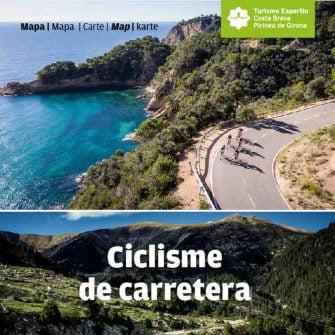
Local bike shops
Nothing beats getting inside and up-to-date tips from a friendly local bike shop as you stock up on energy bars and spares (bike rental stations are also a good bet). So, whether you’re at home or on holiday, it’s worth dropping into the local shop and getting their tips and the most up-to-date information. Many bike shops also have (free!) organised rides that are a sociable way of discovering an area.
It’s even worth asking about local groups – cyclists are a sociable bunch and who knows, you may make some lifelong friends!
Nowhere is this more true than in Girona, as many of the bike shops organise weekly rides that are free to take part in. They’re a great way to discover the area!
- Eat Sleep Cycle – Monday at 10am
- Bike Breaks – Thursday at 10am
- Cicloturisme Tours – Friday at 10am
Note: if you’re travelling while Covid is still a problem, just check in with the shops beforehand to ensure the ride is on that week.
Get a local guide
There is a growing market for expert local guides that know the area intimately and pedal alongside you on the best routes the area has to offer. A good guide will transform your experience with the type of local knowledge that will enrich your riding. They can help you find the cyclist-friendly routes with the minimum of planning effort from you.
Girona’s local tour operators
As a popular cycling destination, Girona has a number of excellent local businesses that will be delighted to provide you with a guide and help you plan your cycling routes and tours in and around Girona:
Catalonia Bike Tours, +24 608 57 68 21, cataloniabiketours.com
Cicloturisme Tours, +34 972 221 047, cicloturisme.com
Eat Sleep Cycle, +34 972 649 131, eatsleepcycle.com
Girona Pro Sport, +34 690 248 632, gironaprosport.com
Trek and Ride, +34 972 28 00 94, cicloturisme.com
Zona BTT Pirineu Girona, +34 605 227 978, zonabtt.com
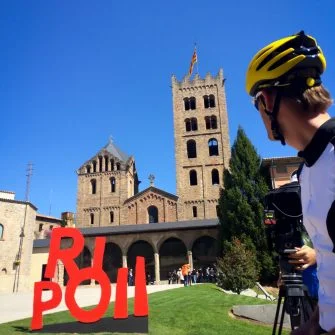
Part 3: Using the bike route while riding
So, once you’ve got your perfect GPX bike route files, how do you actually use it/them while riding?!
Unless you’ve taken the opportunity to hire a guide or are on take part in a guided tour, and therefore bypass the need to follow a route, these tips should come in handy.
Printed map v GPS device v smartphone
A neatly folded paper map, suitably waterproofed and tucked into your jersey pocket certainly has a certain retro cool. But fumbling with maps with cold fingers while battling the wind and rain (or even sweaty fingers due to a warm sun!) means that your paper maps are probably best left at home. Stopping to unfold a map also eats up valuable riding time.
Using apps like Google Maps or Ride with GPS on your smartphone can be a practical and cost-effective way of making use of the amazing technology of your smart phone. To get the best navigation experience, you’ll need a good mount, waterproofing and protection. Remember though that using GPS and having your screen on will eat your battery life, so you might want to consider having the screen turned off and only switching on for turn by turn instructions.
A cycling computer mounted on your handlebar (or stem) is of course the most stylish and practical way to follow a route. It’s designed for exposure to weather and is much less likely to smash if you inadvertently drop it (we speak from experience!)… While even the latest top-of-the range bike computers have limited ability to create and evolve routes ‘on the fly’, most GPS devices allow you to easily upload a route to follow.

Following the route
We find that a large visual display of the route is the easiest.
Turn by turn instructions
You can either choose to follow turn by turn instructions or just display your location as a dot, with a coloured line showing the route you need to follow. We prefer the turn by turn instructions, because it means you don’t need to think about which turn to take – the app will flag it at the junctions.
Voice navigation
In our experience cycling while listening to audio instructions is extremely difficult (even when you can hear the instructions) and potentially dangerous. We don’t recommend wearing earphones while cycling, even to listen to route instructions.
Helpful navigation tips
Some apps and devices allow you to specify how far in advance you want turn instructions. A distance of at least 50 metres will give you plenty of reaction time.
A good level of zoom on your device will mean you’re not turning off early or getting the wrong exit at the roundabout.
Needless to say, safety is a priority. Make sure your cycling computer or smartphone is mounted where it is clearly visible. Do not be tempted to fiddle or spend too long looking at your iphone while riding. Many a cycling accident has been caused by cyclists distracted by their computer.
And on that note, it’s time to say stay safe and have a fantastic next ride!
Big thanks to Patronat de Turisme Costa Brava Girona for making this article possible.
Remember that Girona is a brilliant cycling destination with cycling routes for all levels and kinds of cyclist. Check our guides to Girona , and the articles below, for more info!
What are your top tips for cycle route planning?
Have we forgotten anything? What are your top tips? Let us know in the comments below!
Want to know more about cycling in Girona?
Don’t miss our tips for easy routes and beginner cycling challenges in Girona .
Also check out our in-depth guide to Girona , which contains route guides, tips for riding in/around Girona and much more!
Photo credits:
Footnote 1: Cap de Creus. Costa Brava. Cycling Tips. Brazo de Hierro. CBGTB Image Archive.
Footnote 2: Costa Brava. The Col Collective. CBGTB Image Archive.
Footnote 3: Santuari dels Àngels. Facu Aguirre. CBGTB Image Archive.
Footnote 4: Banyoles. Facu Aguirre. CBGTB Image Archive.
Footnote 5: Girona. La Fabrica. Jase Wilson. CBGTB Image Archive.
Footnote 6: Girona. Tristan Cardew. CBGTB Image Archive.
Footnote 7: Ripoll. The Col Collective. CBGTB Image Archive.
Footnote 8: Bike Breaks Girona.
Footnote 9: Costa Brava. The Col Collective. CBGTB Image Archive.
Got a question for Clare?
Fill out this form and we will send it to Clare. We aim to get you an answer within 24 hours wherever possible!
We will use this info to send the enquiry to Clare and/or their team. Our privacy policy explains more and here’s a reminder of our disclosure policy and terms and conditions.

Clare Dewey is a cyclist with a passion for travel. She set up epicroadrides.com in 2018 to help make it easy for cyclists to explore the world by bike. Today her mission is still inspiring cyclists to discover new places on two wheels – and doing what she can to make sure they have the best possible time while they’re there. Clare has visited 50+ destinations around the world, many of them by bike.
The contents of this website are provided for general information purposes only. It is not intended to amount to advice and you should not rely on it. You should carry out your own due diligence and risk assessments and take professional advice. Views expressed by interviewees or other users of this website do not necessarily represent our views. We make no representations, warranties or guarantees, whether express or implied, that the content on our website is accurate, complete or up to date. If you use any information or content on this website, download from, or otherwise obtain content or services through our website, it is entirely at your own discretion and risk. Epic Road Rides Ltd disclaims all liability and responsibility arising from any reliance placed on the information and content on this website. Find out more here .
2 Responses to “Cycling route planning: your essential guide”
What about Komoot? Great for road surface & road type checking. Cross referenced to Google Maps at the right zoom level shows clearly the best quieter roads to select, then street view to double check. In the end, the most important footnote is that time invested in planning, leads to a ride spent enjoying it, not stressing it.
Yep, Komoot is another option! We prefer RWGPS, but each to their own! And agree, it’s all about the planning!
Leave your comment
Click here to cancel reply.
- Name (required)
- Mail (required) (will not be published)
This site uses Akismet to reduce spam. Learn how your comment data is processed .
Privacy Overview
Bike Travel Tips
Prepare yourself for the ultimate bike travel disaster

.css-1t6om3g:before{width:1.75rem;height:1.75rem;margin:0 0.625rem -0.125rem 0;content:'';display:inline-block;-webkit-background-size:1.25rem;background-size:1.25rem;background-color:#F8D811;color:#000;background-repeat:no-repeat;-webkit-background-position:center;background-position:center;}.loaded .css-1t6om3g:before{background-image:url(/_assets/design-tokens/bicycling/static/images/chevron-design-element.c42d609.svg);} Beginner Cycling

Mountain Biking vs Road Cycling: How They Compare

10 Mountain Biking Tips to Perfect Your Riding

15 Beginner Cycling Questions—Answered

Indoor vs Outdoor Cycling: How They Compare

How to Build a Cycling Endurance Base

How to Enjoy Group Rides
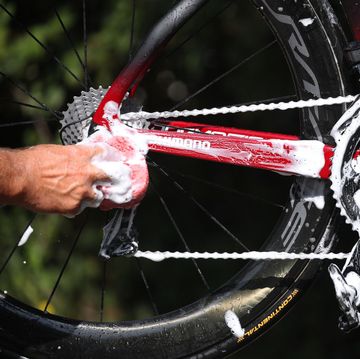
How to Clean Your Bike

11 Tips for Conquering Your First Group Ride

What to Know About Cycling for Weight Loss
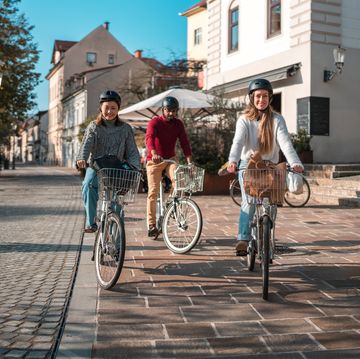
You Can Learn to Ride a Bike as an Adult
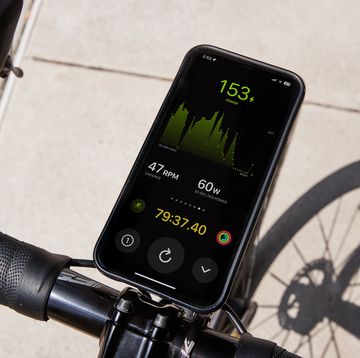
Do You Really Need a Power Meter?
Ride Better Tips
Use these tips to learn the basics of safely riding your bike in traffic and sharing the road with cars., traffic principles.
- Always ride with the flow of traffic
- Do not ride on the sidewalk
- Allow yourself room to maneuver around hazards
- Ensure the lane is clear and free of oncoming vehicles before you move into it
- Always use signals to indicate your intentions to move position
- Looking behind you is a way to indicate to other road users your intention to change your position on the roadway. It is will also allow you to determine when you can safely navigate your move in relation to other road users.
- Traffic in your destination lane has the right-of-way
- Making eye contact with drivers lets them know that you see them
- Signal and make your lane change early, before you need to
- Position yourself in the right-most lane that goes in the direction of your destination
- Ride in the right third of the lane
- Avoid being overtaken in narrow-lane situations by riding in the middle of the lane
- Position yourself relative to the speed of other traffic
- Left-most lane is for fastest moving traffic, right-most for slower traffic
- Yield to faster moving vehicles by staying to the right in the lane
Where to Ride
- All 50 states say that people on bikes are to ride "as far to the right as practicable"
- No clear definition of practicable has been identified
- Always ride in a straight line; do not swerve between parked cars
- Give yourself enough room on your right to maneuver in an emergency
- Ride in the middle or right third of the lane if there is not enough room for lane sharing
- Slower moving vehicles travel to the right of faster moving ones
- Follow the same rules as motorists including yielding right-of-way and signaling
- Ride just to the right of the travel lane to remain visible to other motorists
- Always ride outside the door zone when passing parked cars, even if this means riding outside of the bike lane.
- If a lane narrows ahead or is blocked by a bus, establish your position in traffic early
- Avoid riding where glass and other trash accumulates on the right side of roadways
- Grates and gutterpans should be avoided by positioning yourself away from them
- Always cross railroad tracks perpendicular to the tracks
Lane Positioning
- Ride in the same direction as traffic; stay far enough away from curb to avoid hazards
- Ride in the right third of the right-most lane that goes in the direction you are going
- Ride in the middle of the lane if traveling the same speed as traffic or in a narrow lane
- Always ride in or near a travel lane; stay visible by riding where drivers are looking
- Wear bright clothing
- Do not pass on the right; motorists are not looking for other vehicles there
- Ride in a straight line, not in and out of parked cars on the side of the road
- Beware of cars merging into the roadway from a parallel parking position
- Always ride outside the door zone when passing parked cars
- If there is not enough room to share the lane
- If traveling the same speed as other traffic or if hazards narrow the usable width
- Before intersections and turns to assert your position on the roadway
- Do not ride completely to the right; you will be more visible 3-4 feet away from traffic
- Place yourself, so right turning cars and cars entering will be more likely to see you before they turn
- Be careful of motorists passing on the right around left-turning vehicles
- Before a turn: scan, signal and move into the lane that leads to your destination
- Ride in the right third or middle of the lane, as lane width dictates
- To cross multiple lanes, move one at a time, scanning and signaling each move
- If your lane turns into a right-turn only lane (and you’re not turning), change lanes before the intersection
- Changing lanes too late could result in an overtaking motorist turning in front of you
- Maintain a constant position relative to the curb or shoulder during a turn
- Most drivers do not always expect to see people on bikes in the roadway
- Do not ride directly next to another vehicle unless you are passing or slowing down.
- If you can't see bus, truck or car mirrors, the drivers can't see you
- Signal well before the intersection; make sure you are in proper lane position
- Left arm out and down with palm to the rear to indicate stopping
- Left or right arm straight out to indicate left or right turn
- Allows you to avoid dangerous situations before they happen
- Let’s you see what is going on around you
- Communicates with other drivers that you are about to maneuver to another position
Lane Changing
- If you are familiar with the traffic patterns, be sure to get in the correct position early
- Keep in mind the relative speed between you and other traffic — plan accordingly
- Be aware of road conditions that would impede your progress across lanes
- If you do not feel comfortable or safe when crossing an intersection, consider dismounting and use the crosswalk
- Ride to red light then move to left turn lane if volume and speed do not allow crossing
- Look for traffic, pedestrians and hazards in front of you and behind
- Identify lane markings and traffic control devices for an approaching intersection
- Keep an eye out for bus stops, driveways, crosswalks and other special traffic zones
- Signal your intention to turn or change lanes
- Relative speed may require you to move quickly and decisively when it is safe to do so
- In high speed overtaking traffic situations, cross all lanes at once when safe
- Move after signaling in low- and same-speed traffic situations
How to Avoid Getting Doored
- Always ride outside the door zone when passing parked cars: far enough to the left to avoid a suddenly opened door, even if it's outside the bike lane
- Never swerve between parked cars; use the outside of the next car as your guide
- Avoid riding on the right side of any stopped car, especially if it is near the curb
- As you begin to overtake cars in urban settings, always pass them on your right
- If you are traveling at the same speed as traffic, ride in the center of your lane
- As traffic begins to speed up, signal and begin moving to a lane on your right
- If a car stops in front of you suddenly, stop, look for exiting passengers, then pass on left
- Make sure that you stop safely before you release the handlebar to signal and pass
- Maintaining control of your bike is the most important task
- Before turning, look for potential obstacles in your destination lane, for example double parked cars
- When turning, take the lane so you don't get forced to the right of a stopped car
- Plan your turn so that you remain at least three feet to the left of any stopped cars
- You do not have to ride within a bike lane if you are avoiding a hazard or potential obstacles in your destination lane, like double parked cars
- Cars must not drive in bike lanes but bikes may leave bike lanes at any time
- Stay out of the door zone, even if this means riding on the edge or outside a striped bike lane
How to Ride in Bike Lanes
- Bikes are not required to travel in bike lanes when preparing for turns
- Avoid bike lanes that you think are poorly designed or unsafe; alert your local government
- Avoid riding in lanes that position you on the right side of a right turn lane – if you are not turning
- Bike lanes should stop before an intersection to allow for bikes to make left turns
- Always signal as you move out of a bike lane into another traffic lane
- Report obstructions and poor maintenance to your local government
- Ride at least a 1-2 feet away from the edge of the road so that you can safely avoid debris that is in your travel space
- If debris forces you out of the bike lane, signal your move out into traffic
- Watch for brake lights, front wheels, signals and driver movements
- Position yourself in the field of vision of a motorist pulling out of a parking space
- Avoid riding in lanes that position you on the right side of a right turning motorist
- Move out of the right turn lane if you are not turning right
- Ride in the rightmost lane that goes in the direction that you are traveling
- Move out of the bike lane well in advance of the intersection; signal every move
- Position yourself in the rightmost left-turning lane
- Reposition yourself after executing the turn; remain clear of parked cars
Traffic Lights
- People on bikes, just like motorists, must obey all traffic control devices
- It takes longer to travel through an intersection on bike; plan to stop for yellow lights
- Avoid cars that run red lights by waiting for the signal to turn green and scan to make sure it's clear
- Bikes must activate a vehicle detector just like a motor vehicle
- Detectors are embedded in the roadway; look for squares cut into the roadway
- Detectors use magnetic forces to pick up vehicles, not weight
- Some detectors may or may not detect a person on a bike. Activating a crosswalk “beg button” may be a way to change the light but could require you to dismount to reach the button.
- In most states, after three minutes, you can treat a red light as a stop sign
- Pass through a red light only as a last resort and use caution
- Yield to other vehicles while crossing the roadway
Slow travel: Discovering the best of Brittany without a car

Jun 26, 2024 • 5 min read

Taking the train and bus around Brittany is a delightful way to see the best of this French region © Franz Aberham / Getty Images
Our slow travel series explores how you can take more mindful journeys by train, boat, bus or bike – with tips on how to reach your no-fly destination, and what to see and do along the way. Here, Rebecca Crowe explains how she explored the northern- French region of Brittany and beyond using the extensive public transport network.
Visit Brittany , and you’ll feel like you’ve stepped back in time. Colorful timbered buildings, medieval forts and worn cobblestone streets all but dare you to slow down and savor the details as you explore.
Other than a friend who currently lives in the region, I knew next to nothing about (or no one in) Brittany. Yet as a budget traveler who loves to get away from the crowds, the region’s numerous small towns, each with its own culinary heritage and history, intrigued me. So I set off – sustainably.

The departure
Gateway to Brittany, the striking Gare de Rennes is where you can catch a train, city bus or metro, or long-distance coach. It’s packed with a mix of commuters striding confidently towards their destination, tourists huddled around translator apps and maps, and day trippers staring up at the departure boards. Skipping the ticket office, most travelers map their routes and buy their tickets using SCNF Connect . This invaluable app turned out to be my constant companion during my Brittany trip.
The journey
Trains in Brittany are double-decker style, with plush seating, ambient temperatures and sometimes even a cafe car. A journey on the rails tends to be a relatively quiet and relaxing affair, with everyone absorbed in their own thing.
By comparison, buses can feel a little like going on a school trip. The bus driver checks your tickets and throws any large baggage underneath. As you settle into your seat, the wi-fi you keep sniffing stops working as soon as you connect to it. The seat quality varies, but given how reasonable seats are compared to the train, you’ll be fine for a couple of hours – and have plenty of pastry money left over.
Brittany abounds with intriguing destinations. On the way to popular Brest, a naval town in the far west, you might stop in charming St-Brieuc, which has colorful streets, hiker-friendly coastal trails and a fabulous art deco chapel . Alternatively, you could jump on a train or bus to Quimper, known for its majestic Gothic cathedral , stopping along the way at Lorient in coastal Morbihan, where a Celtic festival draws crowds each August.
I opted to start in the coastal town of Vannes, whose half-timbered buildings, medieval ramparts and expansive views out onto the water are the stuff of fairy tales. I wouldn’t have been surprised to see someone emerging from one of the town’s delicious galette restaurants singing a song.
Next, a visit to Mont St-Michel Bay. While the magical island whose famous abbey pierces the sky lies inside the boundaries of Normandy , the sweeping bay that protects it is shared with Brittany .
Since Mont St-Michel is one of the region's biggest tourist attractions, it’s always busy – so make sure to book your bus tickets in advance. It is well worth joining the crowds and getting lost in the winding streets that spiral up and around the island. Top-tier seafood tempts, too, with mussels harvested directly from the bay in front of you. It doesn’t get fresher or more quintessentially French than this.

The arrival
Arriving in different Breton towns is always a bit of an adventure. Many have small train stations on the outskirts of the center. While they do the job, don’t expect free wi-fi and many amenities as you wait for your onward leg.
Arriving at two-platform Vannes train station, for instance, you instantly feel a small-town vibe before the 15-minute walk to the town center. Departing Vannes by bus means huddling with a crowd as you wait in a large parking lot.
The main parking area and bus stop at Mont Saint St-Michel are almost 3km (2 miles) from the island, requiring a lengthy walk or shuttle (departures every 12 minutes). Give yourself plenty of time to get back given the thousands of visitors queuing up for the shuttle. In the end, it was quicker for me to walk back to the bus stop than to wait for the ride.
All these logistics added to the sense of adventure. Walking into a town from its outskirts takes you past local scenes: of seniors catching up over a coffee and a pastry, and kids riding their bikes to school. When you’re dropped off in the center of a town, by contrast, you’re greeted with kitschy souvenir shops and gaggles of tour guides explaining history loudly in English, with tourists spinning around trying to get their bearings from their phones. That walk from the station is the perfect complement to slow travel: taking in the journey, truly embracing a place and tapping that thrilling sense of exploration.

How to make it happen
Tickets from Rennes to Vannes start from €10, with routes to Mont St-Michel around €25. You can easily buy bus and train tickets through SCNF Connect or at the station. I booked the day before travel with no issue – but during peak season, book well in advance.
Food and drink
Some trains, including the TGV to Mont St-Michel, have a food and bar car – but it’s not cheap. It’s always best to pack your own food and drink for the journey, especially if you’re on the bus instead of the train.
Facilities
You’ll find wi-fi onboard most buses and trains, but it tends to be unreliable. You’re better off relaying on an eSIM if you need to stay connected. There’s also plenty of luggage storage on both, as well as toilets – yet as you might imagine, they’re not always, um, pristine.
Anything else?
Bus journey times are often a suggestion; some of my legs arrived about 20 minutes early, with others 10 to 15 minutes late. Give yourself plenty of time to spare at if you have activities or onward travel booked.
Explore related stories

May 30, 2024 • 6 min read
From tickets and terminals to queues and border crossings, here’s everything a first-time Eurotunnel user needs to know.

Dec 27, 2022 • 8 min read

Jun 20, 2024 • 6 min read

Jun 15, 2024 • 7 min read

Jun 14, 2024 • 7 min read

Jun 13, 2024 • 7 min read

May 29, 2024 • 4 min read

May 18, 2024 • 7 min read
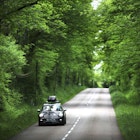
May 14, 2024 • 10 min read
4 travel tips to put your mind at ease during your next trip

The season of summer holiday travel is just around the corner.
You might find yourself heading to one of the U.S.’s many national parks, exploring a historic European city or jetting off somewhere tropical, like the Maldives.
That all sounds like fun, but unfortunately, travel mishaps may also happen. Luggage gets lost, passports get misplaced and phones may not work at international destinations when they aren't connected to Wi-Fi.
To avoid the headaches and prepare for whatever may come your way (or what accidentally gets left behind), follow these simple tips.
Watch this video to see the four things you should do before your next trip.
Learn more: Best credit cards of 2023
Pre-Travel Tips
All you need to get travel-ready is your smartphone.
- Take pictures.
Take pictures and screenshots of the important items and documents before you leave for your trip.
This would include:
- Your luggage
- The photo page of your passport
- Your ID cards
- Any travel-related confirmations
- Location and contact details for the places you’re staying
Creating an album on your phone or marking the images as favorites will make it easier to find them should you need them.
It couldn’t hurt to also share these pictures with a trusted loved one, like a significant other or close friend.
- Turn on Notify When Left Behind
Turn on Notify When Left Behind if you use Apple products.
The feature, available on some iPhones, iPads, Macs, and AirPods, will notify you if you are separated from your items, like if you forget your AirPods in your hotel room.
To turn Notify When Left Behind on or off, open the “Find My” app, select the device and then toggle the setting on or off.
- Tell your credit card company about your plans
Have you ever had your card payment declined when paying for something on a trip? That’s probably because your credit card company is picking up unusual activity and flagging it as suspicious.
Prevent that from happening by informing your credit card company of any upcoming domestic or international travel by setting a travel notification.
Many credit card companies allow you to set the notification online or via the app, though some companies may not require one at all.
- Check international phone plans
If you want to use your phone when you're not connected to Wi-Fi while traveling, see what international phone plans your mobile carrier offers that fit your budget. An international plan will allow you to do things like make and receive phone calls, access social media and find directions as long as you have cell service. Without a plan, those functions will only be available when the device is connected to Wi-Fi.
Bonus tip, you can download maps to use offline and easily navigate a new place!
Reviewed-approved travel recommendations
Purchases you make through our links may earn us and our publishing partners a commission.
Reviewed helps you find the best stuff and get the most out of what you already own. Our team of experts test everything from sleep masks and travel pillows to luggage and packing cubes to help you shop for the best of the best.
- Tracking game-changer: Apple AirTags
- Our favorite sleep mask: Mzoo Sleep Eye Mask
- A top wireless charger: Yootech Wireless Charger
- Must-have luggage: Travelpro Platinum Elite Softside Expandable Luggage
- Organization hack: Amazon Basics 4-Piece Packing Cubes Set
- The best portable battery pack: Mophie Powerstation Plus
- Our favorite travel pillow: Cabeau Evolution Classic Travel Neck Pillow
- Top-rated adult coloring book: Cindy Elsharouni Stress Relieving Adult Coloring Book
It's bike-riding season. Here are a few tips and laws to help protect bicyclists
Riding a bicycle can have its own challenges, but following these safety tips can keep you rolling on.
Just over 1,100 riders died in traffic accidents in 2022, with fatalities highest between June and September, according to the National Highway Traffic Safety Administration.
In South Jersey, a 14-year-old boy died June 16, two days after he was struck by a vehicle while trying to cross Route 38 in Southampton. The youth's name was not released by New Jersey State Police.
Bicycles are not considered vehicles in New Jersey. Therefore, certain laws of the roads do not apply to the riders. notes Bicycleuniverse.com.
- Riders must keep their bicycles as close to the right side of the road as possible and be careful when passing stationary vehicles.
- Cyclists can only move to the left to make a left turn from a left turn lane or pocket, to avoid debris or other hazardous conditions and to pass slower vehicles.
- New Jersey does not require that cyclists use the bike lanes or paths where available.
- Shoulders on the road are not bike lanes and cyclists don’t have their full rights if they are riding in the shoulder.
Being aware of these laws coupled with these safety tips from the NHTSA could not only save you, but those around you.
- Always wear a helmet.
- Check your tire pressures and brakes.
- Be aware and alert of traffic around you.
- Make sure your pant legs or shoelaces can't get stuck in the chain or around the pedals.
- Don't listen to music as it could take away from hearing cars.
- Do not text and ride.
- Bring plenty of water, especially if riding on a hot day.
You can find more tips, ways to improve riding skills and other information on the NHTSA website.
Nick Butler is an impact reporter for the Courier Post, the Daily Journal and the Burlington County Times covering community news in South Jersey. Have any tips or stories? Reach out to [email protected]. Subscribe to stay in the loop.
Best Outdoor Activities Around Canberra
Whatever type of outdoor adventure you enjoy, there's plenty to explore in and around Canberra. This is your guide to an action-packed Canberra holiday.

20 June 2024
3 minutes
- Travel tips & guides
- Share on Facebook
- Share on LinkedIn
- Share on Pinterest
Whether you are visiting with mates for a weekend away, taking the family on a holiday somewhere new, or just looking for a dose of the great outdoors, Canberra has it all.
Mountain biking and downhill cycling, bushwalks through National Parks and waterways waiting to be explored all feature within driving distance of Australia’s capital territory.
There is something for every thrill-seeker, no matter what adventure outdoor activity in Canberra you are after.
Bushwalking in Canberra
Only 45 minutes from the centre of Canberra lies the Namadgi National Park – an outdoor playground suitable for all abilities. Most venture here for the great bushwalks which wind you through forests, past local wildlife and to hidden sights such as the historic Orroral Homestead.
Plan a day trip and enjoy a Saturday stroll or organise a weeklong trip and camp overnight along the way.
Some of the most popular walks include Gilbrator Falls (2.3kms), Mount Aggie (3kms), Rendezvous Creek (2.8 kms) and Honeysuckle Creek to Booroomba Rocks (11.6 kms).
If you’re still unsure which hike is right for you, the Namadgi Visitor Information Centre can help you book the right route for your ability and time available.
Mountain Biking in Canberra
For those looking to pick up the pace, Canberra is surrounded by plenty of great cycling and mountain biking routes.
Offering over 50kms of cross-country bike trails and dirt jumps, Mt Stromlo is a downhill cycling enthusiasts dream. With plenty of signage and dedicated zones for different ability levels, Mt Stromlo is the perfect day out for friends looking to explore a new route.
On the weekends there is even a shuttle service offered by Dynamic Motivation which will take you and your bike up the mountain so that you can spend more time enjoying the downhill descent.
Another great cycling route is Canberra’s Centenary Trail which provides one long loop around the outskirts of Canberra allowing cyclists to pass through both urban and natural landscape.
An impressive 145kms long, this cycle route should be taken in sections as to enjoy the areas and local attractions which you pass through. It’s worth noting that this path is also shared with runners, walkers and horse riders so peak time on the path can get quite busy.
Another long-time cyclist favourite is Majura Pines. Here, riders can enjoy 20 kms of sign-posted trails for mountain bikers of all abilities – beginners can enjoy shorter loops while pros can make the most of cross-country paths.
Water Sports
While Canberra may not be the first city that comes to mind when thinking about great water sport adventures, it should be. With plenty of dams, rivers and lakes running through and around the city, there are plenty of opportunities to get out on the water.
The Googong Dam is the ideal spot to try your hand at fishing. While fuel-powered boats are not allowed on the river, you are permitted to venture out on a kayak or sailboat, making for a relaxing day cruising down the river and fishing along the way. Skilled (or lucky) fishermen may catch a rainbow trout, Murray cod, or golden perch.
White Water Rafting
The mighty Murrumbidgee River whose waters are sourced from up in the Snowy Mountains make for great white-water rafting conditions. Offering Grade 2 to Grade 4 rapids, the Murrumbidgee can be tackled by both thrill-seekers looking for something new, and families seeking a fun day out.
There are a few tour companies you can choose from for your white water rafting experience such as Alpine River Adventures who offer a variety of experiences from one day to 24-day long kayaking and white water rafting adventures.
Stand Up Paddle Boarding & Kayaking
Located in the centre of Canberra is Lake Burley Griffin. This peaceful inner-city lake is the ideal place to try your hand at stand-up paddle boarding & kayaking.
Cruise along the lake either independently or with an instructor-led class. You’re bound to see some great wildlife along the way including black swans, water dragons, galahs and cockatoos– and maybe even an elusive platypus.
Hot Air Ballooning in Canberra
For those who love the adrenaline rush that comes from being off the ground, Canberra is the right place to be. One of the most loved attractions in Australia’s capital city is hot air ballooning.
Providing the best vantage over the city – and one of the only opportunities in the world to fly over a parliament house. What could be better than floating over the city at dawn as the sun starts to rise, with a glass of bubbles?
Visit during the annuall Enlighten Festival to see the Canberra Balloon Spectacular, where you can fly among dozens of other hot air balloons, or take in the views from the ground as the bigger than life balloons soar high above.
Our recent articles

8 Unexpected Experiences at Mövenpick Hotels
With mind-blowing daily food and drink rituals now a mainstay at hotels across the Pacific, you can expect the unexpected when you stay at Mövenpick.

Best Picnic Spots in Sydney to Spend a Lazy Afternoon
Let us help you decide where to roll out your picnic blanket in Sydney this summer.

Sydney Itinerary: Spend 2 Days Exploring the Best of Sydney
With local tips on what to do, where to eat, and where to stay, discover the best of Sydney in two days packed with highlights.

ALL you want to know about the Accor Live Limitless loyalty program
Discover all the important details about Accor Live Limitless and see why it's worth signing up to start earning Rewards today.

The Ultimate Drive from Brisbane to Noosa
Take your time as you enjoy the scenic road trip between Brisbane and Noosa with this guide to show you the best spots to stop along the way

Sally Fitzgibbons’ Insider Guide to Newcastle
Professional surfer Sally Fitzgibbons brings her insider knowledge, sharing her best tips and hidden gems for a weekend getaway in Newcastle.

Best Time to Visit Berlin: Festivals and Seasonal Highlights
Whether you want to get into the festive spirit at a Christmas market, raise a stein in a beer garden or avoid the crowds on Museum Island, discover the season for your ideal trip.

16 of the best views in London
Got a head for heights? Here’s where you’ll find London’s best views, from skyline vistas in famous parks to far-reaching panoramas from the capital city’s best-loved attractions.

The 7 Top Things to See in Dresden Old Town - A Walk Through History
Looking for the top things to see in Dresden Old Town? Discover its historic past and best-kept secrets, from the finest views to the largest emerald ever found, in this charming walk around Dresden's historic heart.

IMAGES
VIDEO
COMMENTS
The Touring Bikes for Long-Distance Travel; Road bikes . This is the most efficient option if your tour will mainly be on well-maintained roads, says Hermann. ... Cycling Tips for Older Riders.
The distilled wisdom of ten years of bike touring life, cycle touring tips and travel advice from hard-earned miles around the globe. This article documents my bike touring tips from extensive bicycle travels around the world. Whether you're a veteran long-distance cyclist or a bicycle touring beginner, this blog post is here to provide you ...
Invest in the essentials: a good free-standing tent, a decent touring bike, waterproof panniers (bike bags) and a cooking stove. Opt for a sturdy, steel-framed touring bike with steel front and rear racks to hold your panniers. Your bags should be hard-wearing as they'll carry everything you need such as the tent, stove, sleeping bag and mat ...
You can read World Nomads' policy on cycling-related travel h e re, but here are the basics: Cycle touring is covered but the tour must be on one continent only — no cover is available for intercontinental cycle touring. You'll need to tick 'cycling / biking - independent cycle touring' when buying your policy. This is an optional ...
Heya! I am Pashmina. In 2016, I quit my job to travel solo to the Himalayas for 3 months and start my own thing. Today, I am a content creator who spends most of my time chasing the great outdoors instead of somebody else's life. My goal is to share stories and inspirational tales for people to live more adventurously and travel responsibly.
Unlike regular cycling, where you pedal for miles and return home later that day, bicycle touring allows you to travel from point to point and set up camp for the night. After some shut-eye, you pack up your tent, hop on your bike and head out for the next leg. You can plan your own trip or join a guided tour which often offer food and lodging.
It reduces strain on the back, neck, and shoulders, allowing for a more comfortable and sustainable ride. This position also offers a better vantage point to enjoy the surroundings. Expert Tip: Look for handlebars that allow multiple hand positions. This can help reduce fatigue and numbness on longer rides.
You'll simply buy what you need on the way, and stay in hotels at night. I've split this post of bicycle touring tips into four sections: 1. Before you go - Preparing for a long distance cycling trip. 2. On the Road - Tips to make a long bike tour easier. 3.
2. Get The Right Gear. Be prepared for your pedal-powered adventure by choosing the right gear for you and your bike. Opt for panniers and a frame bag instead of a backpack to take pressure off your back. Make sure they're waterproof and fastened on securely, as you don't want one to fall off and get left behind.
Whether you're planning your first cycling holiday or you've completed a lot of cycle holidays abroad, whether you're looking for an easy cycling holiday or a super challenging one, we hope these cycling holiday tips have helped you. Feel free to explore the buttons below, which link to additional content on the points covered above.
Travel Tips. These Solo Women Cyclists Have Epic Bicycle Touring Experience. MapOut, The Best Smartphone Mapping App - Just Got Updated! ... The Comprehensive Guide To Bikepacking Racing: Learn Everything In One Book. The Top 10 Countries To Travel By Bike (According To 150 Continent-Crossing Cyclists) The 2019 Ultra Endurance Bike Racing ...
Top Tips for Touring on a Budget. Bike touring is already a pretty affordable way to travel, but here are some tips for touring on a budget. Travel With a Friend. A problem shared is a problem halved, and so are the costs when you travel with a friend.
However some pointers along the way can help you make the most out of your first bicycle tour. 1. TAKE IT EASY. Don't try to crank out 100km a day everyday. Too much cycling can wear you down and cause you to burn out. 2. DON'T SPEND TOO MUCH MONEY ON GEAR.
VeloNomad: the website for cycling holidays and adventures. But it's not just holidays: you'll find sportive guides, mind-boggling-no-BS product reviews, nutrition info, training insights, recovery guides, where to stay when overseas, where to find bike hire shops, where to ride and loads of other useful tips and tricks.
To relieve your neck and shoulders, shrug for 5 to 10 seconds. On a clear stretch of road, reach one hand up between your shoulders for a few seconds, then swap hands. Stand up and drop one pedal ...
Misc. cycling-vacation tips. Before you travel, make sure your bike is in perfect condition. Take it to a professional mechanic for a complete tune-up. Be sure he or she checks the brakes, gears, and tyres. You should also make sure the bike you intend to take is a perfect fit for your body.
But before starting your tour, give your bike a thorough inspection to ensure no repairs are needed. If you're preparing to cycle rough terrain, we'll list extra bike touring essentials you should consider packing. 6. Tube Repair Kit. An essential packing item for inner tube repair or patching a damaged bike tube. 7.
Of course, not everything is great while you ride a bicycle. Otherwise, everybody would travel by bike. Here are the cons of cycling travel: Time. Traveling by bike is slow. Yes, slow traveling has its good side, but the problem is our time. Most of the people, including travelers have scheduled times, vacation time limits, visa expiration, etc.
Travelers Rest, South Carolina. Travelers Rest is becoming a go-to place for cycling enthusiasts to visit (and to live). The Blue Ridge Mountains offer the perfect challenge for advanced bike ...
Read on so you can be all set for the long distance cycling challenges that await! 1. Define your long-distance cycling goal. The first of our long bike ride tips is to set a goal. Like all objectives, it's best if this is SMART - Specific, Measurable, Achievable, Relevant, and Timely.
Many apps allow you to plot and/or follow cycling routes. There is a bewildering array and all come with a diverse selection of route planning features. Examples include: Bikely.com, Bikehike, Cycle.travel, EasyRoute, GPSies, Garmin Connect, Google Maps, MapMyRide, MAPS.ME, PlotaRoute, Ride with GPS, Strava and Wikiloc.
Bike Travel Tips. Bike Travel Tips. Prepare yourself for the ultimate bike travel disaster. by alex stieda Published: Apr 30, 2010. Save Article. Media Platforms Design Team. Bike lost in transit?
Use these tips to learn the basics of safely riding your bike in traffic and sharing the road with cars. Watch our Smart Cycling videos for more tips. ... It takes longer to travel through an intersection on bike; plan to stop for yellow lights; Avoid cars that run red lights by waiting for the signal to turn green and scan to make sure it's clear;
Butterfield focuses their offerings on the places best suited to self-guided travel, with two dozen hiking and cycling trips in Slovenia, Switzerland, Tuscany, Vietnam, Provence, Spain, Croatia ...
Our slow travel series explores how you can take more mindful journeys by train, boat, bus or bike - with tips on how to reach your no-fly destination, and what to see and do along the way. Here, Rebecca Crowe explains how she explored the northern-French region of Brittany and beyond using the extensive public transport network.
Choose the right travel date for the best deal. Choosing the right day for holiday travel is important, too. According to Hopper, the cheapest day to fly for Thanksgiving is Monday, November 22.
Pre-Travel Tips All you need to get travel-ready is your smartphone. Take pictures. Take pictures and screenshots of the important items and documents before you leave for your trip.
Riding a bicycle can have its own challenges, but following these safety tips can keep you rolling on. Just over 1,100 riders died in traffic accidents in 2022, with fatalities highest between ...
Another great cycling route is Canberra's Centenary Trail which provides one long loop around the outskirts of Canberra allowing cyclists to pass through both urban and natural landscape. An impressive 145kms long, this cycle route should be taken in sections as to enjoy the areas and local attractions which you pass through.